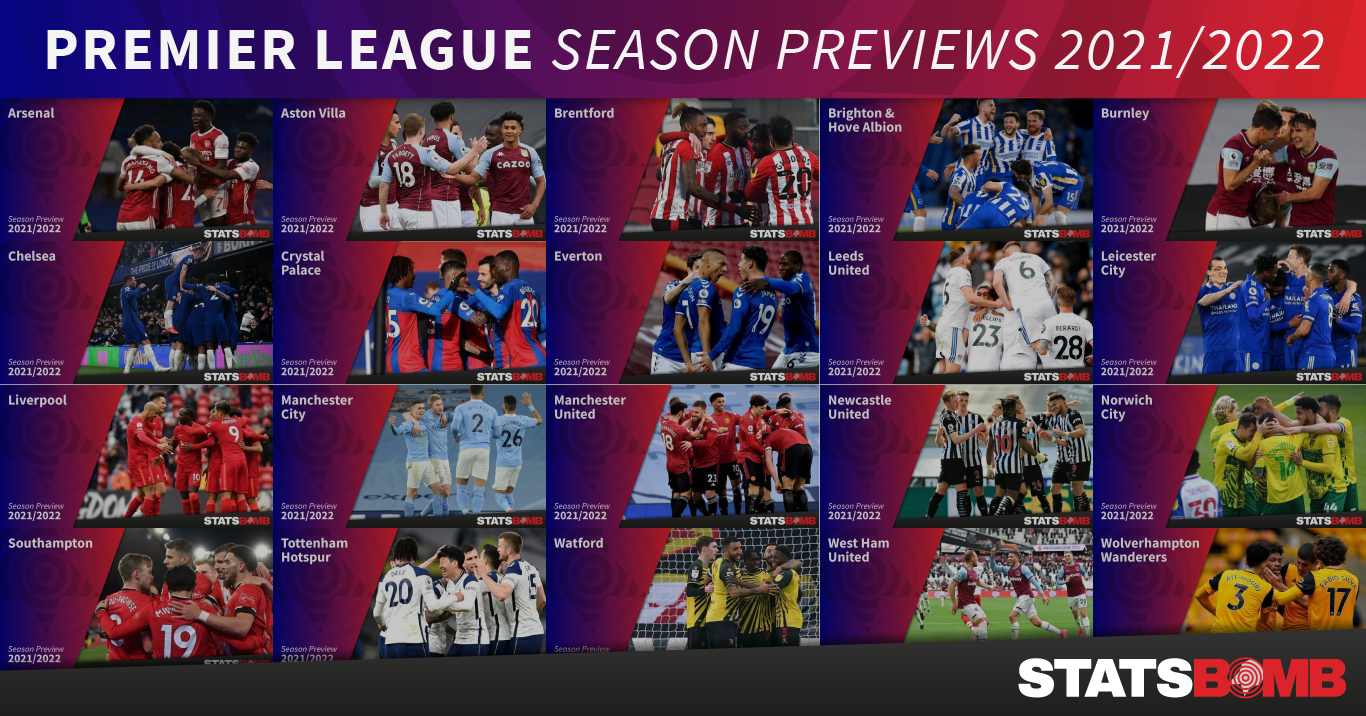Where do you go from here? In 2012, Chelsea sacked their concept manager, Andre Villas-Boas, handed the reigns to a club legend, Roberto Di Matteo, finished miles off the pace with 64 points then promptly went out and won the Champions League.
In 2021, Chelsea sacked their club legend manager, Frank Lampard, handed the reigns to a concept manager, Thomas Tuchel, finished miles off the pace with 67 points then promptly went out and won the Champions League. It took Tuchel 123 days to hit that high point and he did it by focusing first and foremost on defence.
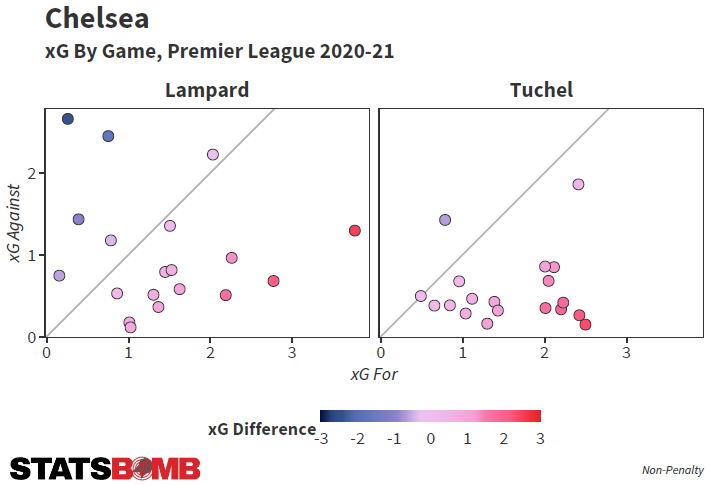
In 19 Premier League games under Tuchel, Chelsea gave up more than one expected goal twice: firstly against West Brom in the freakish 5-2 defeat and latterly against Manchester City, two games from the end of the season in a match they won regardless.
The difference that Tuchel made to the team was as stark as it was swift and they were clear second best behind Manchester City in the back half of 2020-21. In their first ten game phase under Tuchel the team closed everything right down. The attack was yet to gel together but the defence gave up a remarkable four xG and conceded just two goals.
By season's end Chelsea's Tuchel era metrics were in hailing distance of Manchester City with a +1 xG difference per game across his reign (for the same period City were +1.2) with the impressive side still mainly defence (0.56 xG against) while at least in terms of process, the attack had perked up and landed at a decent 1.56 xG per game.
Only two teams have put up metrics of this ilk in recent seasons: Liverpool and Manchester City. It may be a short spell, but the strong indicator here is that Tuchel has managed to organise Chelsea's high quality, high potential squad into a shape that is capable of contending. Lampard had the makings but not the execution, Tuchel had both.
So what did he do to harness the talent in this squad?
First up the obvious switch from Lampard's general 4-3-3 and variations towards a distinct 3-4-3. This had the instant benefit that if you were a centre back, then welcome aboard, you now had a great chance of getting good minutes regardless of what had been happening so far in the season (hello Antonio Rüdiger, Andreas Christensen), ditto anyone who had experience of playing wing-back, let's say in a league winning side playing a similar formation (come on down Marcos Alonso) and anyone called Mason Mount, mainly because he's literally the ideal player for any team playing any formation, something on which both Lampard and Tuchel agreed, more later. Here's the minutes splits across the squad:
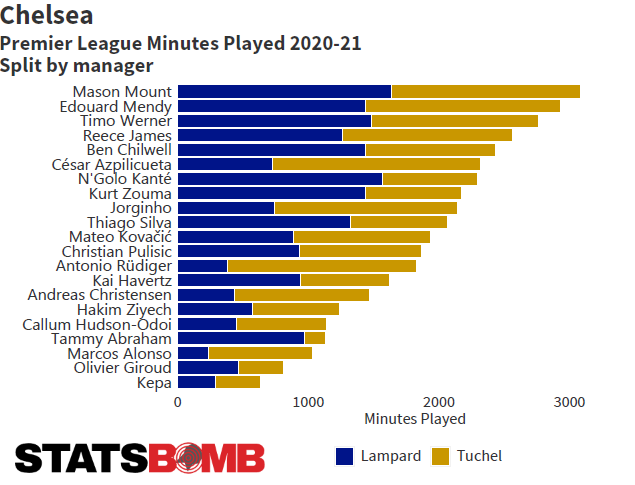
Chelsea had a relatively injury-light 2020-21 (and the squad to survive it too) so the balance between the Lampardis and Tuchelistas is fairly reliable to spot. Each manager loved Mount, Edouard Mendy, Timo Werner and Reece James--these were a core four and come rain or shine, their managers picked them. More Lampard favoured were Ben Chilwell (a bit), N'Golo Kanté, Kurt Zouma and Tammy Abraham while Tuchel was big on César Azpilicueta, Jorginho, Rüdiger, Christensen and Alonso. Kanté and Chilwell get a pass here too really as once the business end of the Champions League kicked in they were solid picks in that tournament, as was Kai Havertz.
The risk players for this squad are quite clear: Abraham was losing minutes to Olivier Giroud, who has now left and has likely seen his potential position gazumped entirely by Romelu Lukaku (a transfer for him seems imminent too). Hakim Ziyech struggled to see pitch time for either manager last season and at the moment looks like the big miss/square peg among the high class attackers purchased in summer 2020, despite quite good statistical contribution when on the pitch. Christian Pulisic saw more game time at the back end of the season, enough to think he's likely to stick around and feature, while Callum Hudson-Odoi remains a statistical marvel but repeatedly flits in and out of favour whoever is in charge.
Seriously, Hudson-Odoi is fascinating.
Snooping around earlier in the summer I spied this and tweeted it: More than 1000 minutes, more than 2.4 OPEN PLAY key passes per 90? 3 qualifiers in the PL, De Bruyne, Grealish and... Hudson-Odoi
Then when I was poking at our new OBV model numbers for this article, he leapt off the page again, albeit predominantly in the Lampard era where he was clocking 0.56 OBV/90. This was right around better players in the league, albeit in pretty small minutes, which cautions against excitement, especially when you have The Real Deal Mason Mount in the mix:
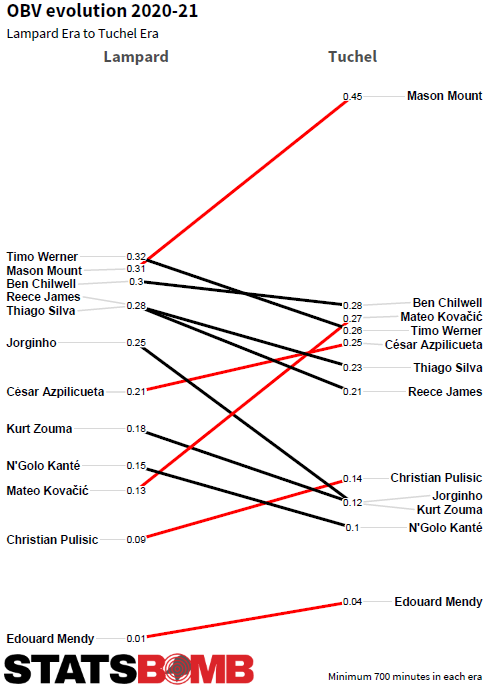
People sometimes like to argue about model outputs, but I'm not interested in that here, as Mason Mount is constantly selected and great.
In ways he reminds me of Italian midfielders of the late 1990s, an Angelo Di Livio or Massimo Ambrosini or Alessio Tacchinardi, players that were surrounded by flair and technical brilliance yet absolute team soldiers and vital cogs.
That possibly denigrates everyone I'm talking about here, particularly Mount, who can contribute well at the business end of the pitch too, yet it's really not meant to, Mount himself has had to semi-justify his position in the Chelsea and England team for the best part of two years, but Lampard knew his worth, and perhaps saw something of himself in him, succeeding through will and graft where more naturally gifted rivals faltered.
He started him in 49/57 league games for Chelsea and only missed pitch time in two. Tuchel is under no illusions either, in May saying "He is crucial for our game, he is an absolutely key player" and the fans voted him Chelsea Player of the Year last season. And he's still just 22! Unfortunately fellow midfield man Jorginho took the Champions League / Euros double, to hit his own high note, but let's move beyond that for now and celebrate Mount, who also successfully boosted all of his expected metrics moving from Lampard's team to Tuchel:
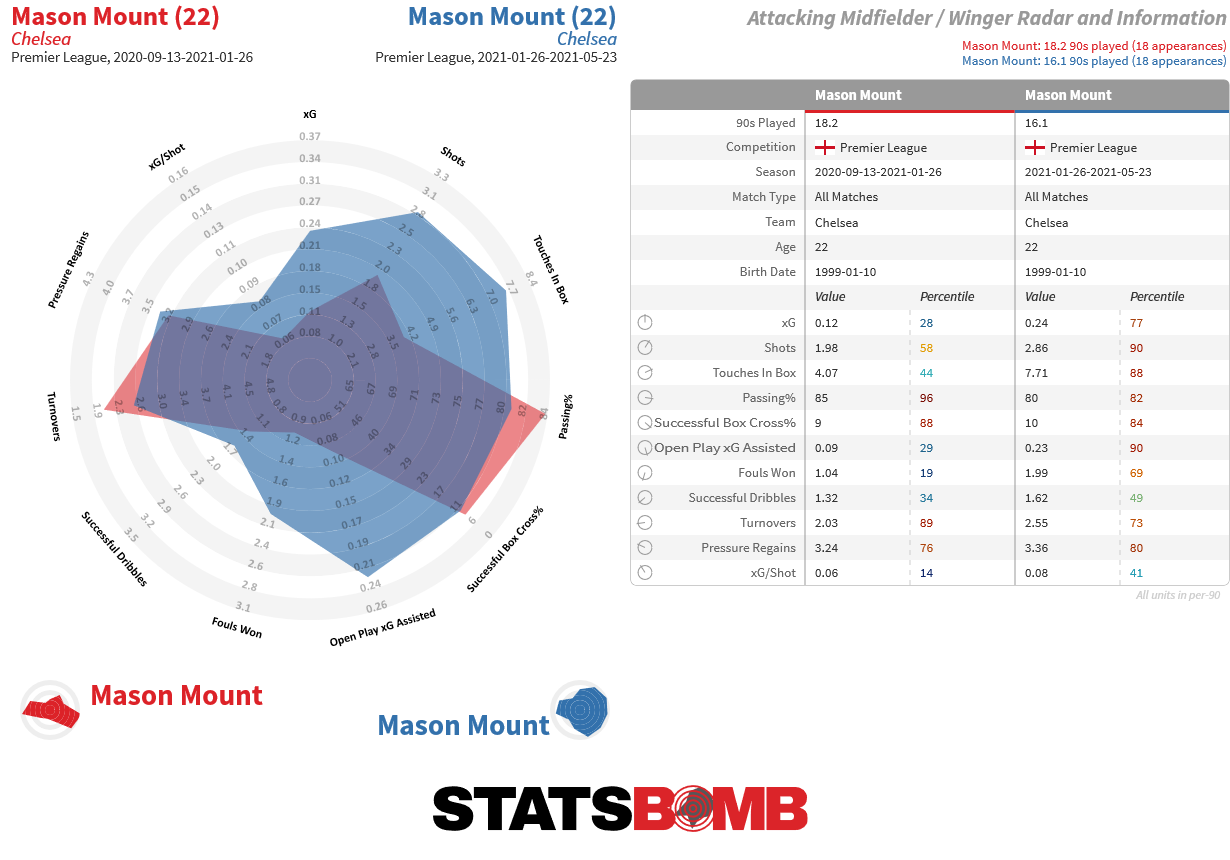
Sorry, a sideline.
So what did Tuchel do?
We established that the defence improved, and it did so in the most desirable way: they reduced the volume of shots they were giving up and the shots they did give up were harder to score than the ones they had been giving up before, magic!
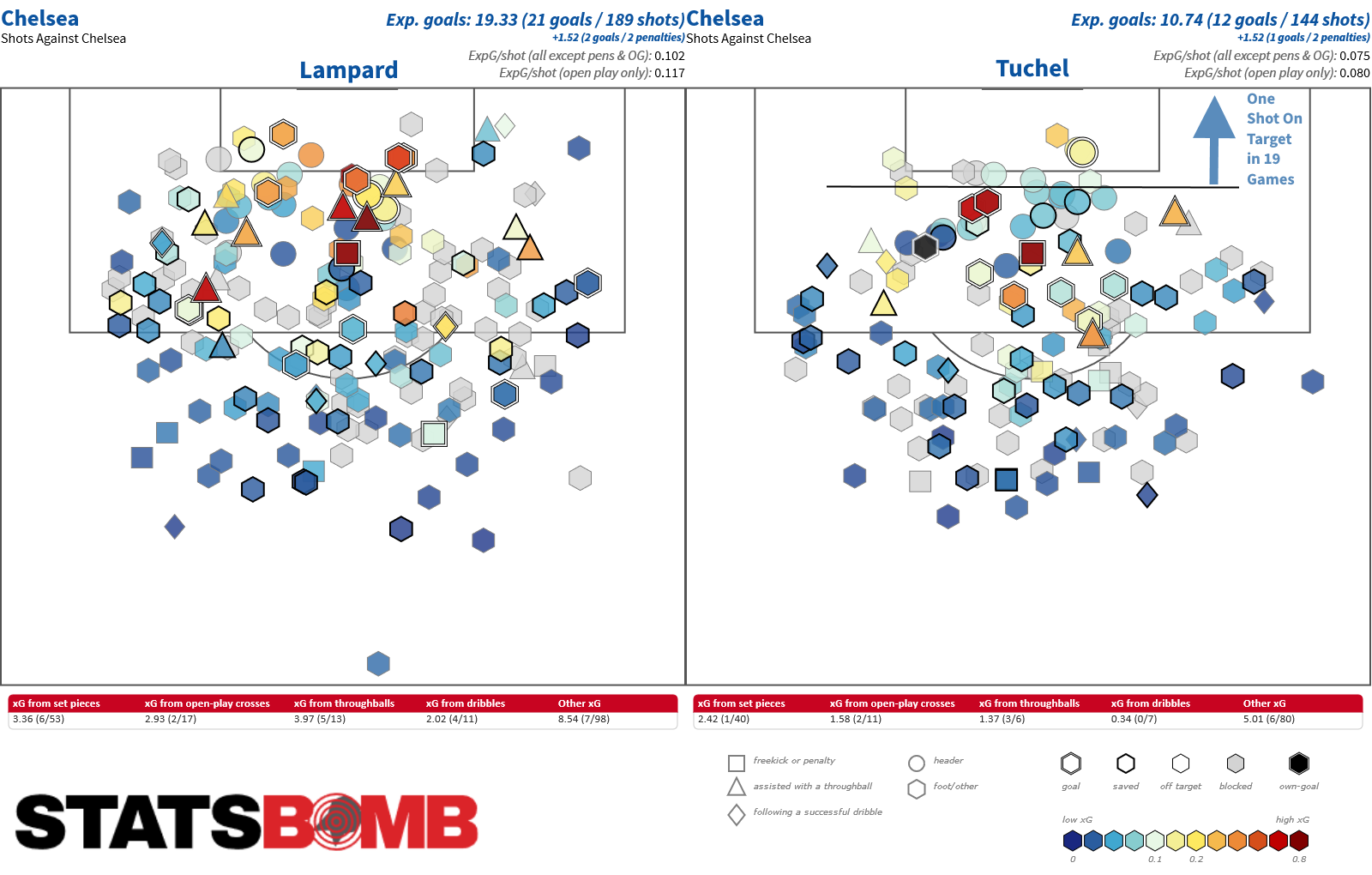
Check out the annotation, one shot!
For the record a Christian Benteke header, you can maybe understand how the scout report may have missed on that as Benteke's long game of undershooting xG for multiple seasons paid off with decent goal returns in 2020-21. Overall, reducing the volume and quantity of shots allowed came across all facets of the game.
They halved the volume of "clear" (just the keeper to beat) shots they allowed, reduced opposition set piece effectiveness and gave up fewer counter attacking shots. Part of how they got there was that Chelsea upped their tempo out of possession. Under Lampard they were fairly active and ranked fourth to sixth for all of PPDA (Passes Per Defensive Action), the average height of their defensive actions and their overall responsiveness to pressuring opposition ball receipts (our "aggression" metric).
It took a little time under Tuchel--recall a handful of slower, possession heavy chance-lite fixtures in the early weeks--but during the second half of the season, they were second for PPDA (behind Leeds, of course), third for height of defensive actions (behind Man City and a resurgent Liverpool) and second for aggression (behind Leeds again), all notable moves in a more active direction.
Just for raw pressure events and defensive actions, the workload went up, up, up before coming down, down, down just as they were all in on the Champions League, but we can see here more events, and a higher proportion of pressure events as Tuchel's tenure settled in. They have the makings to play this way now and be effective with it:

Some of the methodology also involved ball-hogging dominating possession: they played more passes than Manchester City in their 2-1 win and routinely outpassed weaker teams by large volumes. But they could win in other ways too, as a 1-0 victory over Liverpool showed. They played a fairly rigid and deep 3-4-[big gap]-3 and outworked their opponents while giving up next to nothing shot (7) or xG (0.28) wise.
On the largest stage, the Champions League final was not dissimilar. How do you improve a Champions League winning team that has shown it can outwork, out pass, out shoot and out defend its opponents, seemingly at will?
Chelsea are eternally in "win-now" mode and "win-now" mode means buying Serie A's best striker for close to £100m to end debates around how you can man your front three, whether a false 9 will work best or if your very-good-but-to-my-mind-not-quite-good-enough-to-lead-a-Chelsea-front-line-perhaps-a-tier-lower-23-year-old-academy-graduate is the right choice. And why have they done this? Finishing.
The divergence between Chelsea's stellar Tuchel era metrics and the reality of clambering into the top four slots can be blamed on one thing: the attack fired well under expected values under Tuchel. Analytics 101 remains get the process right and let the variance work itself out. In truth this was a team effort.
Thirteen Chelsea players took ten or more shots in the Premier League under Tuchel and of those thirteen, a meagre two of them exceeded their goal expectation: Kurt Zouma (one goal from 13 shots and 0.85 xG) and Marcos Alonso (two goals from 20 shots and 1.62 xG). This is frankly ridiculous, and not really a reflection of the quality of Chelsea's players.
Werner and Havertz may have had personally less impressive seasons than they may have hoped but they're not obviously sub-par finishers, nor historically was Olivier Giroud. One specific aspect of play they did not get from their forward corps was as follows:
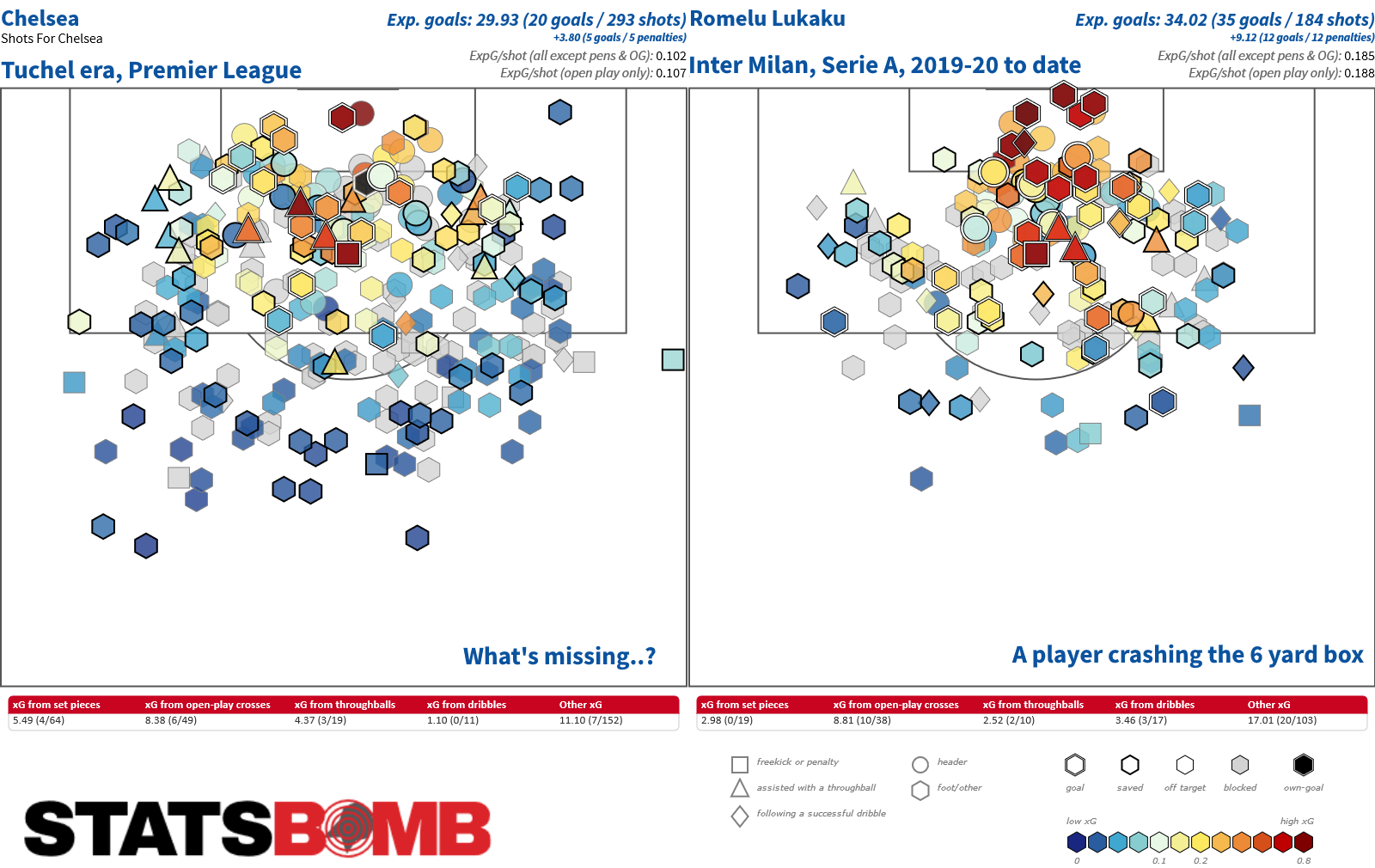
Yes; a guy crashing the six yard box. It's not that Lukaku is a noted plus finisher, more that he is a reliable scorer--he will take up the positions you need from your main striker and score goals. To this regard Lukaku does have the vibe of a missing piece and seven years on from departing for a decent fee is returning.
It will be hoped that as a focal point, Lukaku can enable his equally talented colleagues to thrive around him, and regardless he's surely as close to guaranteed as any Chelsea striker to chip in handily. More broadly on personnel, while clued up fans may bemoan the loss of Abraham and Fikayo Tomori, they're getting very good fees for these players and the supply line from their youth teams to the first team is doing just great, with Mount, Christensen and James all hitting big recently.
Projection
There's a disconnect between stellar Tuchel-era metrics and winning the Champions League contrasting with 2020-21 points accrual (76 point pace) and bookmaker expectations (around 76-78 points). This plants Chelsea firmly alongside Liverpool in a "best-of-the-rest" category, a couple of clips ahead of Manchester United yet trailing Manchester City.
In real terms they will likely need to bounce forward another ten points on top of that and make a +20 points season jump to season to contend for the title. With a summer of planning for Tuchel, a stable squad that isn't undergoing much remedial work and the natural belief of a successful team, it's possibly easier imagining Chelsea steering upwards once more than not.
With Pep Guardiola, Jürgen Klopp and now Tuchel in the Premier League mix, it would be thrilling to see these three teams battling hard on all fronts and this season is well set for these coaching titans to tee off. Evidently Tuchel has not found long term stability in his managerial career, but with this squad and the big prize already in his back pocket, he may be primed to stay a good while yet. The league is better for that.
Want to read about another team? The rest of our Premier League season previews can be found here If you're a club, media or gambling entity and want to know more about what StatsBomb can do for you, please contact us at Sales@StatsBomb.com We also provide education in this area, so if this taste of football analytics sparked interest, check out our Introduction to Football Analytics course Follow us on Twitter in English and Spanish and also on LinkedIn
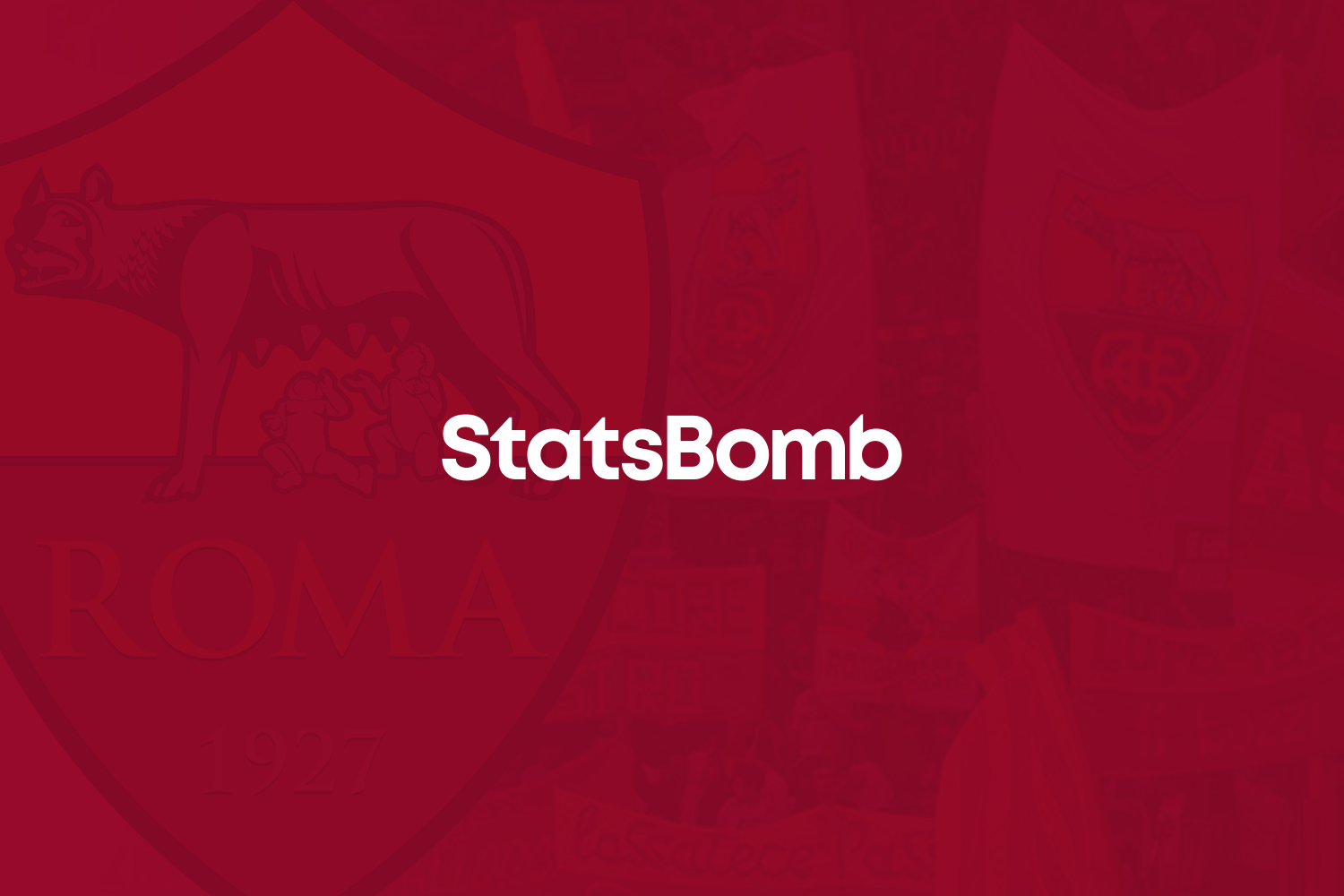
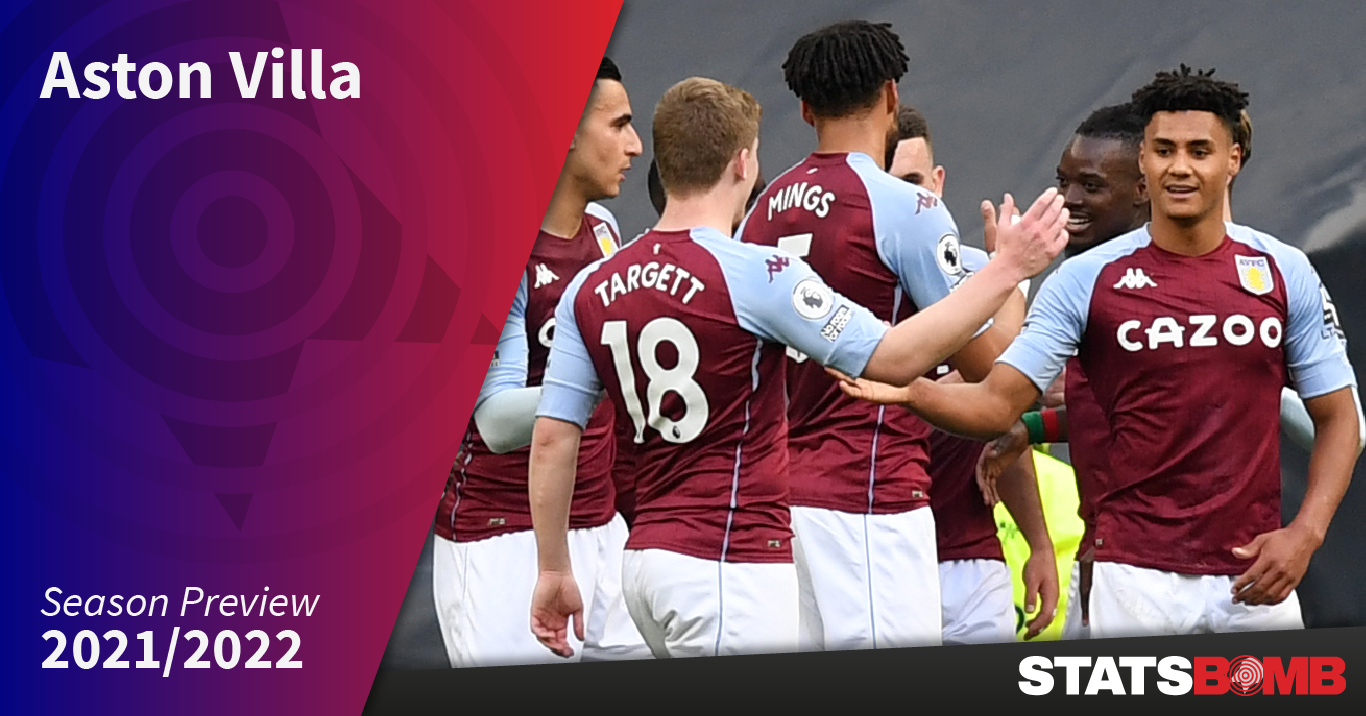
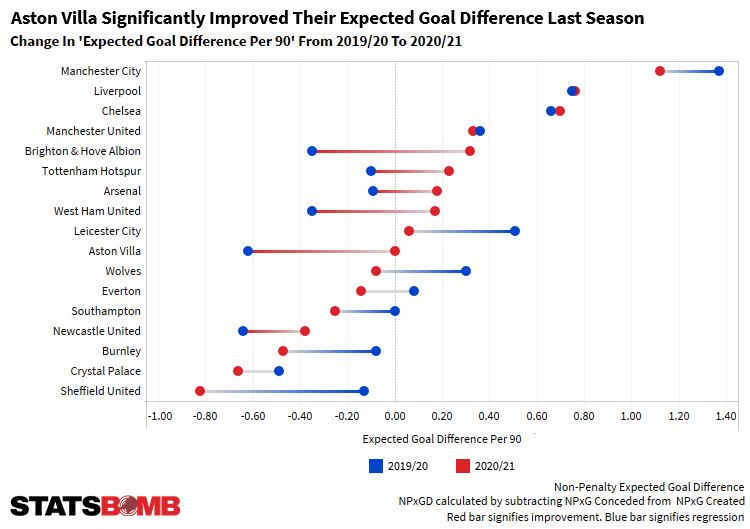 They improved at both ends of the pitch, adding 0.28 xG per game onto the attack (~10 goals a season) and shaving -0.34 xG per game off the defence (~13 goals a season). At the back, they conceded fewer shots (15.8 – 14.1) that were of a worse quality measured by xG per shot (0.10 – 0.09). They were defending better as a collective, with goalkeeper Emiliano Martínez having a stellar season when the opposition did manage to create an attempt on goal. Digging into what they did to limit the opposition, it becomes clear that Villa started to protect the goal more effectively, defending their penalty box with more bodies and a greater emphasis on making it difficult for the opposition to score. The team became more balanced and more challenging to break down – they forced their opponents average shot distance back by more than a metre, 15.8m in 2019/20 versus 16.9m in 2020/21. A difference that sounds small, but their opposition shots were 6th-closest in the league before and 17th-closest after. Besides being more difficult to break down, they also effectively prevented the opposition from getting a clear sight of goal. Villa averaged the most defenders behind the ball when their opponents took a footed shot in the box, and the most defenders between ball and goal in the same circumstances. Naturally, they also had one of the best block rates of those same shots. You can’t concede goals if the ball doesn’t test the ‘keeper in the first place.
They improved at both ends of the pitch, adding 0.28 xG per game onto the attack (~10 goals a season) and shaving -0.34 xG per game off the defence (~13 goals a season). At the back, they conceded fewer shots (15.8 – 14.1) that were of a worse quality measured by xG per shot (0.10 – 0.09). They were defending better as a collective, with goalkeeper Emiliano Martínez having a stellar season when the opposition did manage to create an attempt on goal. Digging into what they did to limit the opposition, it becomes clear that Villa started to protect the goal more effectively, defending their penalty box with more bodies and a greater emphasis on making it difficult for the opposition to score. The team became more balanced and more challenging to break down – they forced their opponents average shot distance back by more than a metre, 15.8m in 2019/20 versus 16.9m in 2020/21. A difference that sounds small, but their opposition shots were 6th-closest in the league before and 17th-closest after. Besides being more difficult to break down, they also effectively prevented the opposition from getting a clear sight of goal. Villa averaged the most defenders behind the ball when their opponents took a footed shot in the box, and the most defenders between ball and goal in the same circumstances. Naturally, they also had one of the best block rates of those same shots. You can’t concede goals if the ball doesn’t test the ‘keeper in the first place. 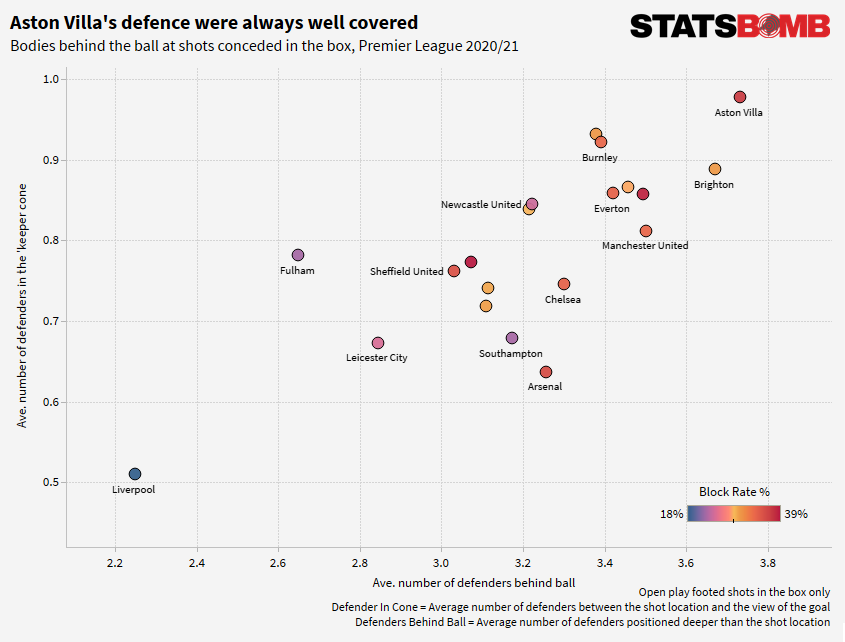 As good as the improvement was, Villa struggled in the second half of the season. They closed the season with a 4-4-6 record to take just 16 points from 14 games, worth 43 points when extrapolated over the whole season, solid bottom-half form. It could be an indicator of what may come next season, with the run coinciding with the injury to *klaxon* Jack Grealish (I made it this far without saying his name), but even with signings brought in to replace him, there was still a worrying decline in the underlying numbers. Both defence and attack got worse.
As good as the improvement was, Villa struggled in the second half of the season. They closed the season with a 4-4-6 record to take just 16 points from 14 games, worth 43 points when extrapolated over the whole season, solid bottom-half form. It could be an indicator of what may come next season, with the run coinciding with the injury to *klaxon* Jack Grealish (I made it this far without saying his name), but even with signings brought in to replace him, there was still a worrying decline in the underlying numbers. Both defence and attack got worse. 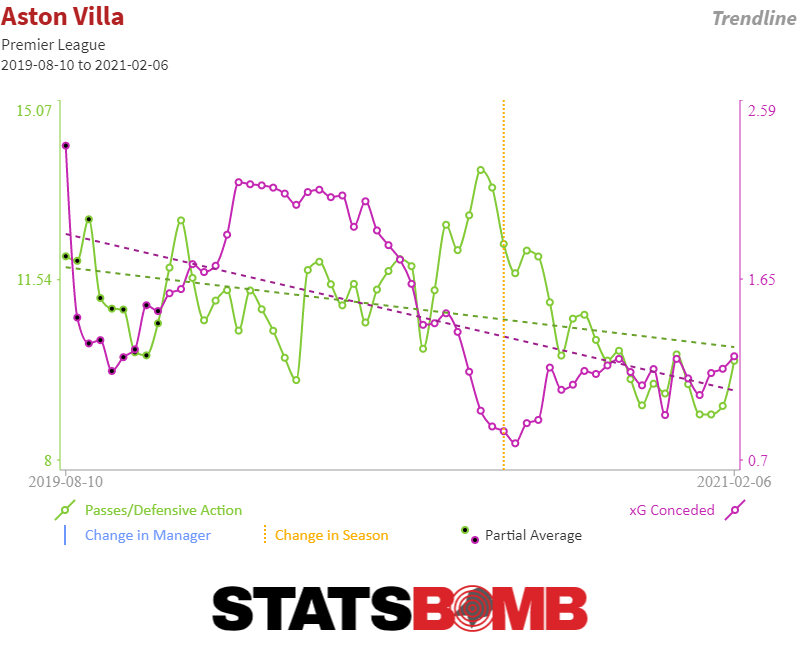 Right then, let’s hang around no longer. Time to address the big question that everyone’s asking. How will Villa cope without Jack Grealish? A look at Villa’s most common build-up patterns has the thick-calved Brummie’s footprints all over them. Nearly all of their play was filtered down the left-hand side where Grealish would situate and perform his best work, combining with Ollie Watkins and Matt Targett and laying on chances for his teammates.
Right then, let’s hang around no longer. Time to address the big question that everyone’s asking. How will Villa cope without Jack Grealish? A look at Villa’s most common build-up patterns has the thick-calved Brummie’s footprints all over them. Nearly all of their play was filtered down the left-hand side where Grealish would situate and perform his best work, combining with Ollie Watkins and Matt Targett and laying on chances for his teammates. 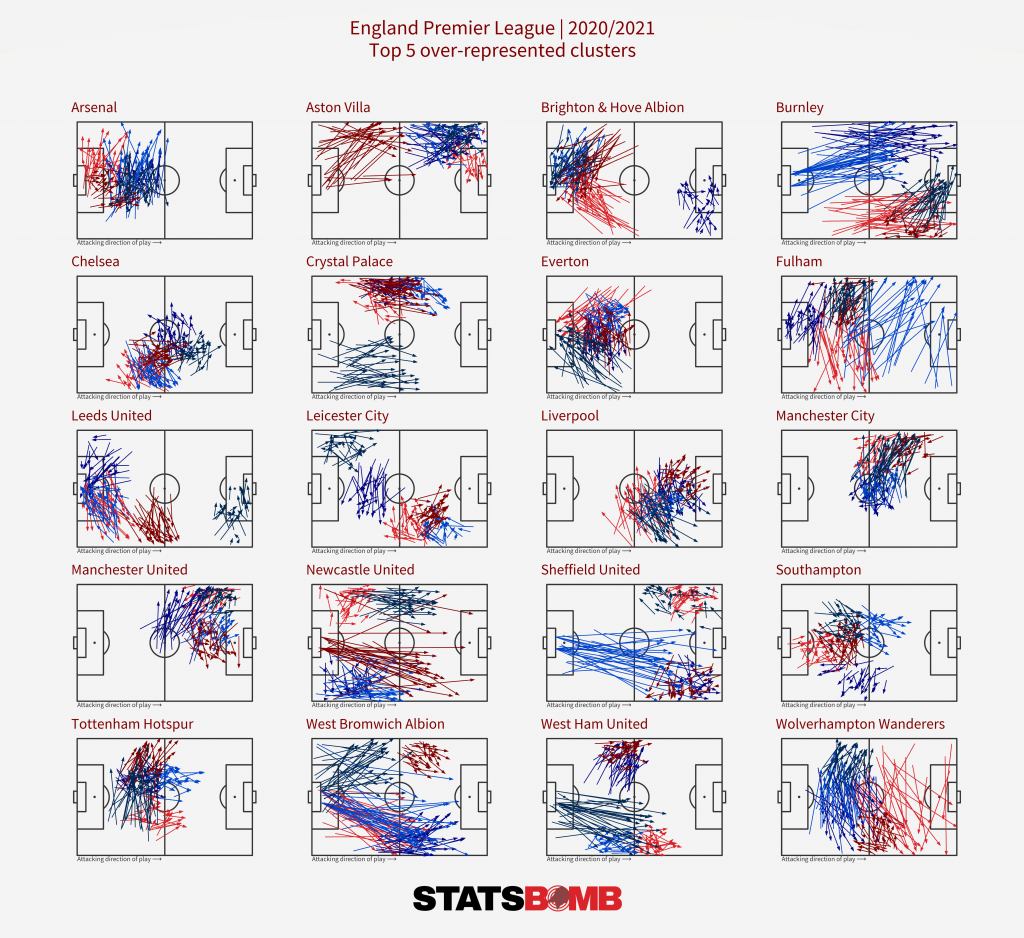
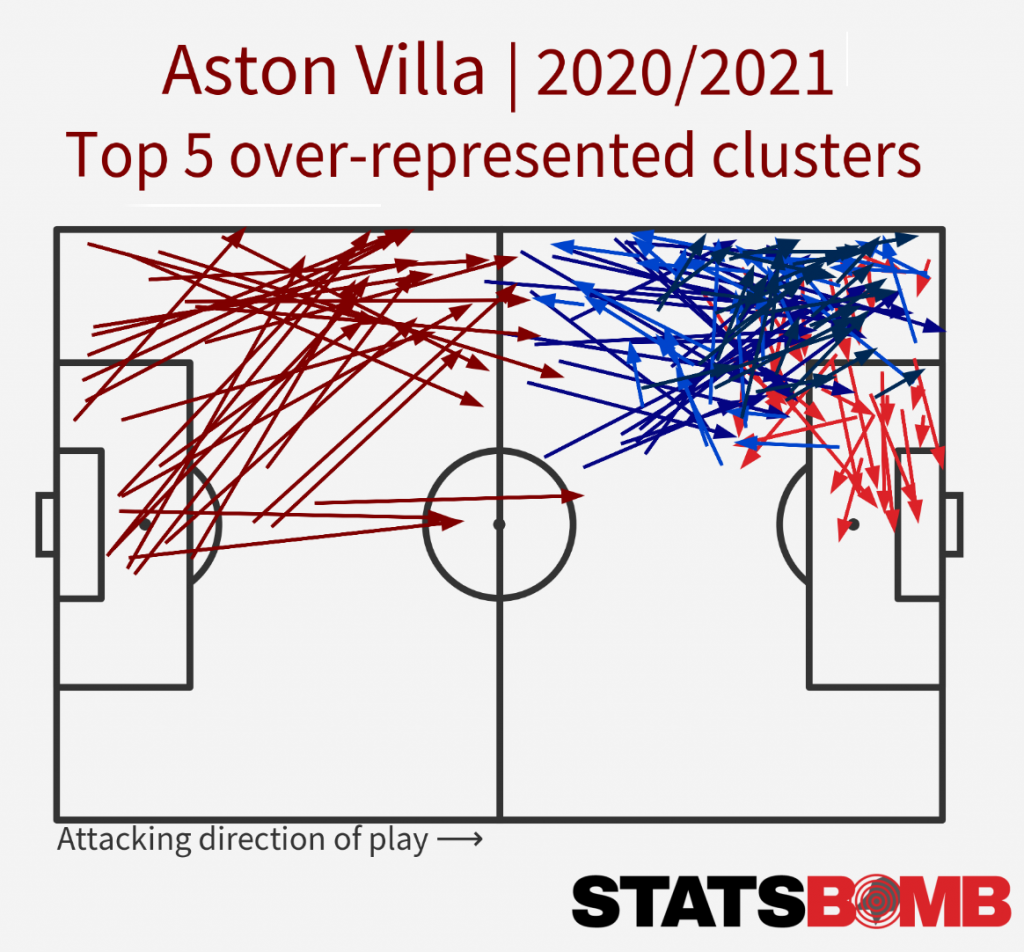 Grealish was on a different level to his teammates last season, and indeed most of the Premier League. Our new possession value model, On-Ball Value, assigns a positive or negative value to each action performed on the pitch based on its impact on a team’s chances of scoring or conceding. Players such as Kevin De Bruyne, Trent Alexander-Arnold, and Mohamed Salah all performed well by this measure. Guess who topped the league?
Grealish was on a different level to his teammates last season, and indeed most of the Premier League. Our new possession value model, On-Ball Value, assigns a positive or negative value to each action performed on the pitch based on its impact on a team’s chances of scoring or conceding. Players such as Kevin De Bruyne, Trent Alexander-Arnold, and Mohamed Salah all performed well by this measure. Guess who topped the league? 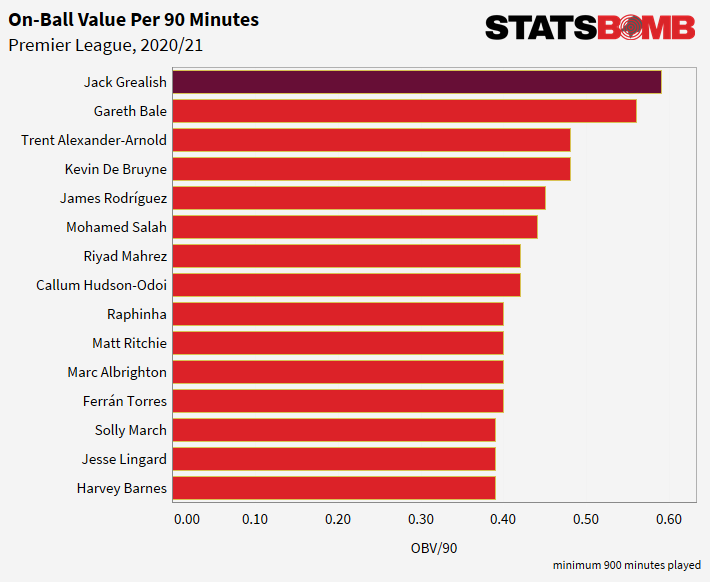 Looking purely at chance creation output metrics, Grealish’s importance to Villa’s attacking play becomes apparent. He was responsible for an overwhelming portion of their chance creation – 23% of Villa’s assisted xG was created by Grealish – and he was also responsible for taking 9% of their xG himself, behind only Ollie Watkins, Bertrand Traoré and Anwar El Ghazi.
Looking purely at chance creation output metrics, Grealish’s importance to Villa’s attacking play becomes apparent. He was responsible for an overwhelming portion of their chance creation – 23% of Villa’s assisted xG was created by Grealish – and he was also responsible for taking 9% of their xG himself, behind only Ollie Watkins, Bertrand Traoré and Anwar El Ghazi. 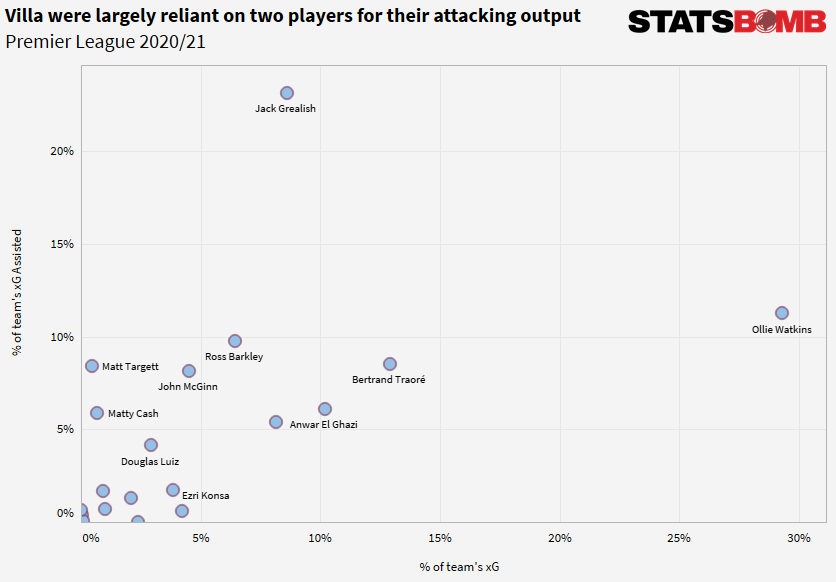 The scatterplot highlights the need for Villa to become less reliant on Grealish – of which they have no choice – and Ollie Watkins, with Watkins responsible for 29% of Villa’s xG. It’s not unusual for a team to have a focal point who finishes most of their chances, but it does leave them in a precarious position without a) adequate contributions from elsewhere in the team and b) quality backup should Watkins get injured. Upon Grealish’s nine-figure sale to Manchester City, Villa CEO Christian Purslow published a statement that specifically addressed the transfer. In the statement, he said:
The scatterplot highlights the need for Villa to become less reliant on Grealish – of which they have no choice – and Ollie Watkins, with Watkins responsible for 29% of Villa’s xG. It’s not unusual for a team to have a focal point who finishes most of their chances, but it does leave them in a precarious position without a) adequate contributions from elsewhere in the team and b) quality backup should Watkins get injured. Upon Grealish’s nine-figure sale to Manchester City, Villa CEO Christian Purslow published a statement that specifically addressed the transfer. In the statement, he said: 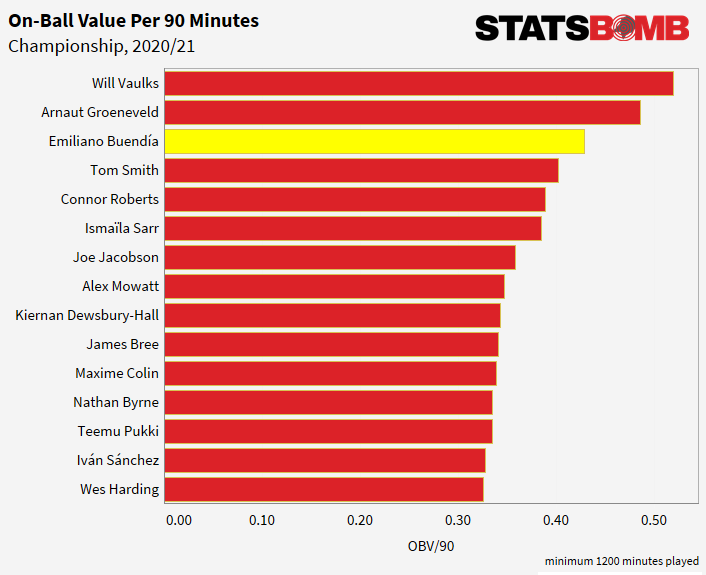 Leon Bailey is an established top-tier player on the European circuit after four seasons in the Bundesliga with Bayer Leverkusen. Last season was arguably Bailey’s strongest since moving to Germany, contributing nine goals and seven assists as Leverkusen finished 6th to qualify for the Europa League. His experience as a high performer in a big five league and on the European stage, having played in the Champions League and the Europa League, makes him an exciting prospect to evaluate.
Leon Bailey is an established top-tier player on the European circuit after four seasons in the Bundesliga with Bayer Leverkusen. Last season was arguably Bailey’s strongest since moving to Germany, contributing nine goals and seven assists as Leverkusen finished 6th to qualify for the Europa League. His experience as a high performer in a big five league and on the European stage, having played in the Champions League and the Europa League, makes him an exciting prospect to evaluate. 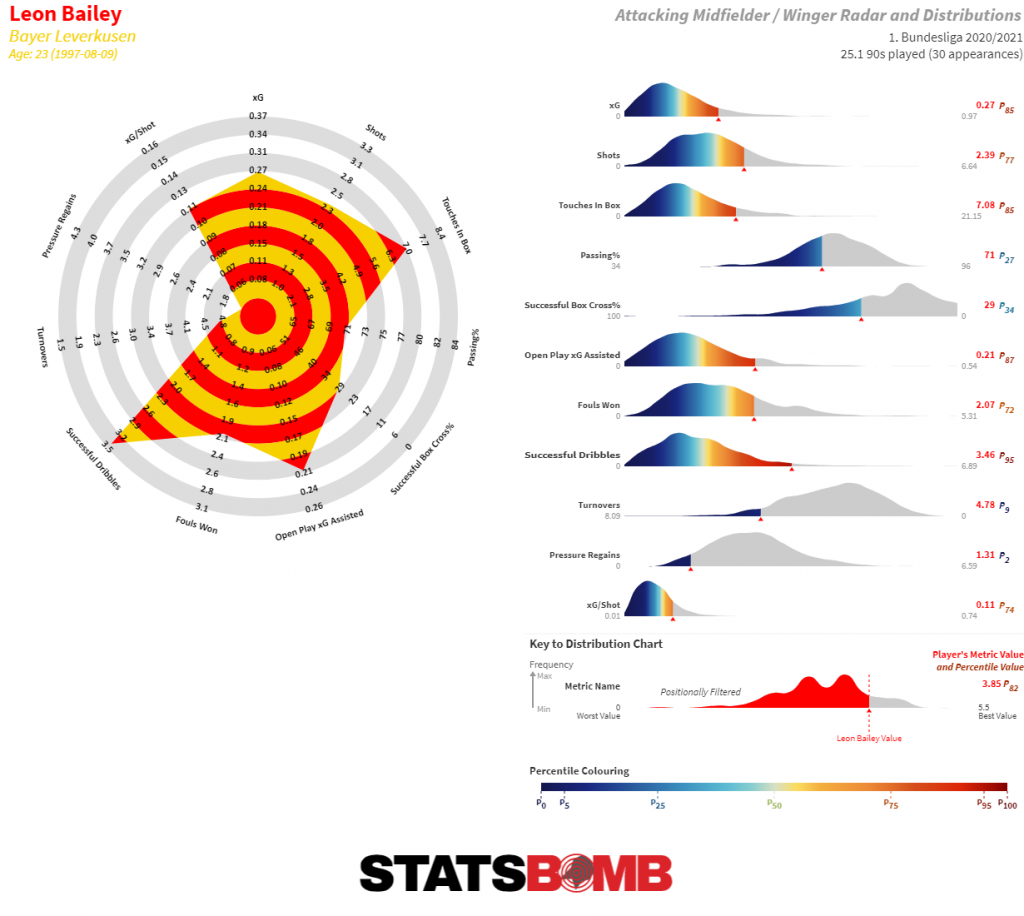 Where Buendía may provide the guile, the incisive passing, and the chance creation, Bailey’s profile leans more towards that of a dribbler and zone-mover, who can contribute goals from inside the penalty box as well. Bailey completed 3.5 dribbles per 90 in 2020/21 (5th in the Bundesliga) and had an average carry length of 6.5 metres (9th). Bailey looks like the most likely candidate to replace Grealish’s elite ball-carrying ability.
Where Buendía may provide the guile, the incisive passing, and the chance creation, Bailey’s profile leans more towards that of a dribbler and zone-mover, who can contribute goals from inside the penalty box as well. Bailey completed 3.5 dribbles per 90 in 2020/21 (5th in the Bundesliga) and had an average carry length of 6.5 metres (9th). Bailey looks like the most likely candidate to replace Grealish’s elite ball-carrying ability. 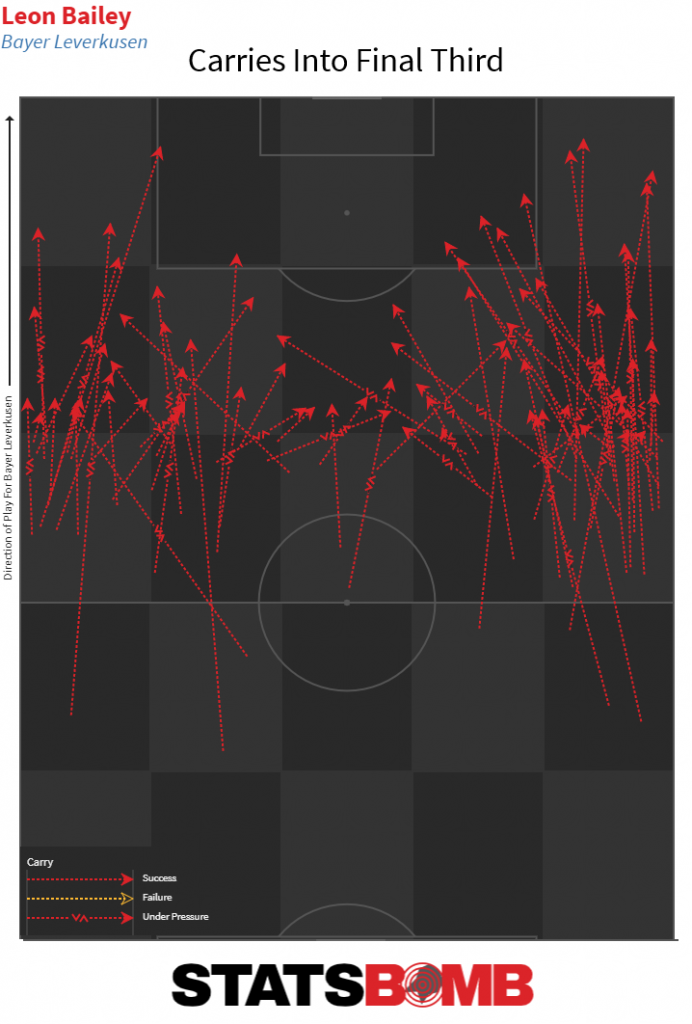 It’s also encouraging that he doesn’t seem prone to wasting possession with shots from range, his xG per shot of 0.11 is towards the higher end you’d expect from a wide forward - a trait that he appears to have had throughout his career. The third signing was that of Danny Ings, a transfer that came as a surprise to everyone except Danny Ings, Southampton, or Aston Villa. Ings is a known quantity in the Premier League so it’s obvious what he brings to the squad: work rate out of possession and a steady contribution to the Goals For column. As part of Operation Replace Jack, Ings is a less direct replacement, but should play a key role in easing the goalscoring burden placed on Ollie Watkins while also giving Dean Smith the option to play two up front. Age and injury record have been raised as possible red flags against the fee outlay, but he’s a player that you’d trust to contribute goals--as long as the new Villa setup creates chances.
It’s also encouraging that he doesn’t seem prone to wasting possession with shots from range, his xG per shot of 0.11 is towards the higher end you’d expect from a wide forward - a trait that he appears to have had throughout his career. The third signing was that of Danny Ings, a transfer that came as a surprise to everyone except Danny Ings, Southampton, or Aston Villa. Ings is a known quantity in the Premier League so it’s obvious what he brings to the squad: work rate out of possession and a steady contribution to the Goals For column. As part of Operation Replace Jack, Ings is a less direct replacement, but should play a key role in easing the goalscoring burden placed on Ollie Watkins while also giving Dean Smith the option to play two up front. Age and injury record have been raised as possible red flags against the fee outlay, but he’s a player that you’d trust to contribute goals--as long as the new Villa setup creates chances. 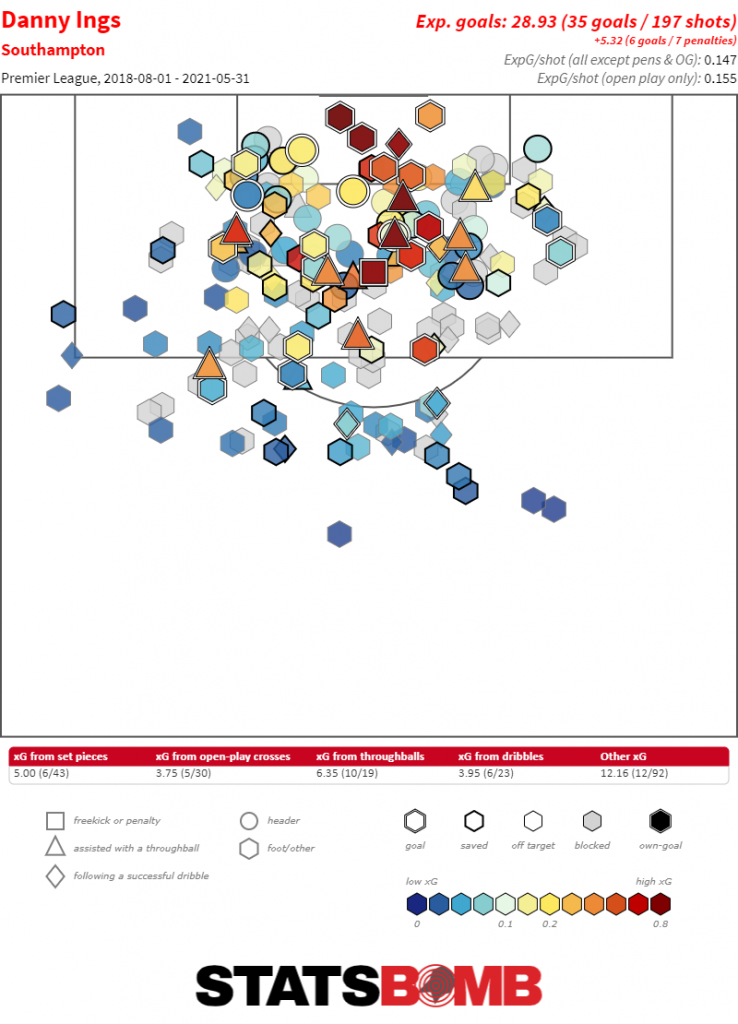 Projection So then, we await to see what happens when you take one of the best Premier League players out of a midtable side. The logic to Villa’s business is sound; they were overreliant on Grealish for several aspects of their play, and the three players should decentralise their build-up and make the team better as a whole, while also lessening the risk should injuries occur, a risk Villa are all too aware of after what happened at the end of last season. The points spreads predict a minor regression for the club, still in midtable but benchmarked at 49 points, a six-point drop-off from 2020/21. The impact of the new players is uncertain and there are valid concerns over the form Villa showed in the run-in, so this seems like a more than reasonable benchmark to aim for in season one of the regeneration. It’s important to remember that Villa spent multiple seasons in the Championship in recent history; back-to-back midtable finishes would be a sound return in establishing themselves in the Premier League once more.
Projection So then, we await to see what happens when you take one of the best Premier League players out of a midtable side. The logic to Villa’s business is sound; they were overreliant on Grealish for several aspects of their play, and the three players should decentralise their build-up and make the team better as a whole, while also lessening the risk should injuries occur, a risk Villa are all too aware of after what happened at the end of last season. The points spreads predict a minor regression for the club, still in midtable but benchmarked at 49 points, a six-point drop-off from 2020/21. The impact of the new players is uncertain and there are valid concerns over the form Villa showed in the run-in, so this seems like a more than reasonable benchmark to aim for in season one of the regeneration. It’s important to remember that Villa spent multiple seasons in the Championship in recent history; back-to-back midtable finishes would be a sound return in establishing themselves in the Premier League once more. 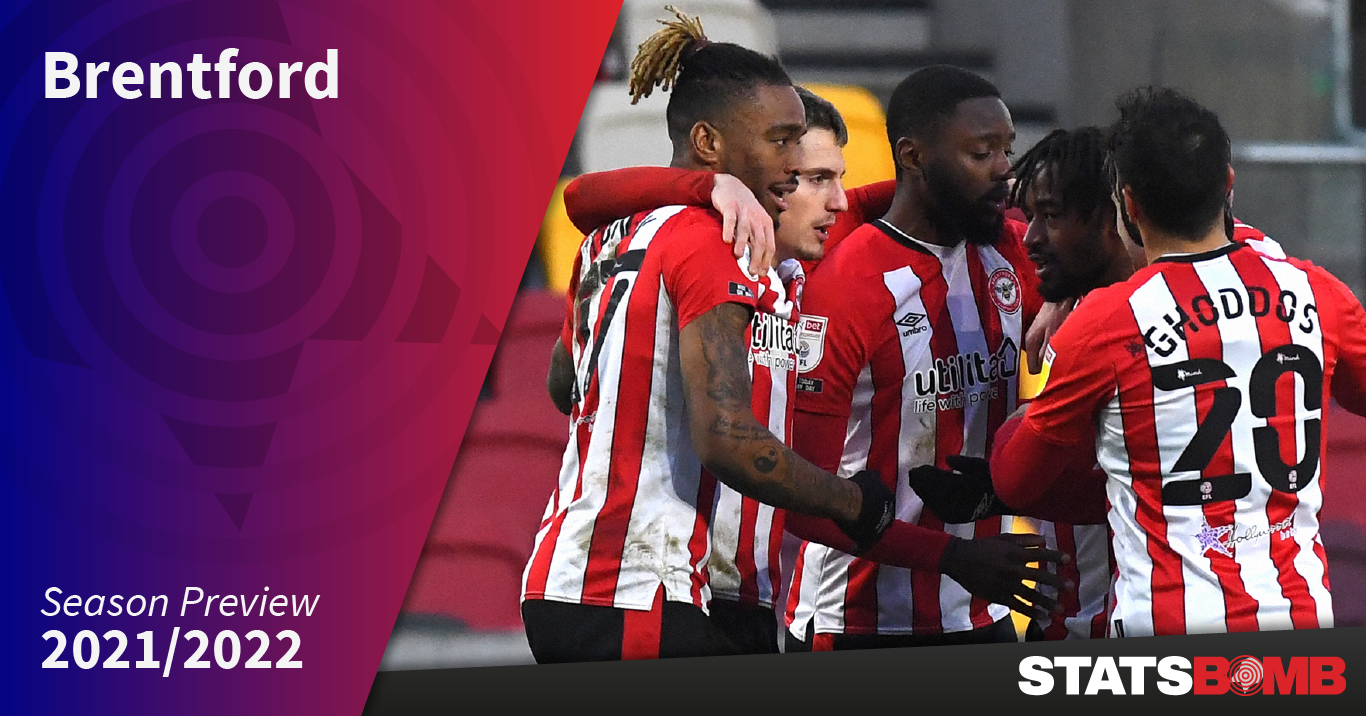
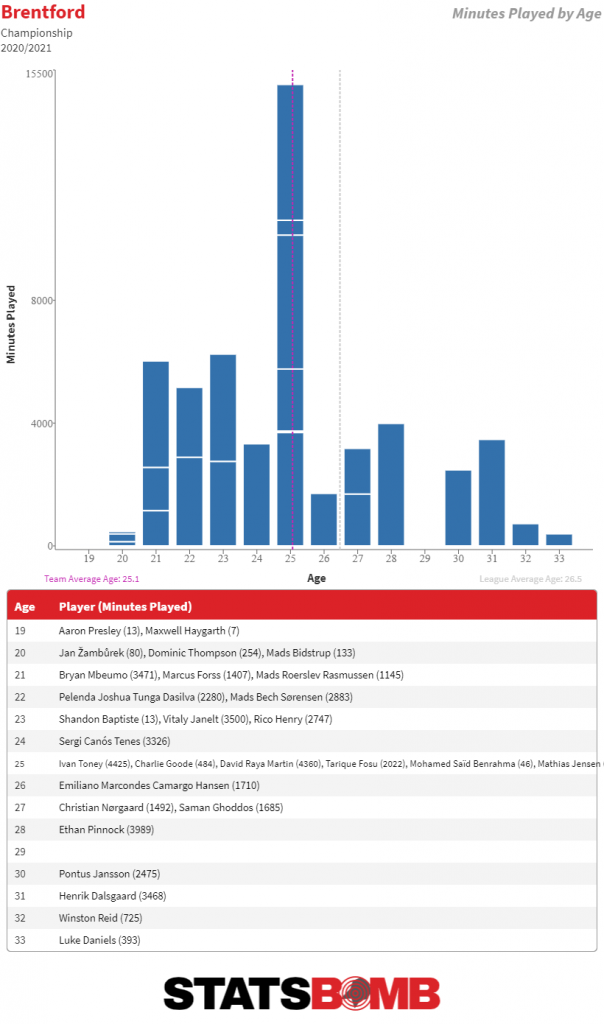
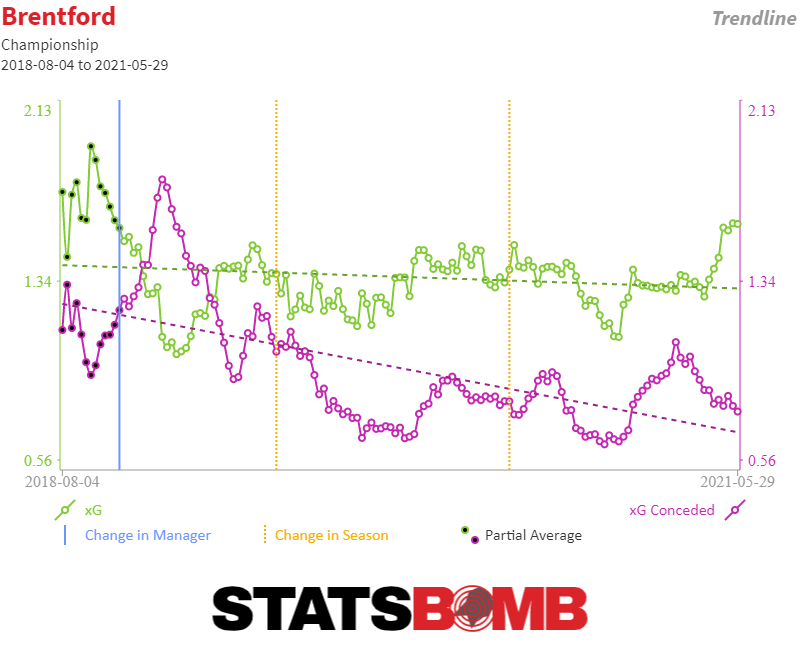
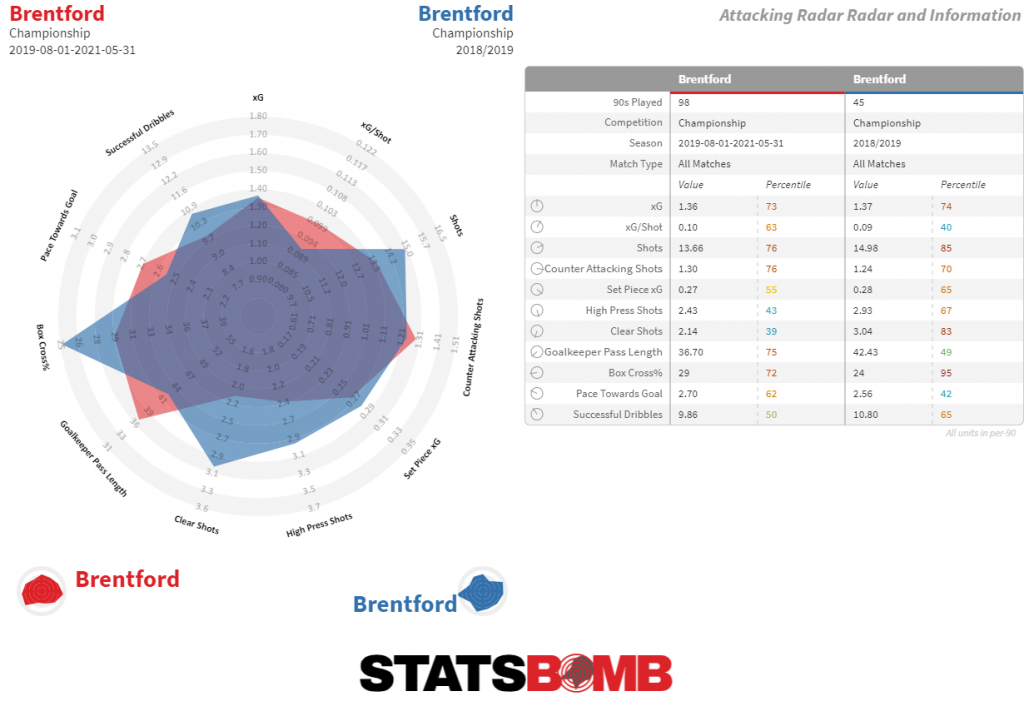
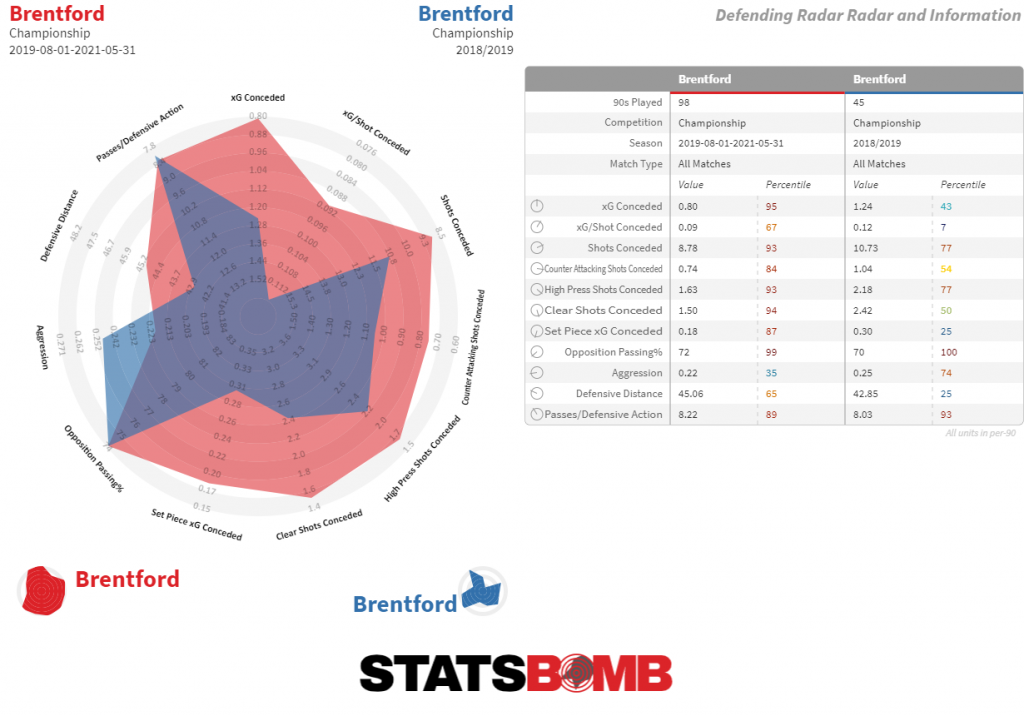
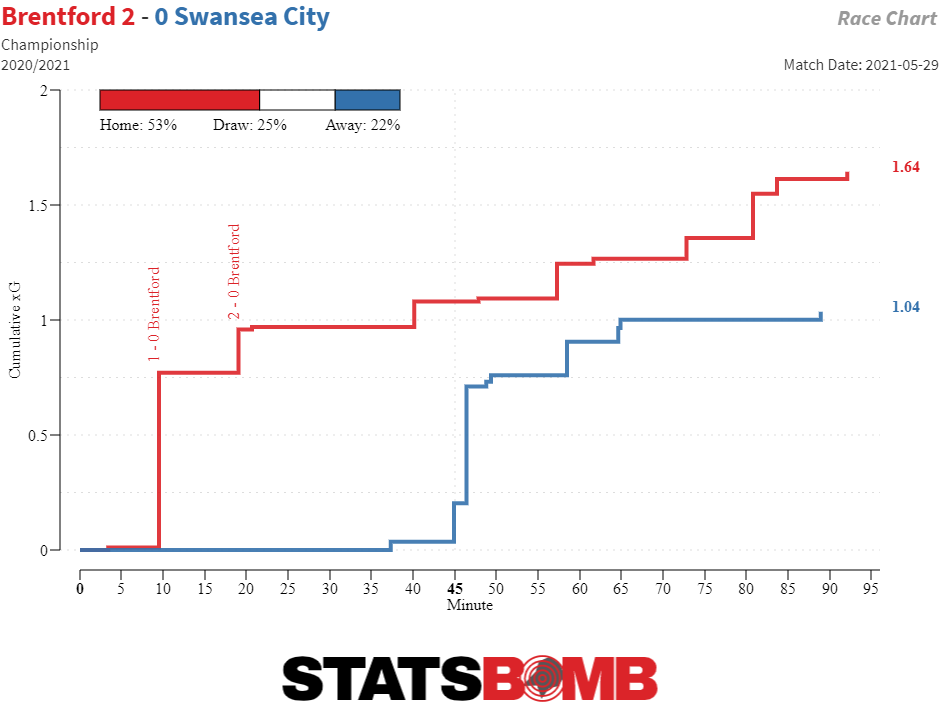
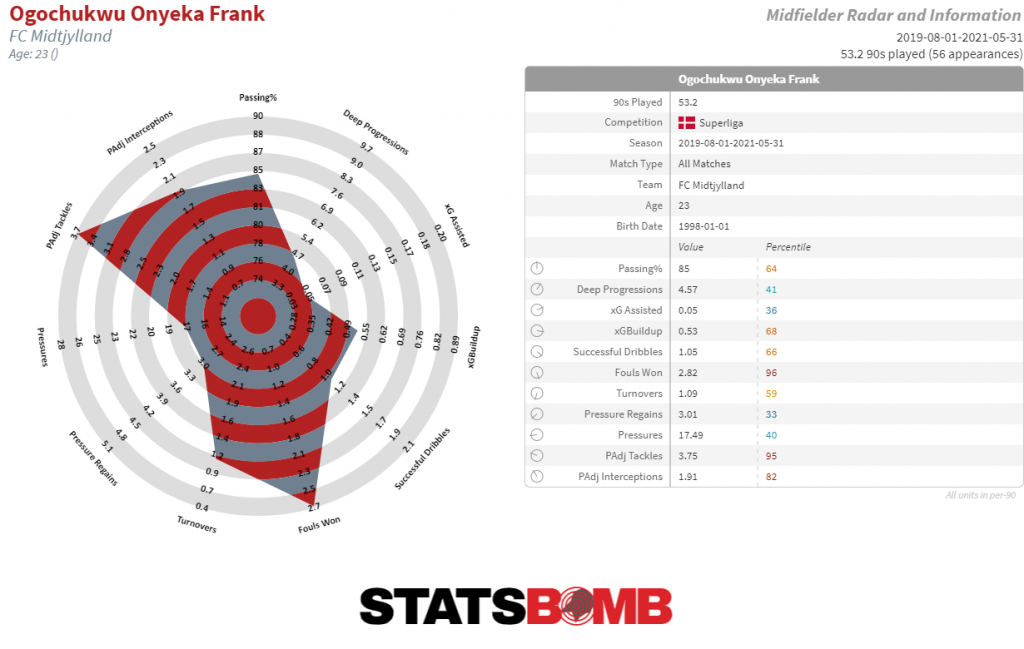
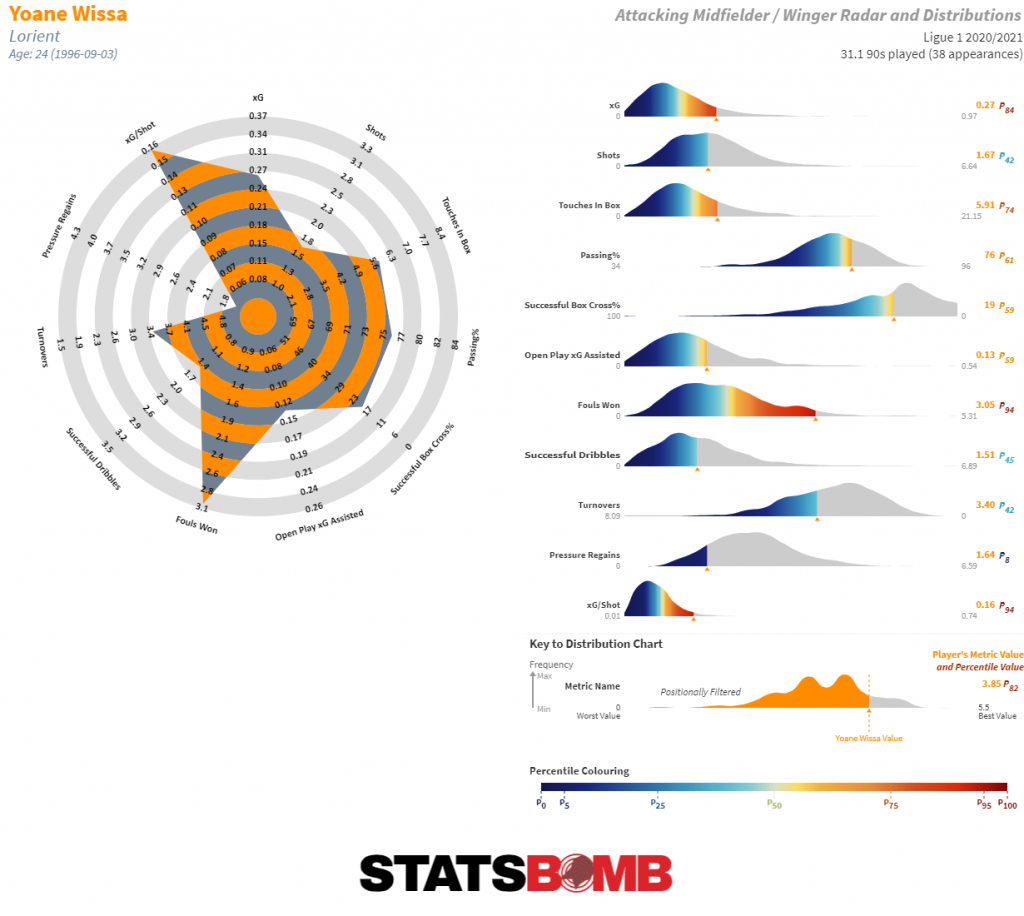
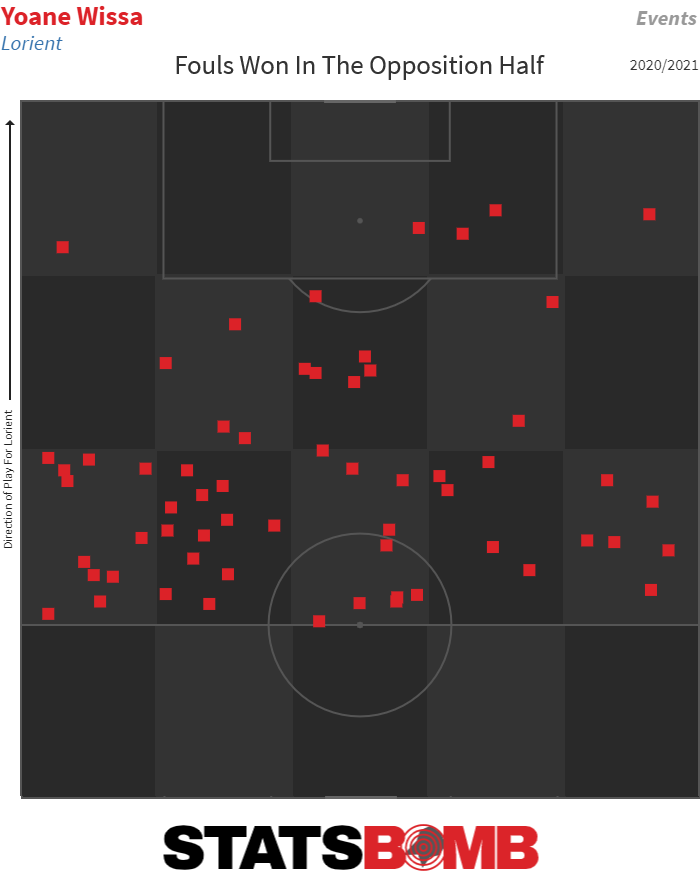
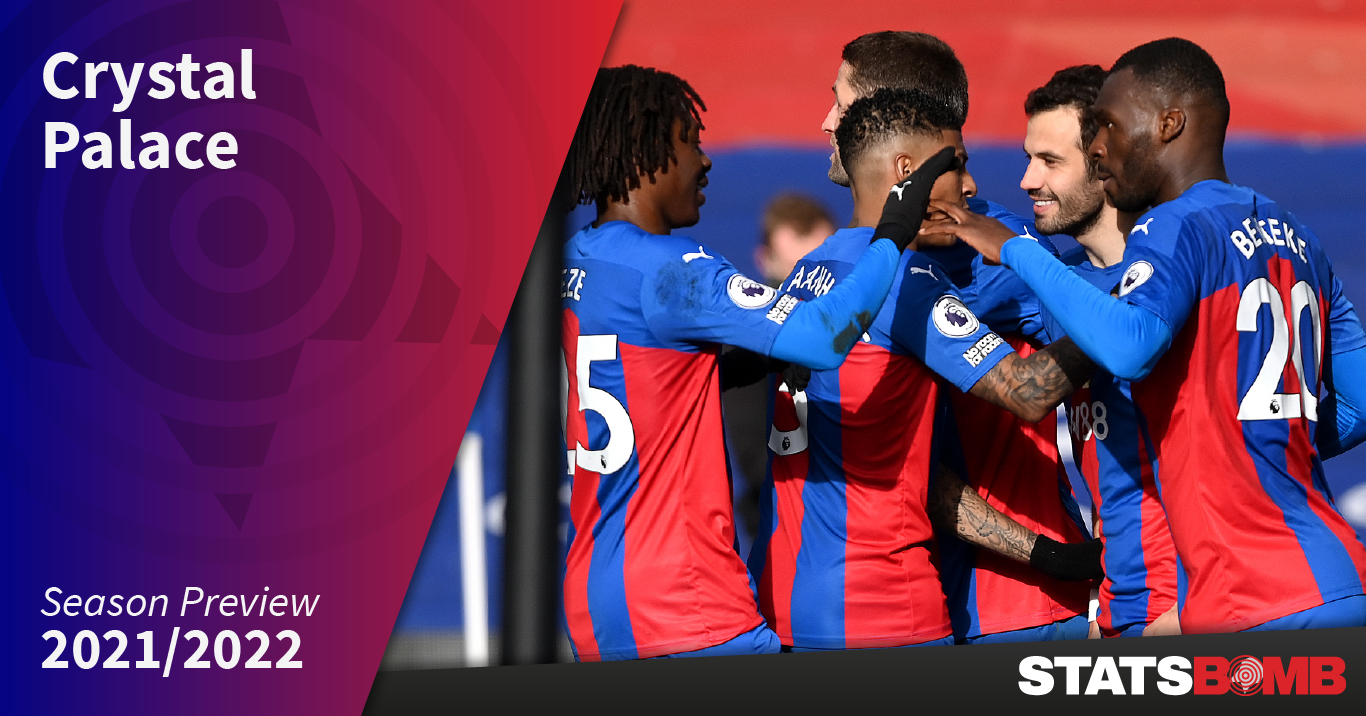
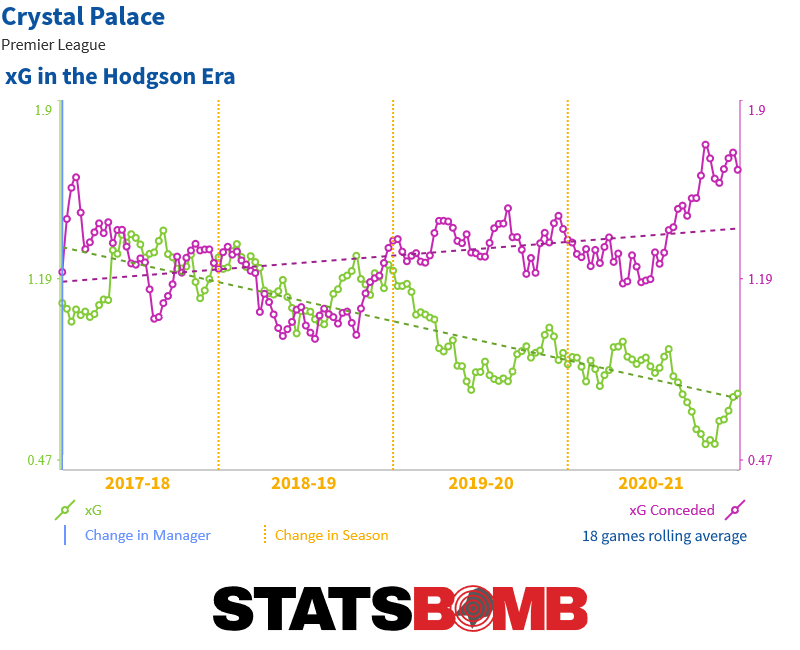

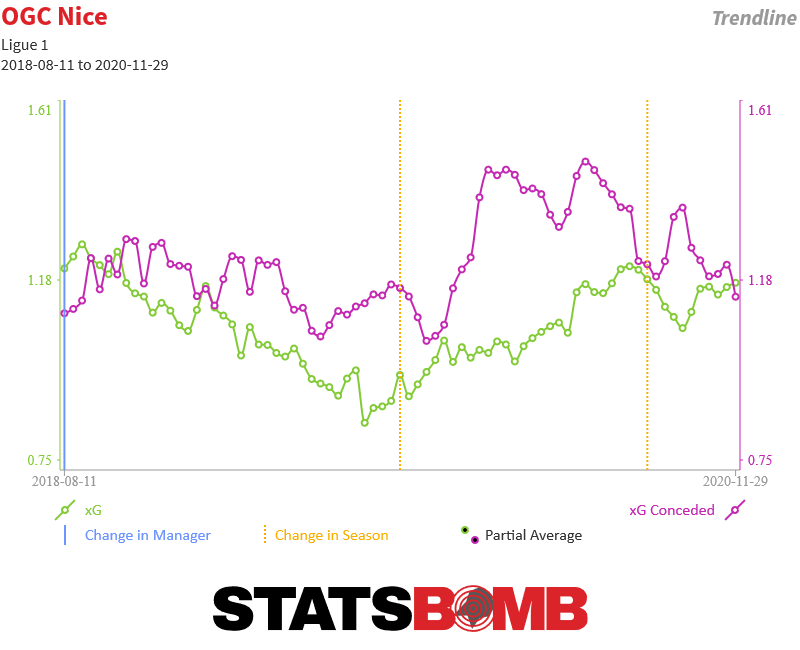
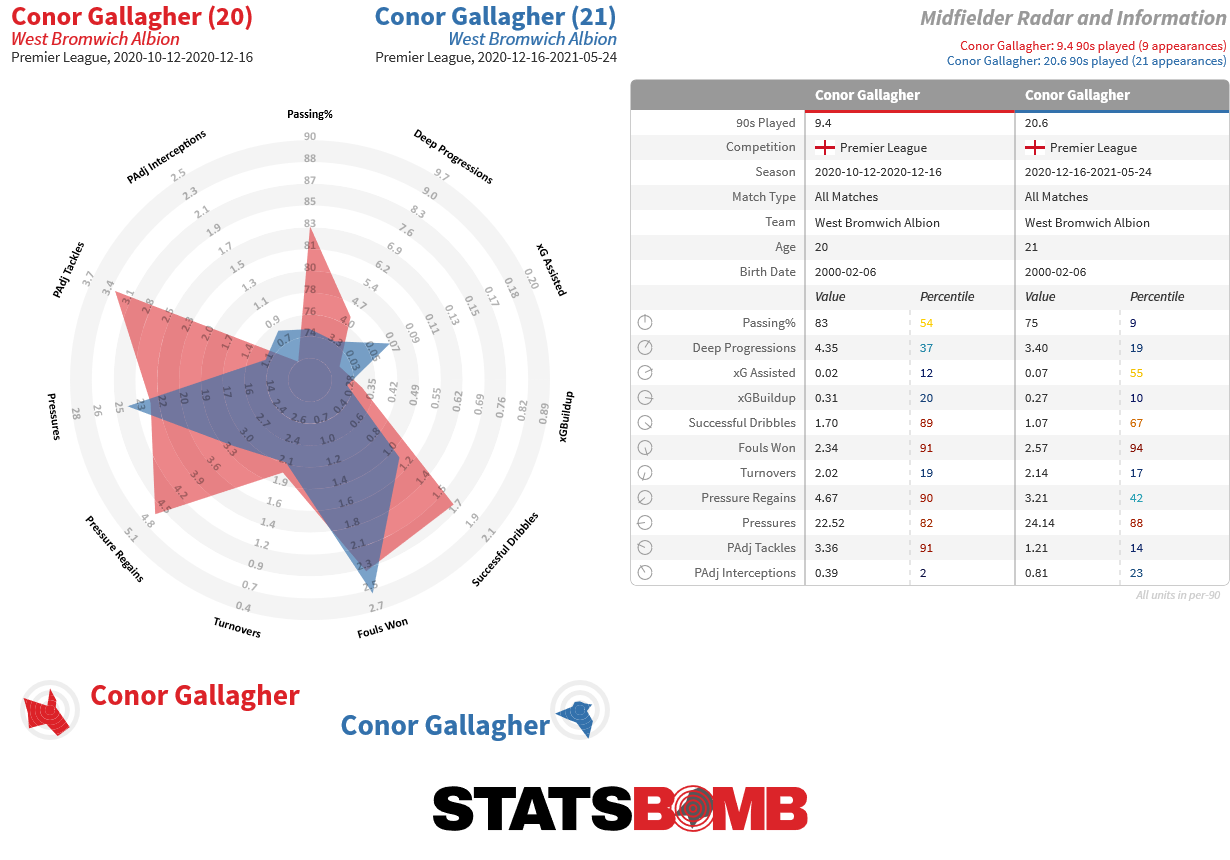
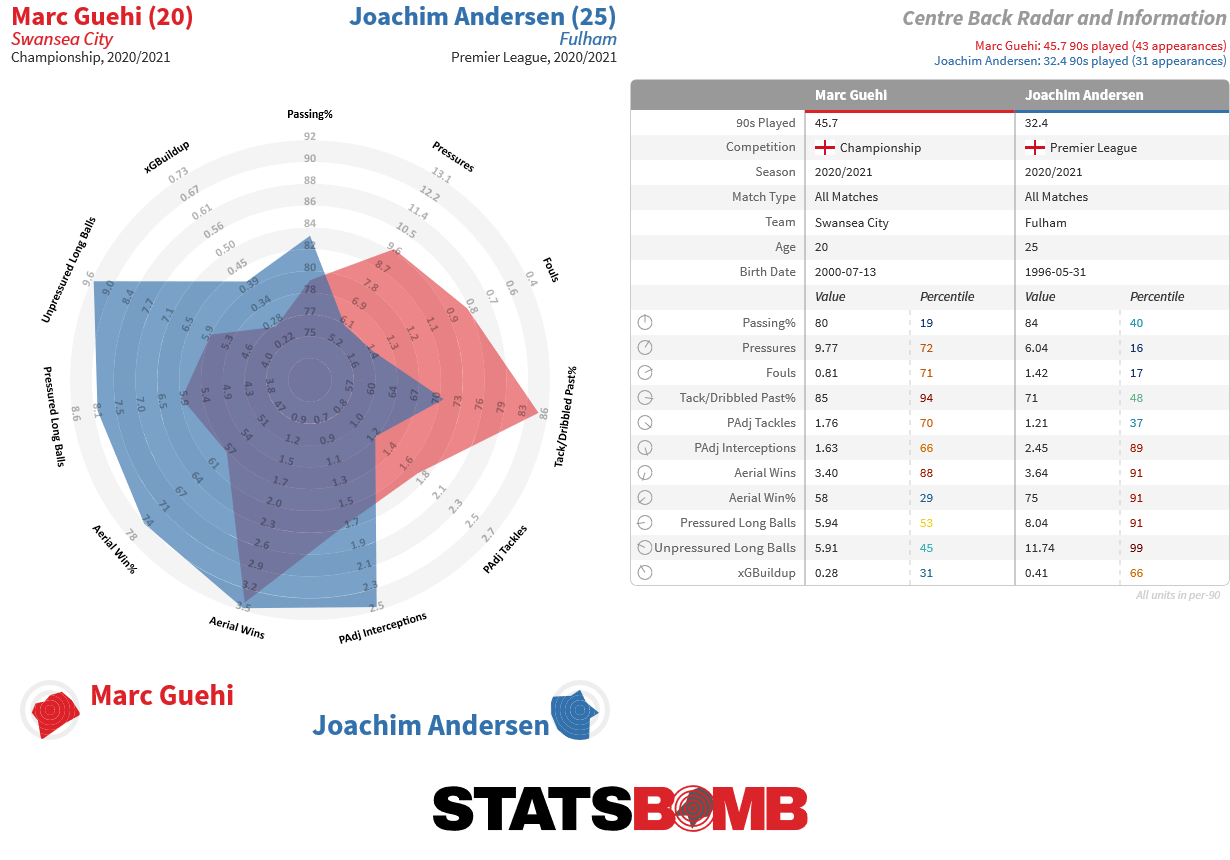
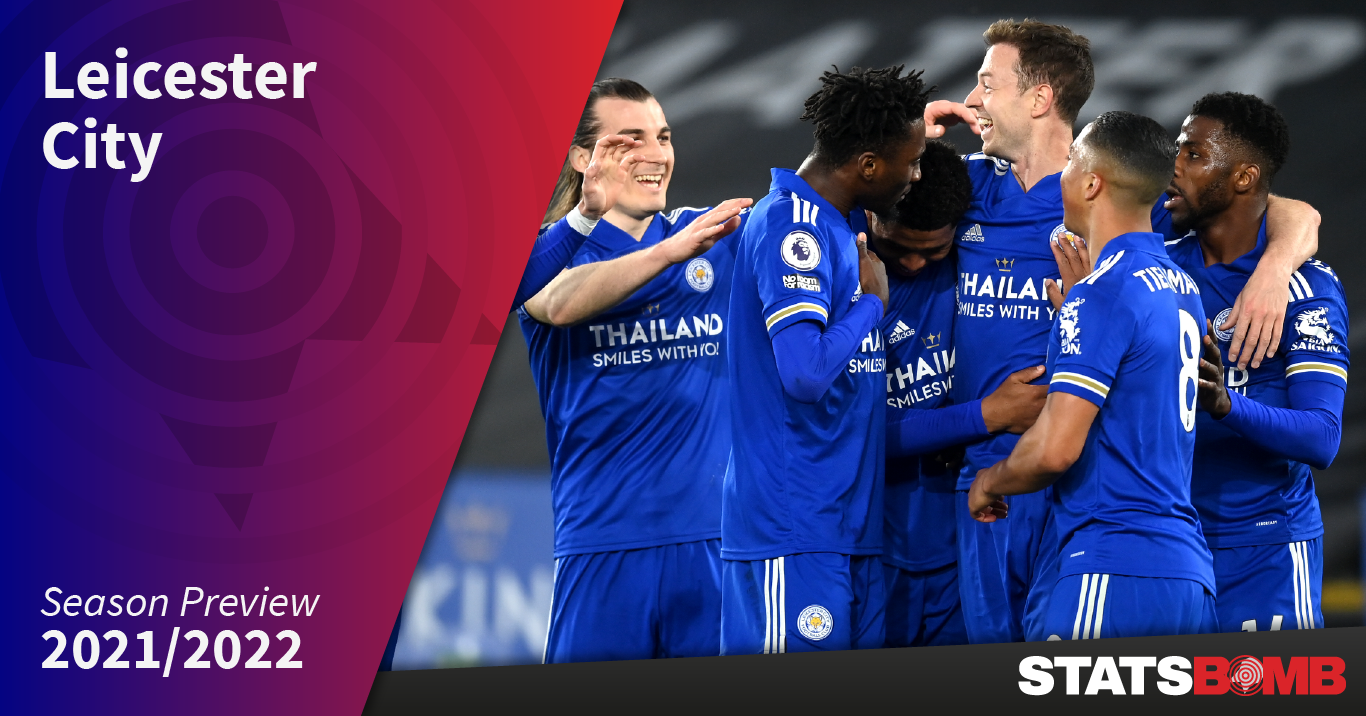
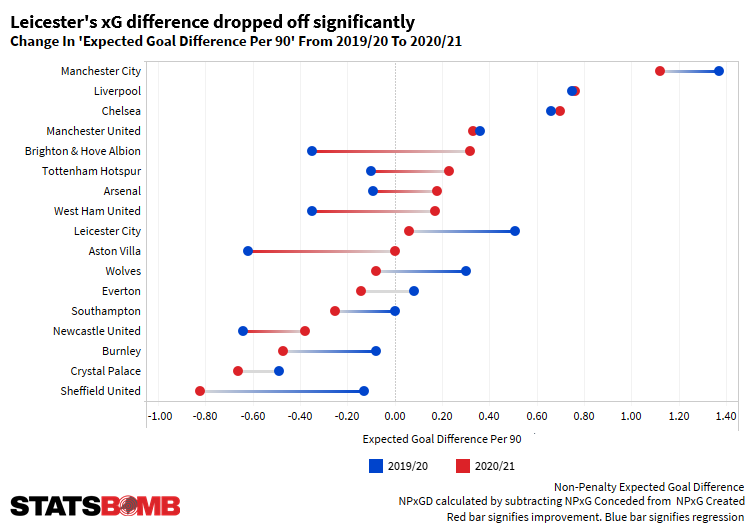
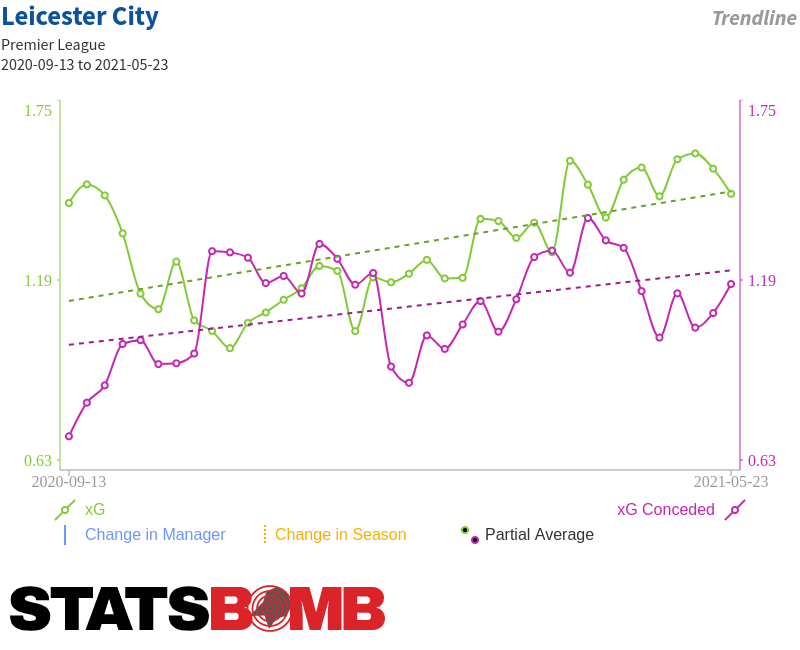
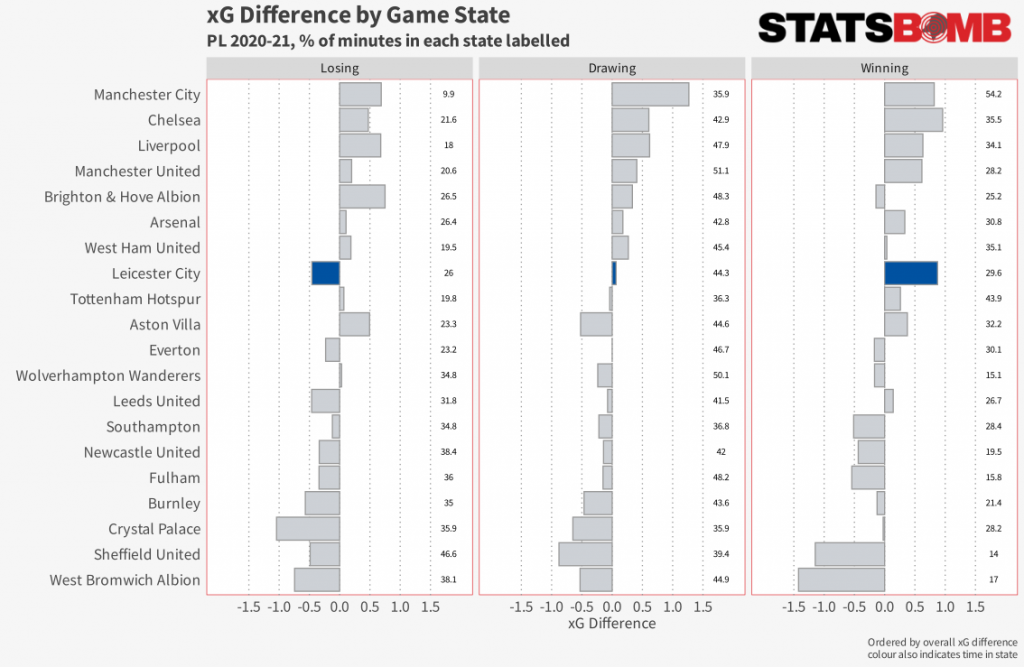
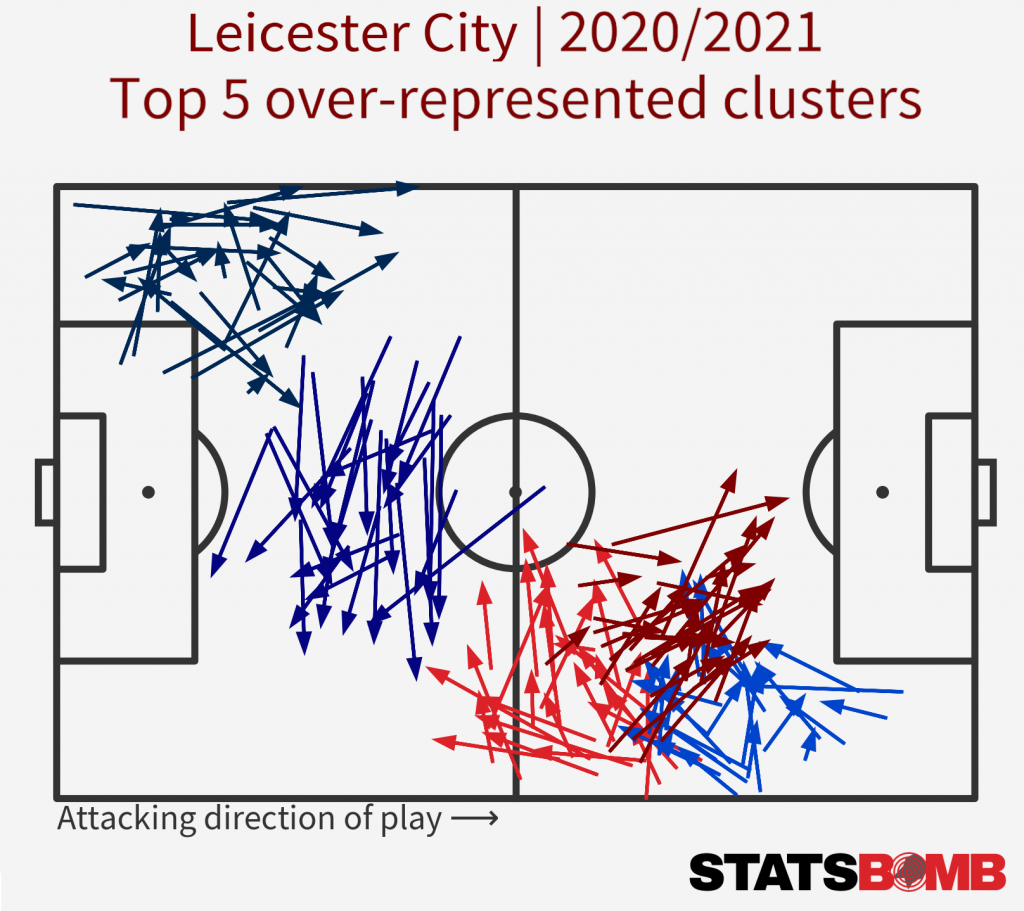
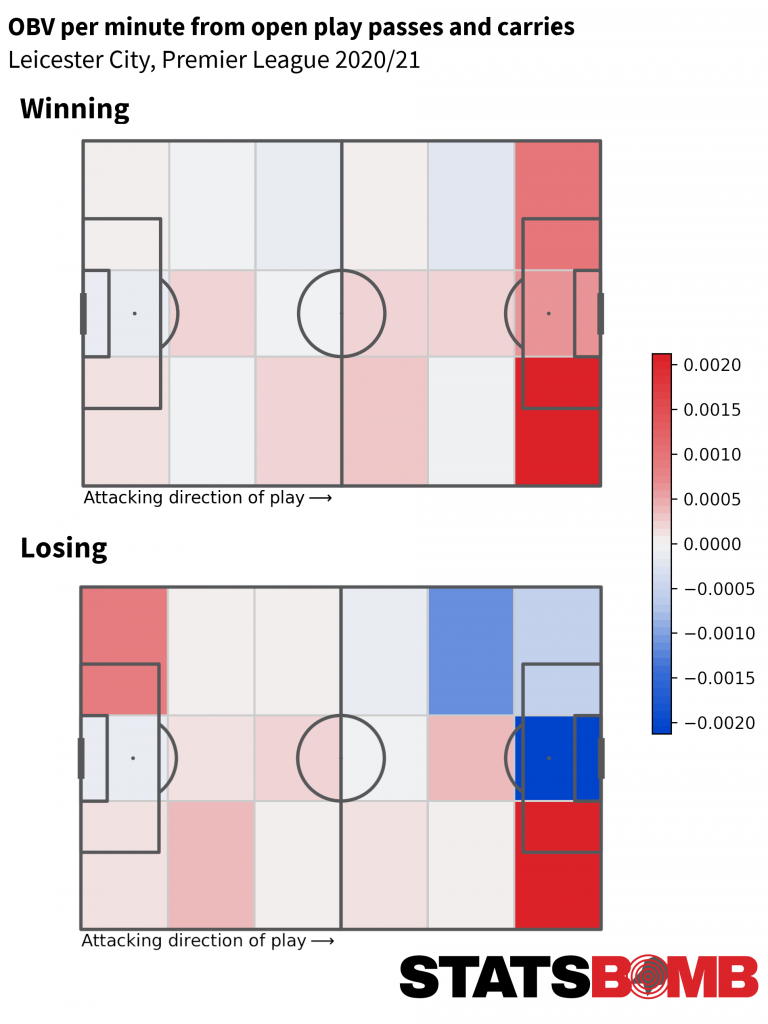
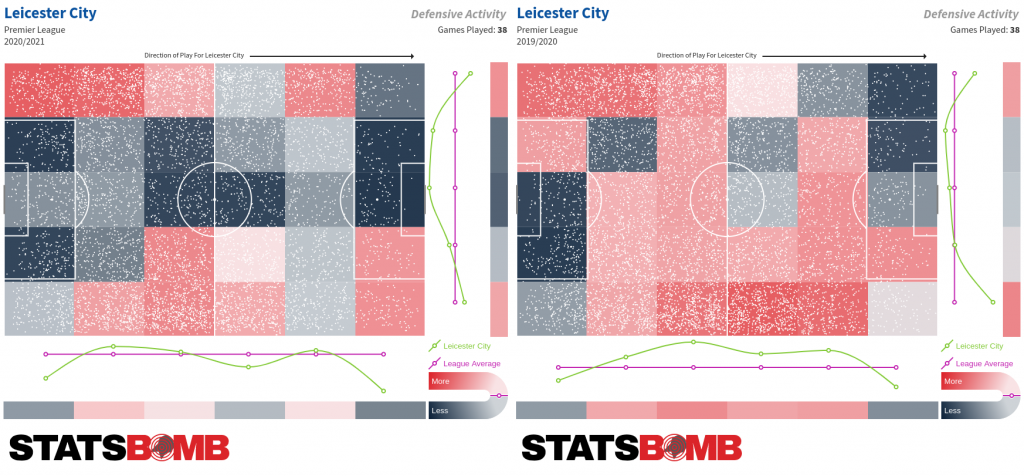
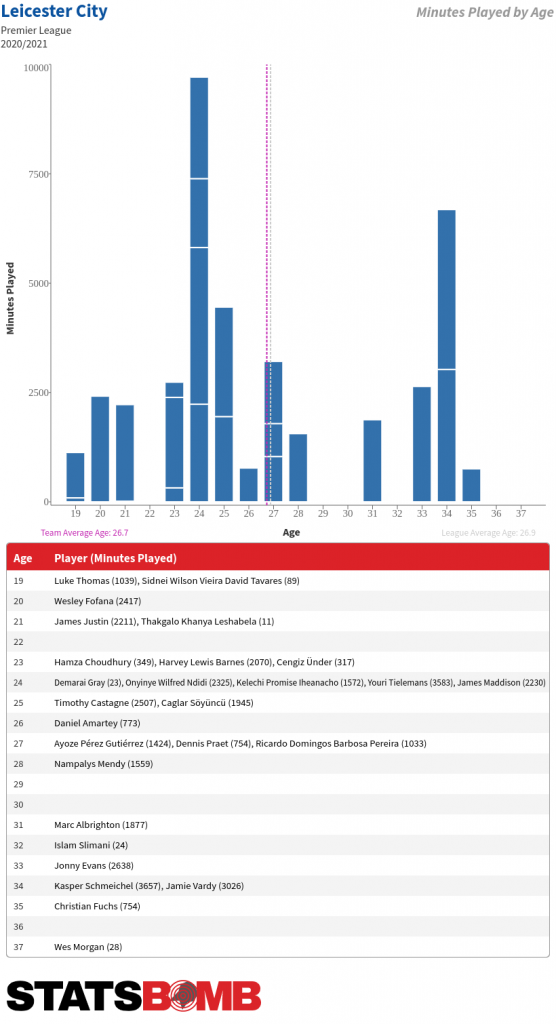
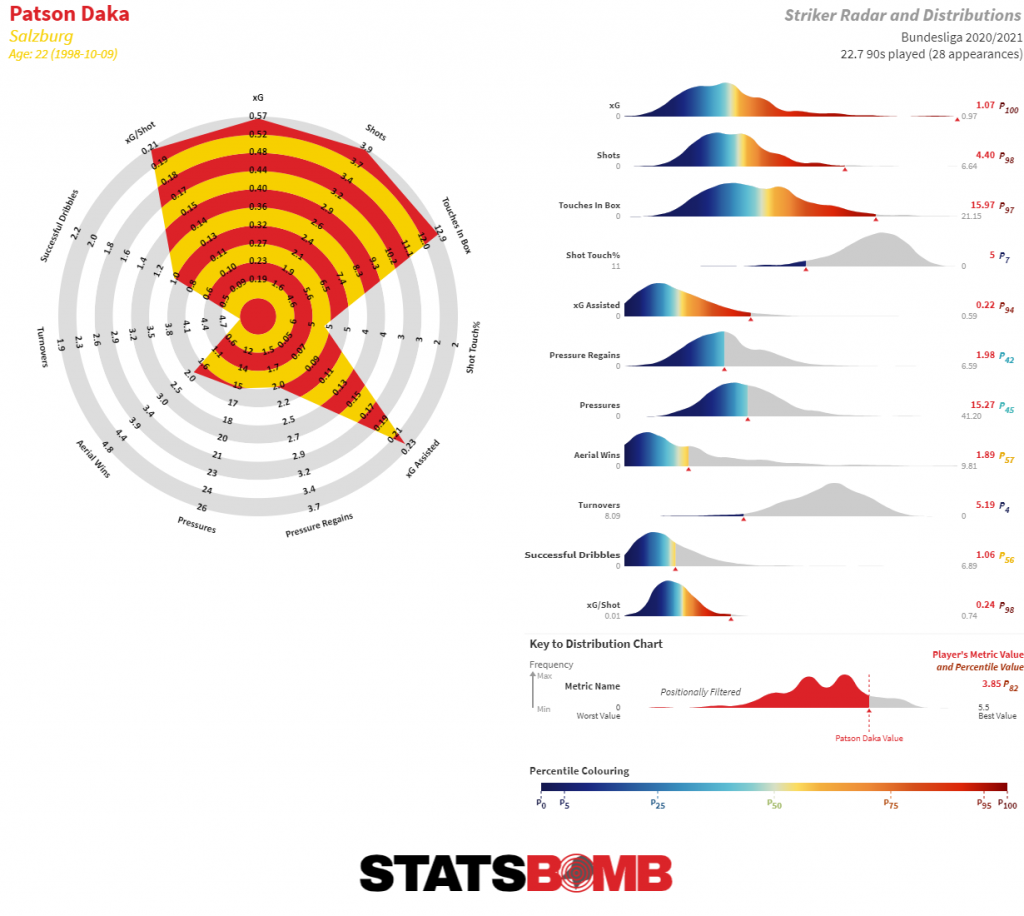
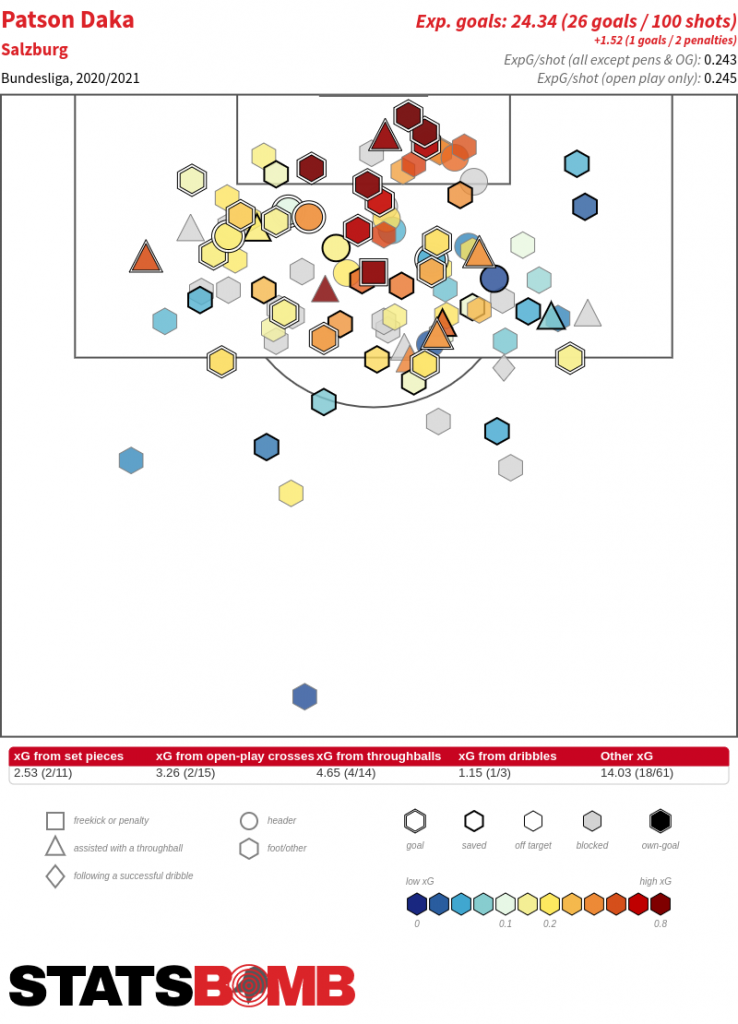
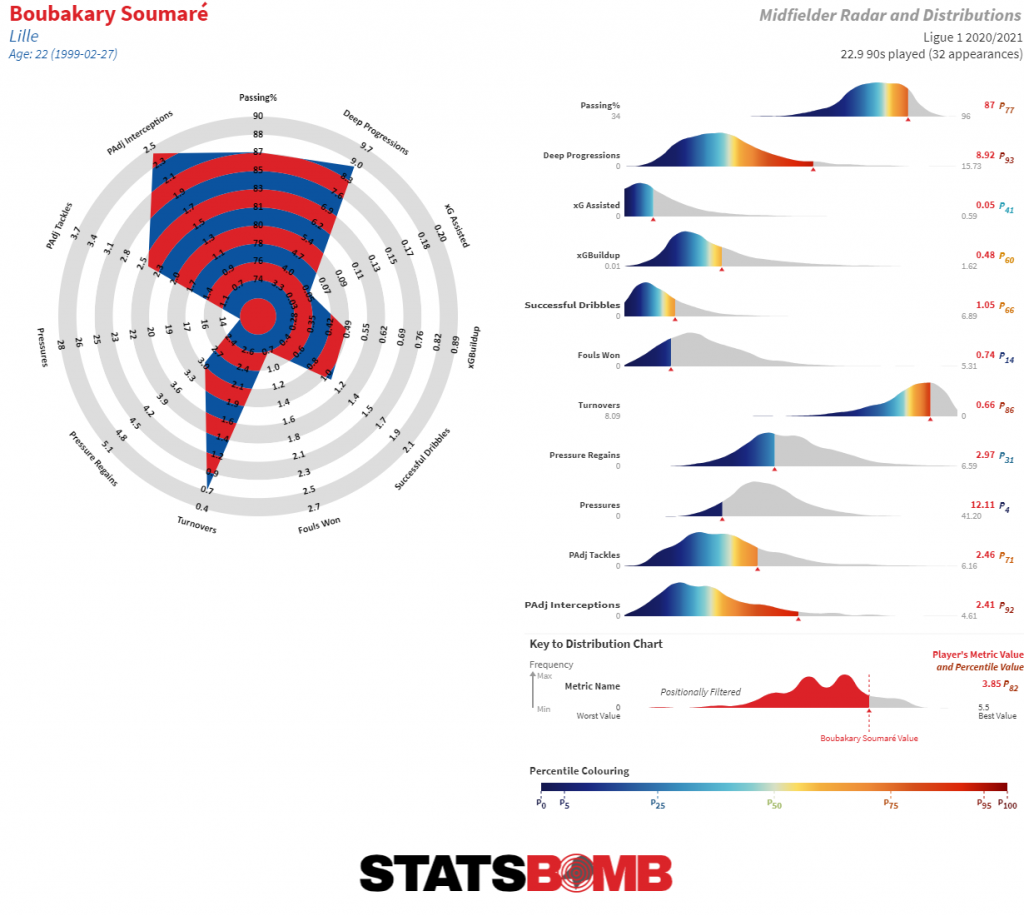
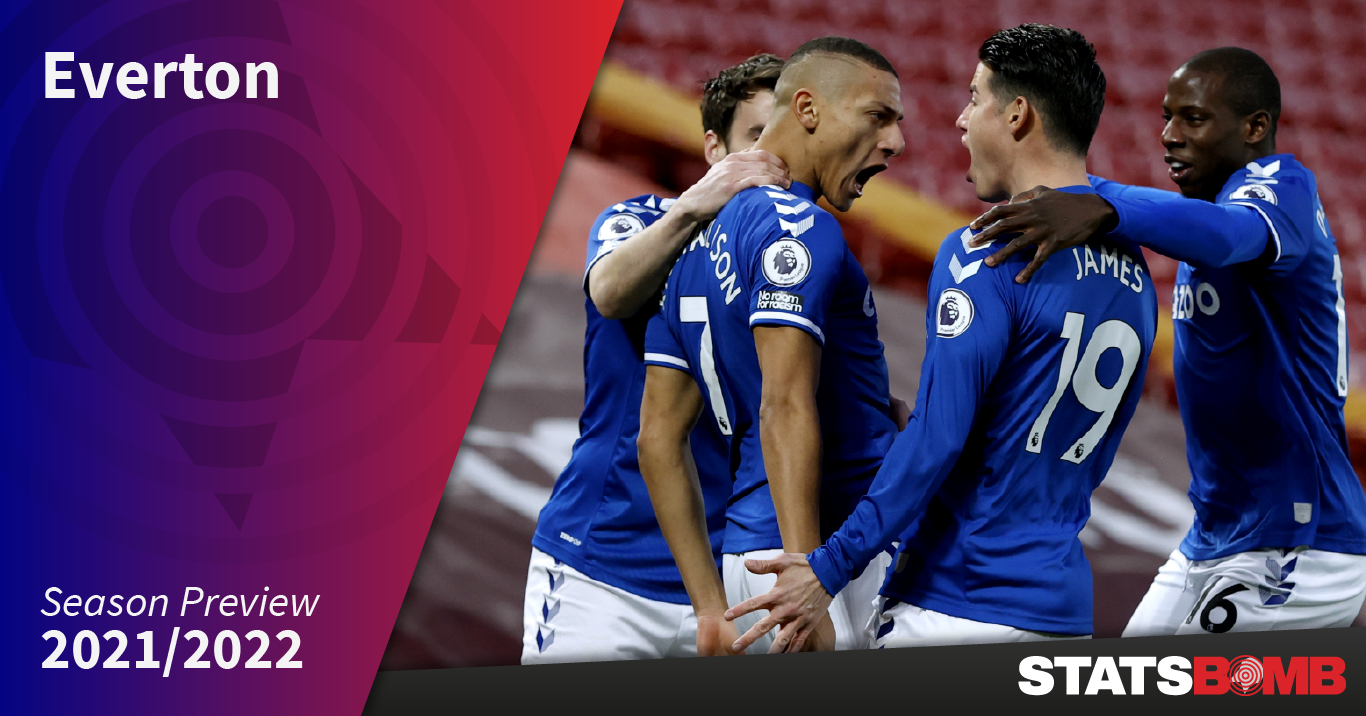
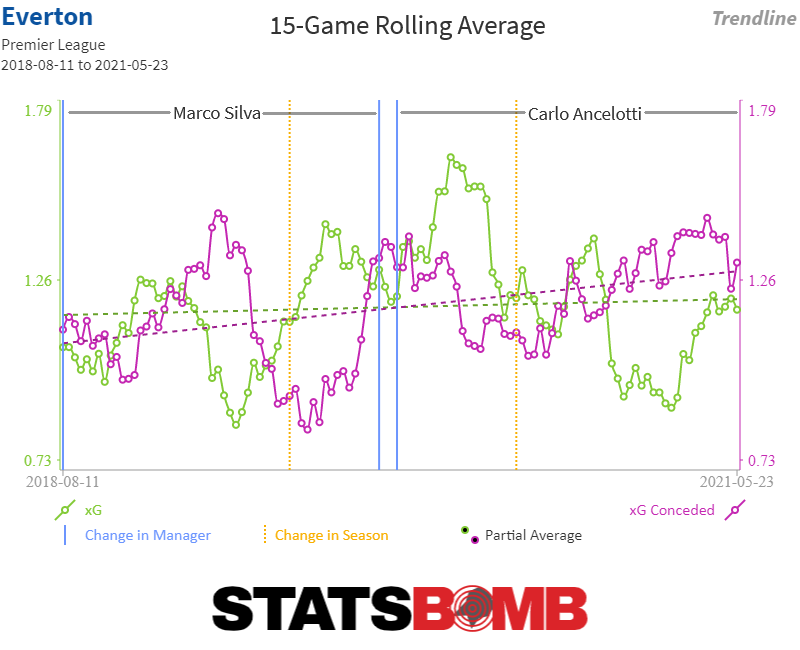
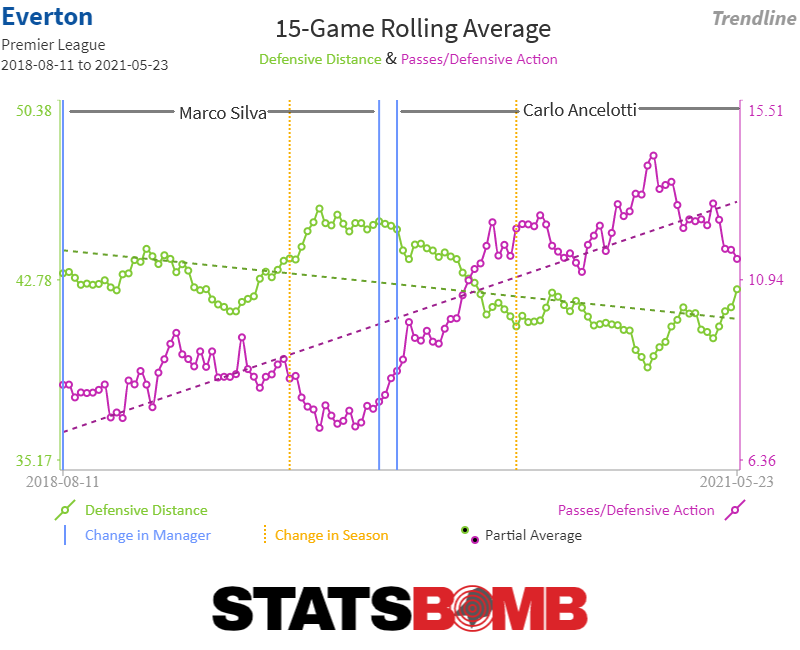
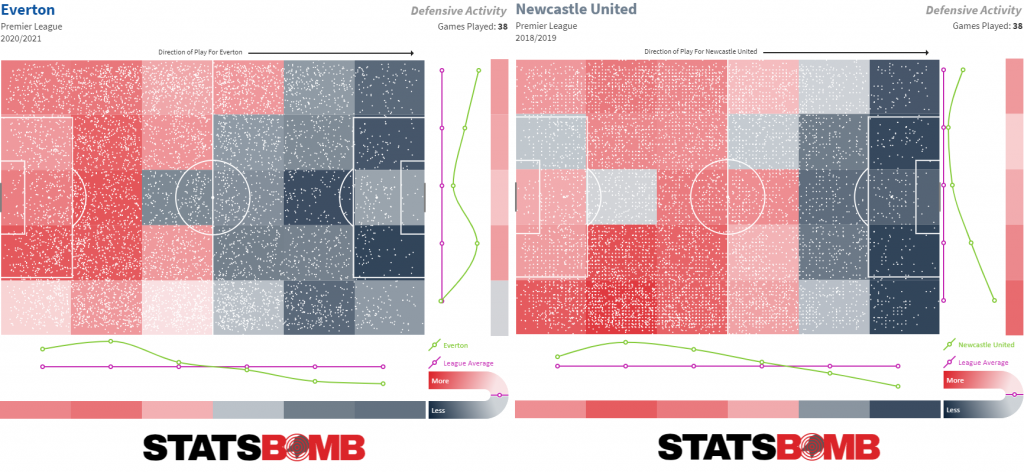
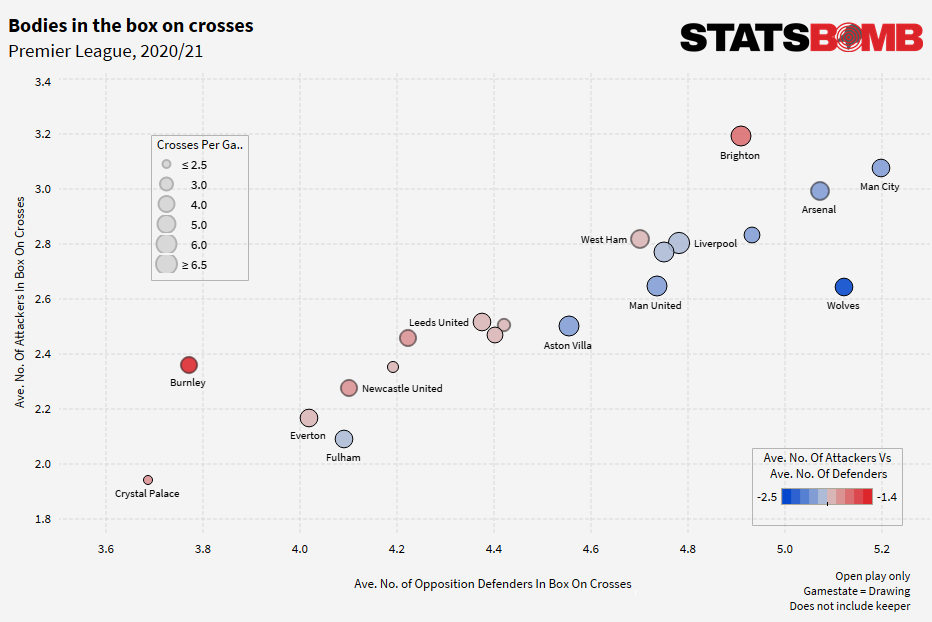
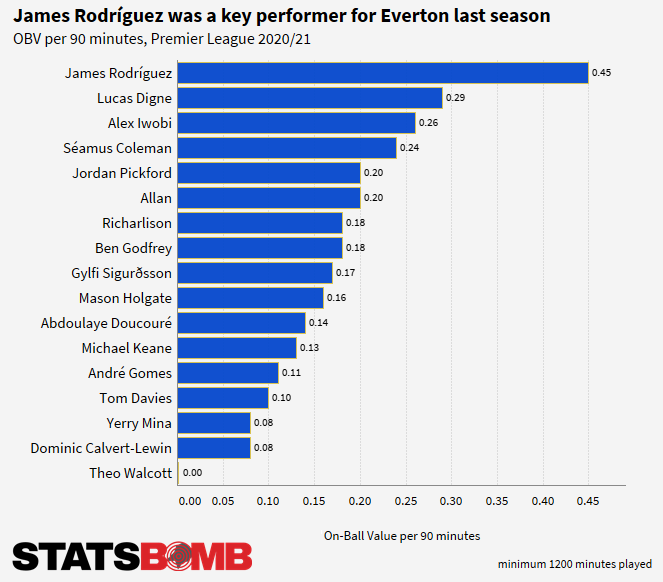
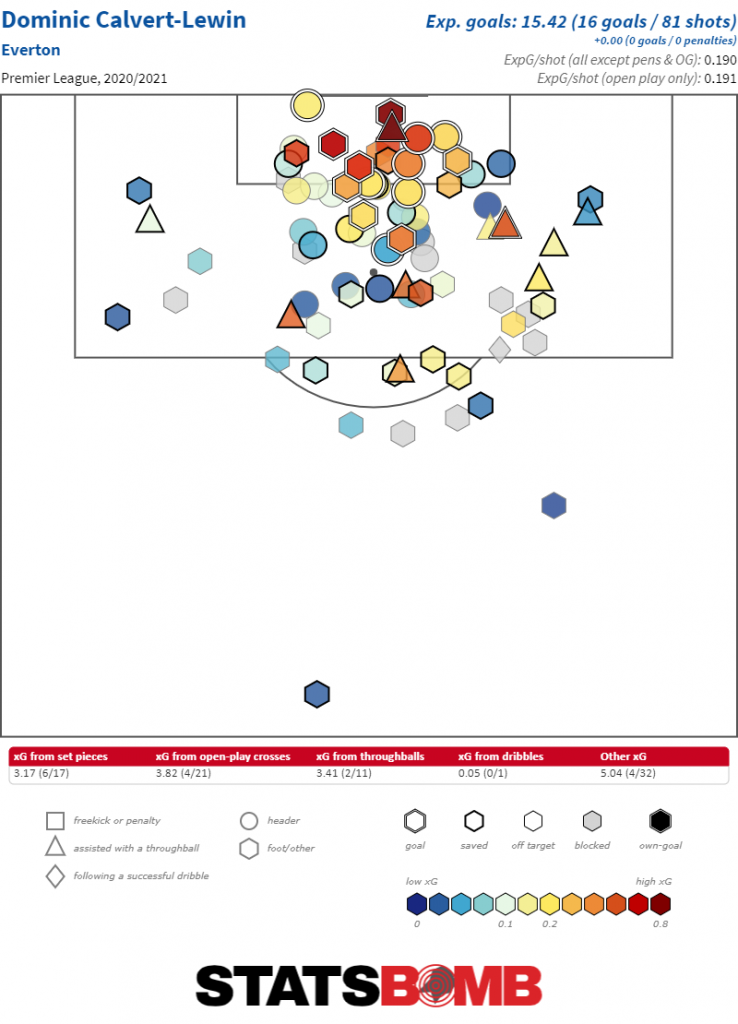
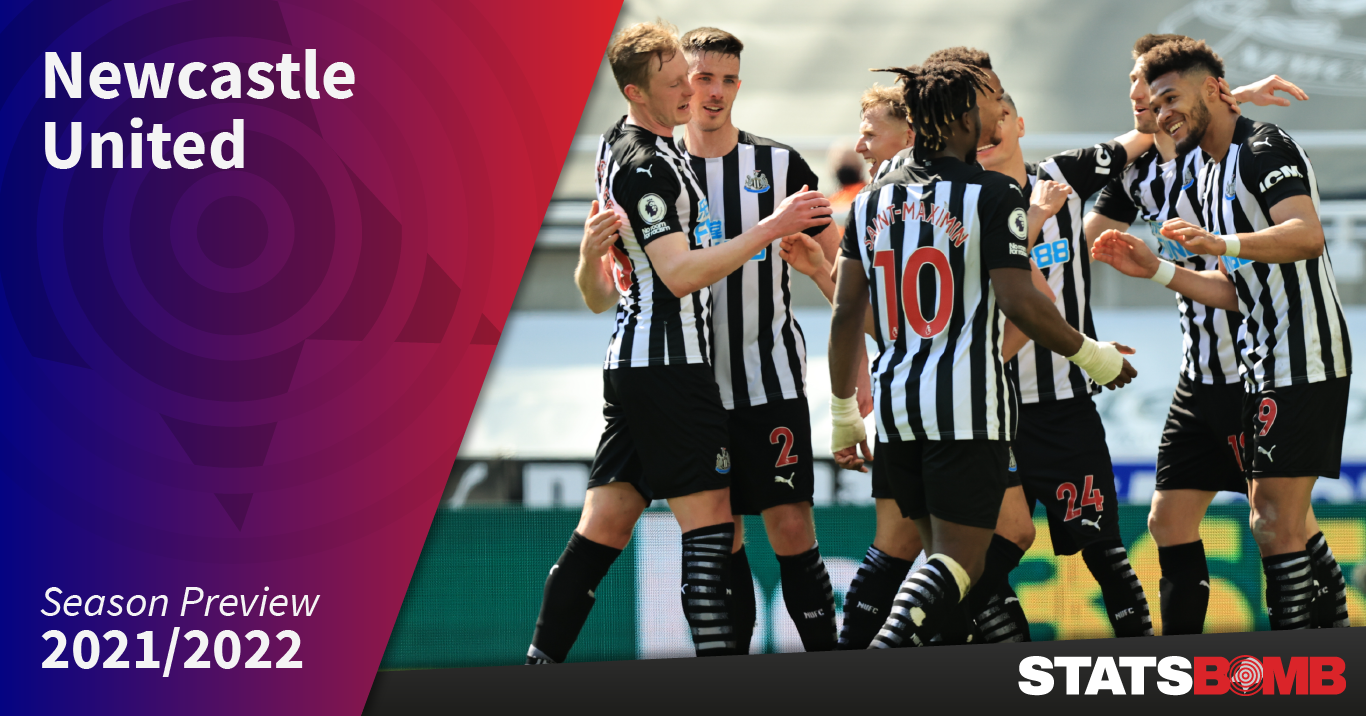
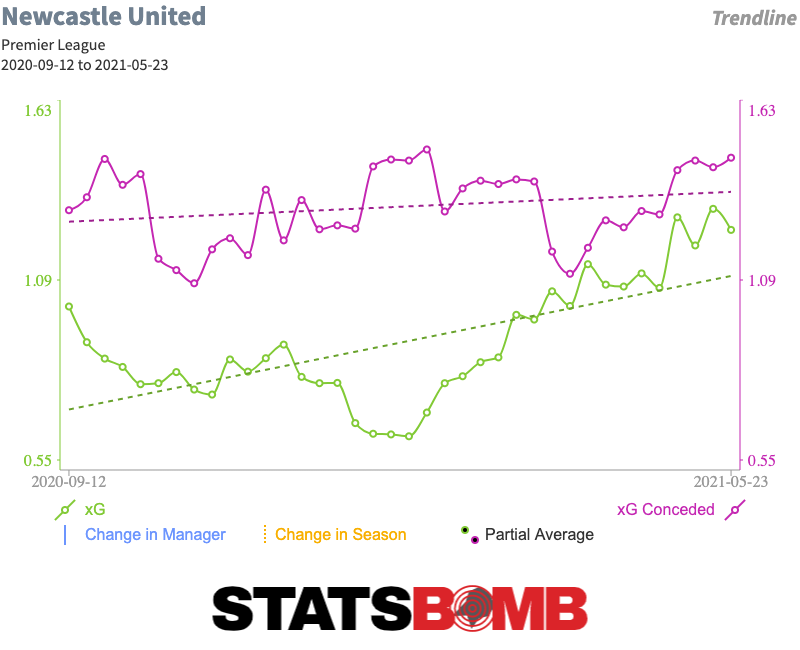
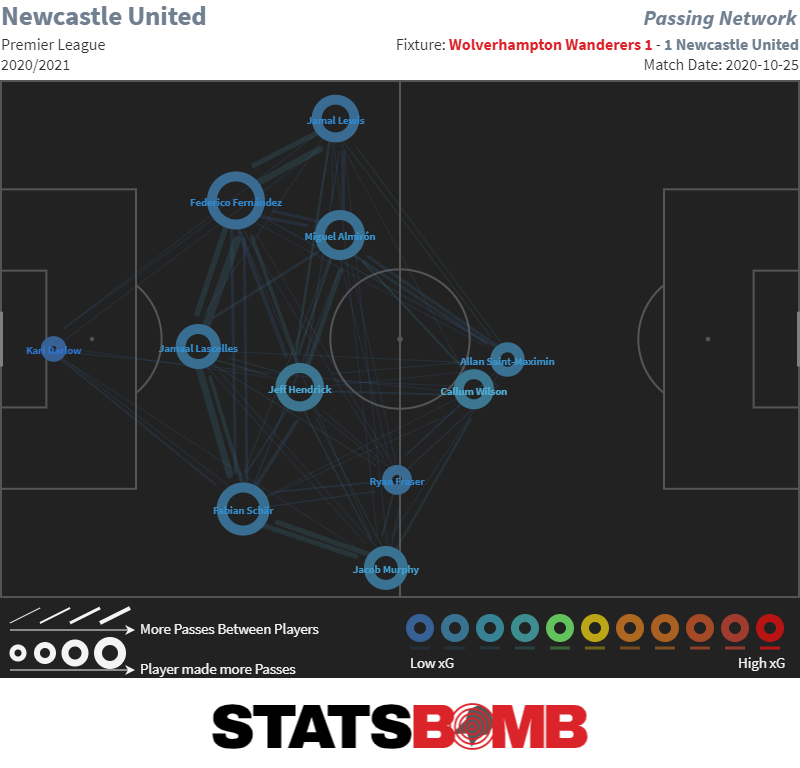
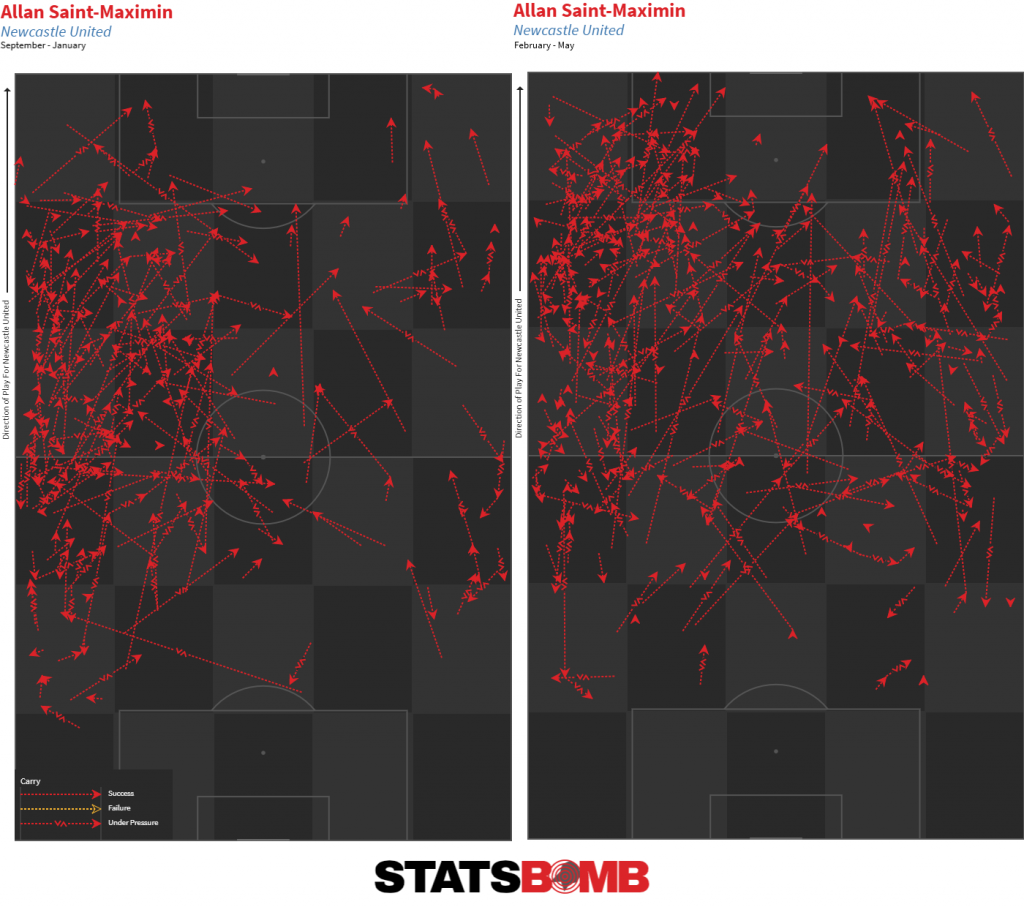
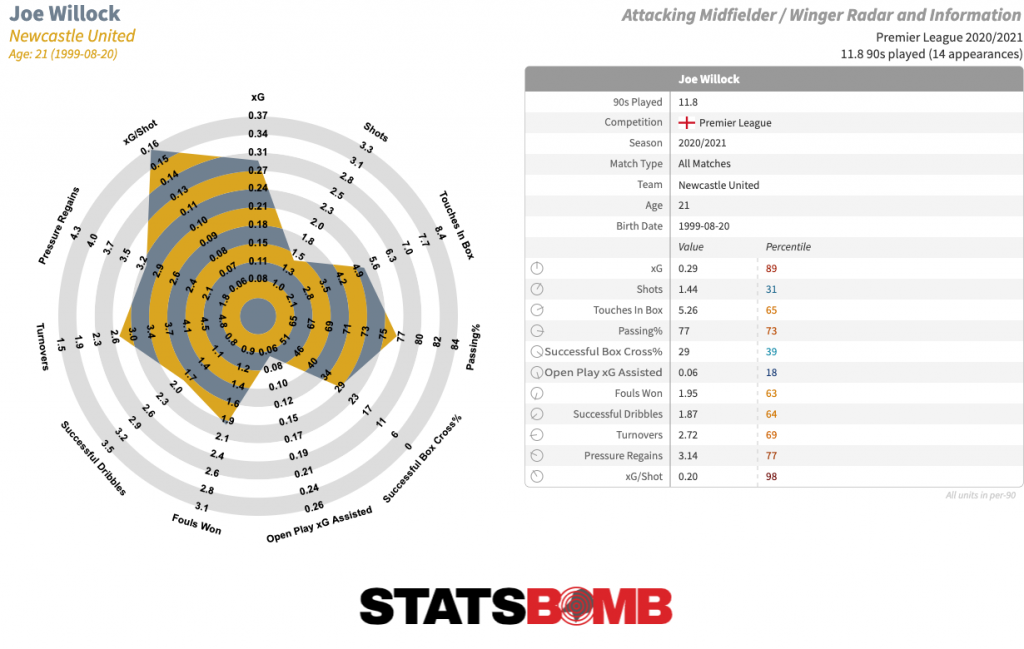
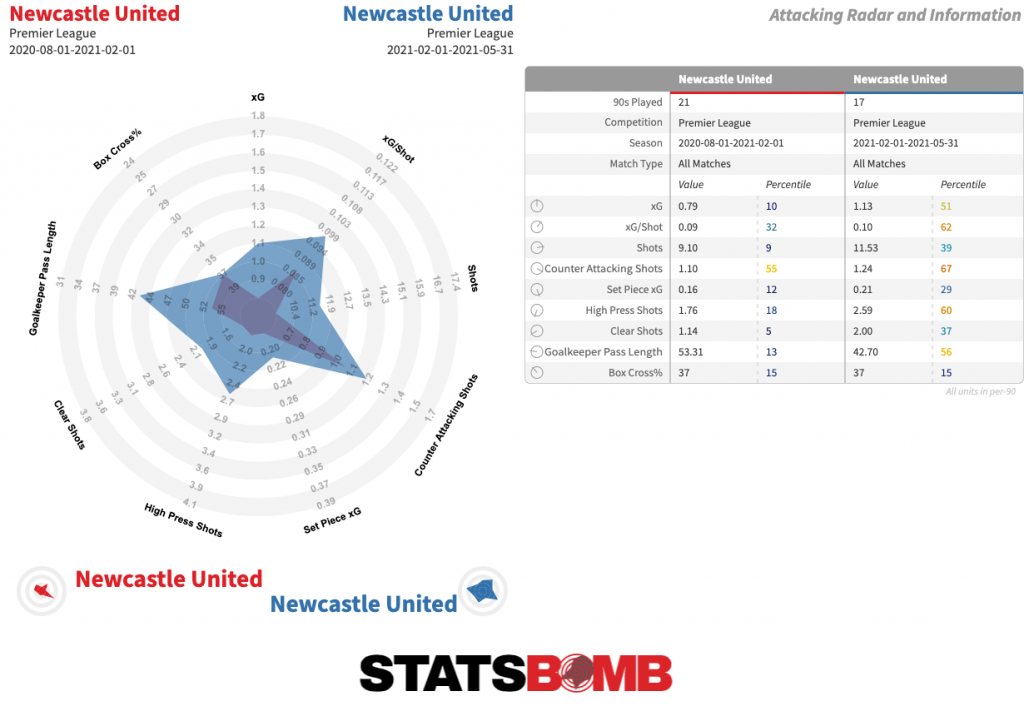
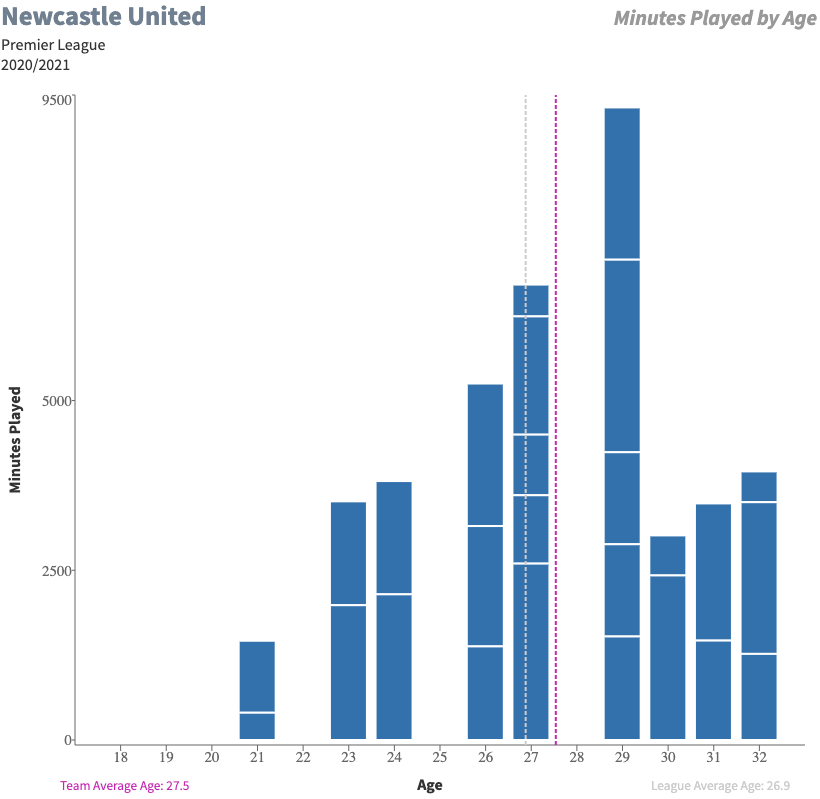
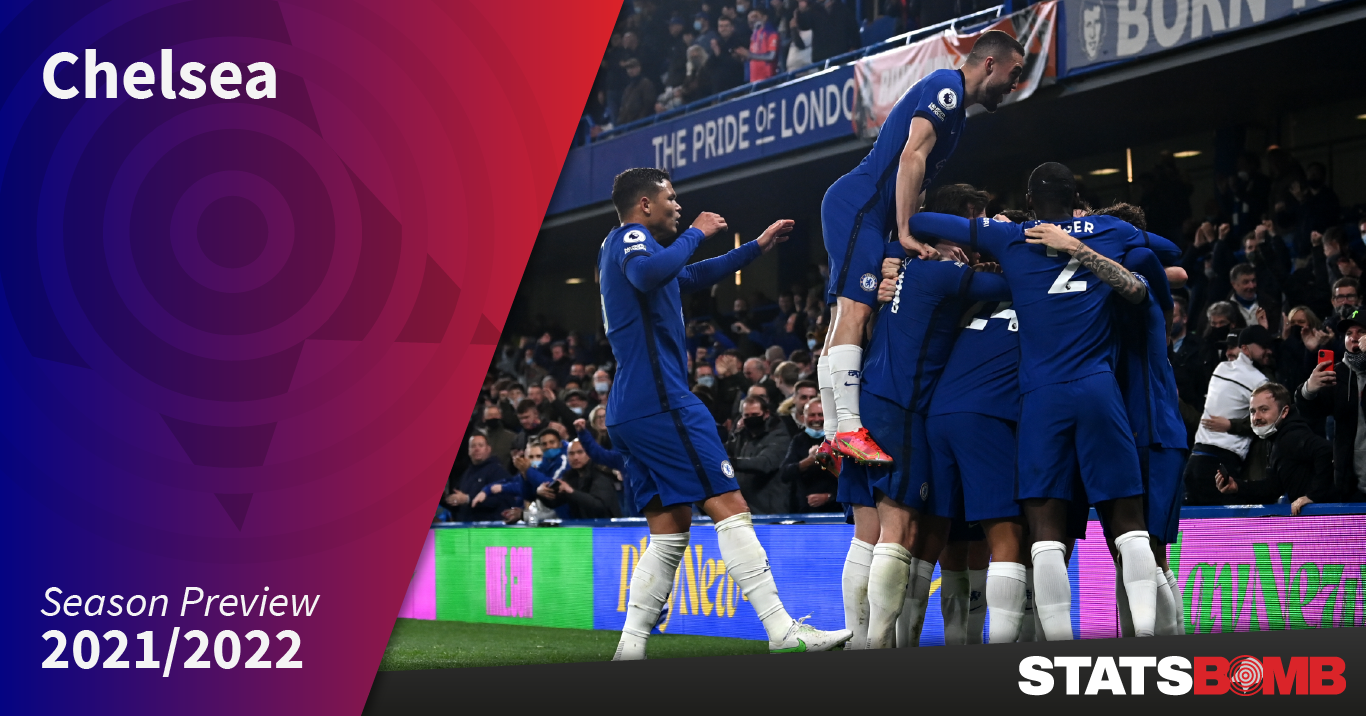







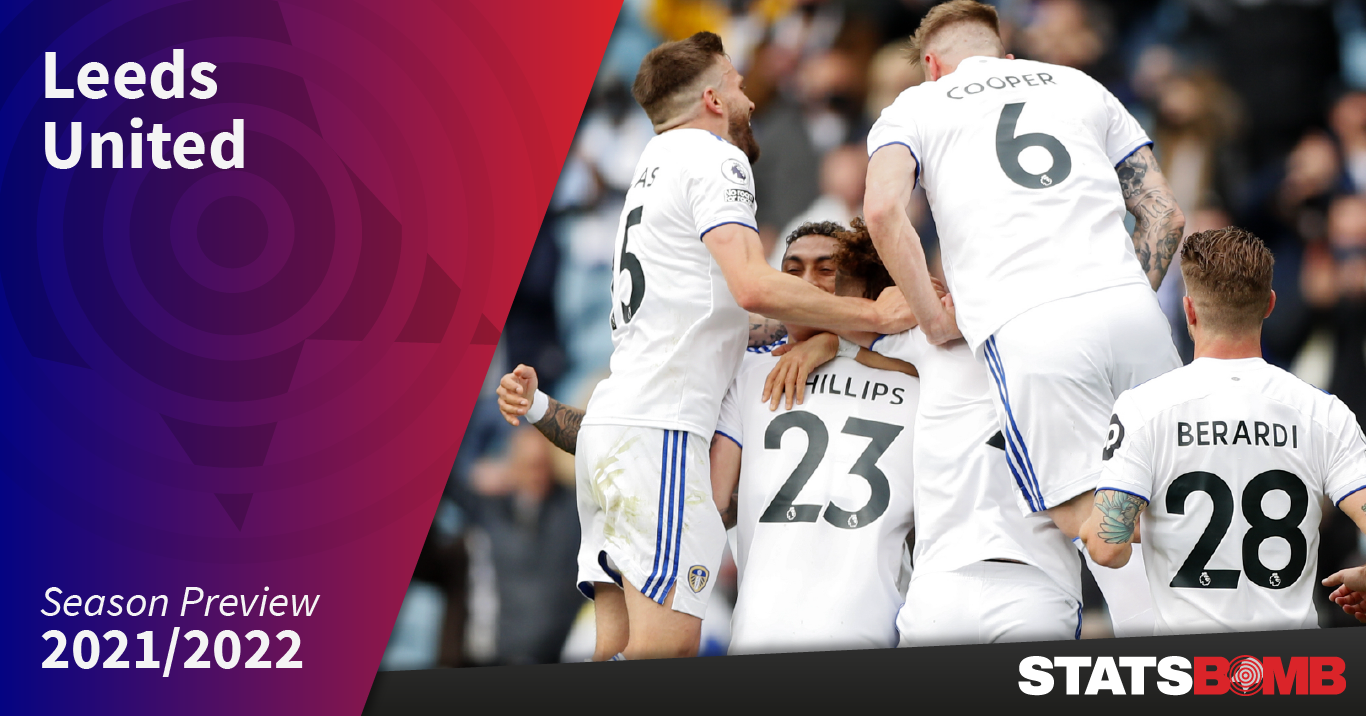
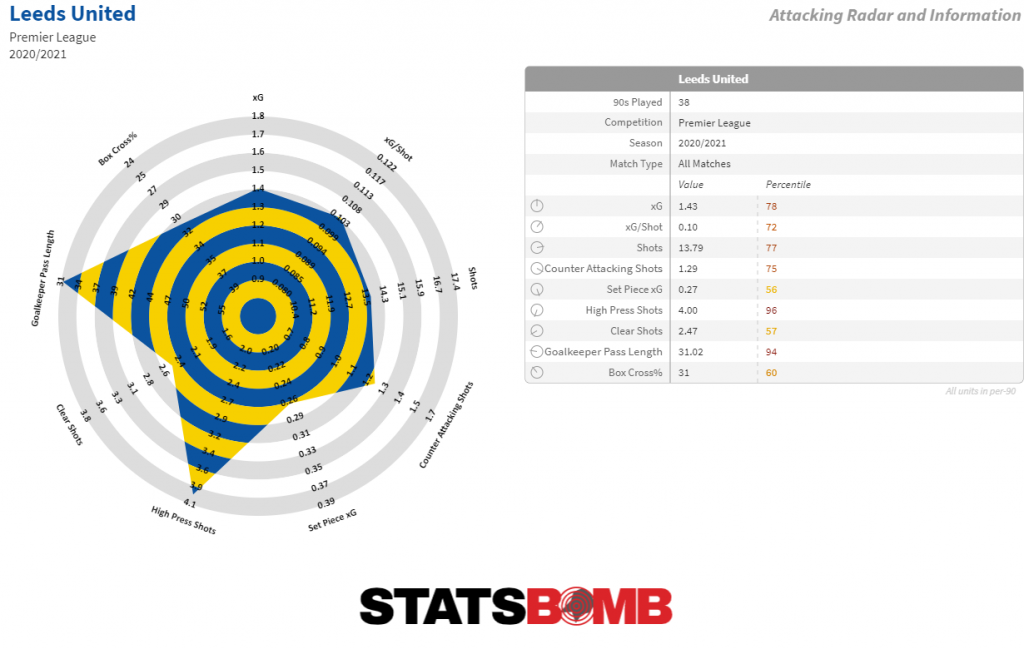
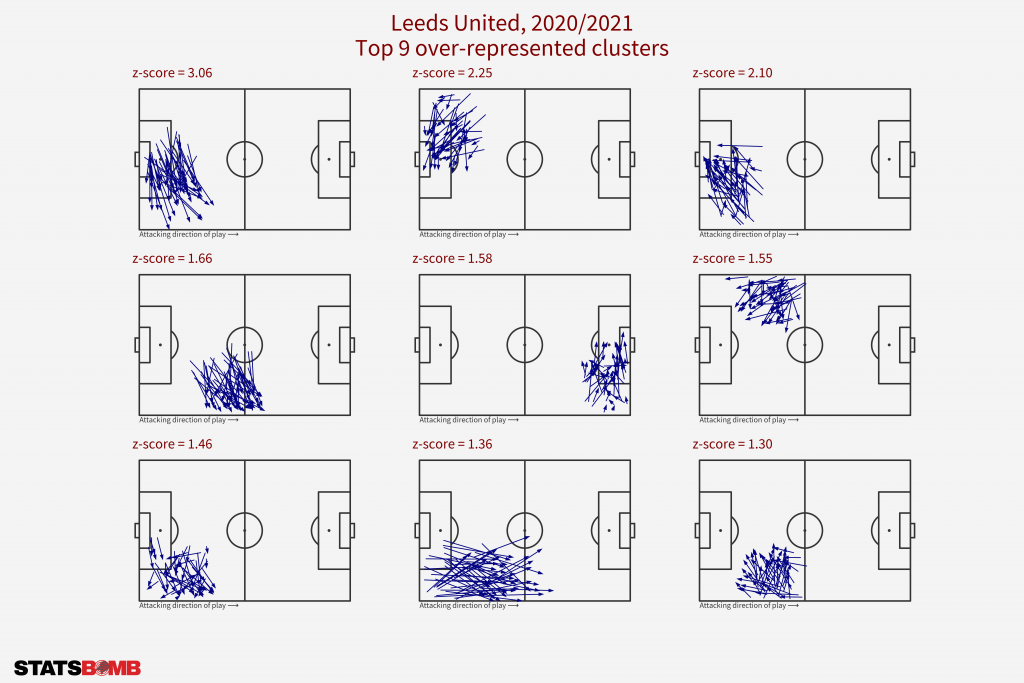
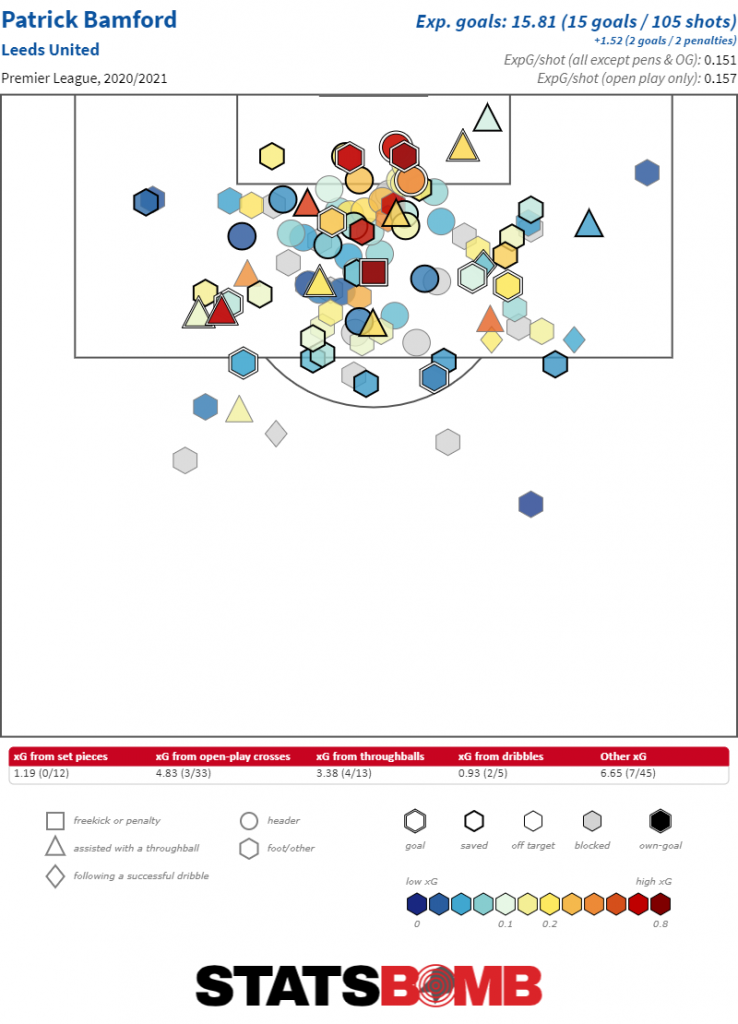
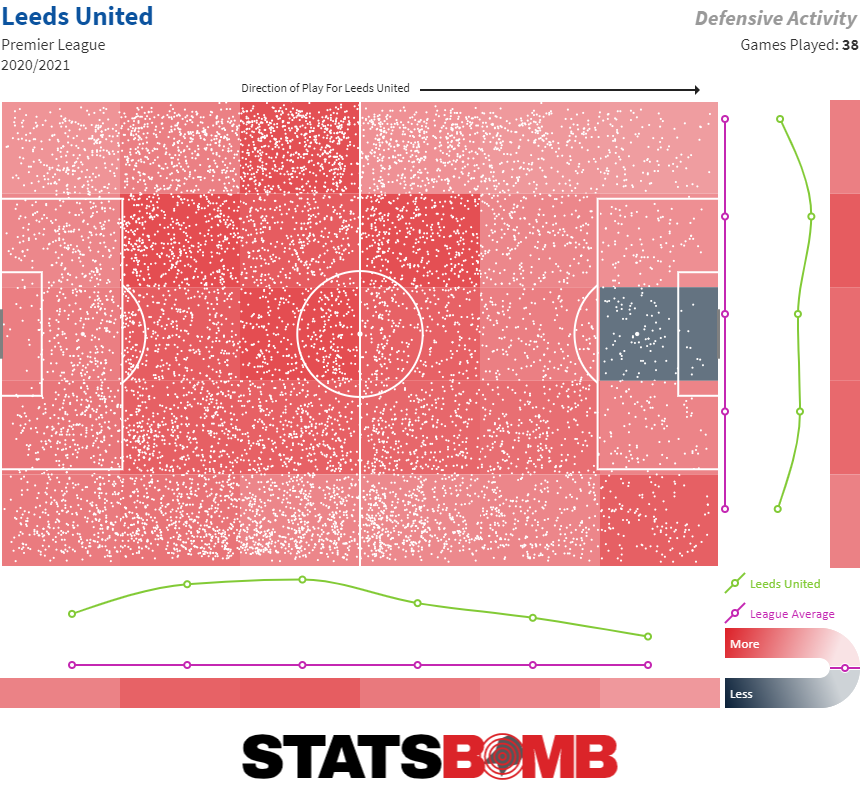
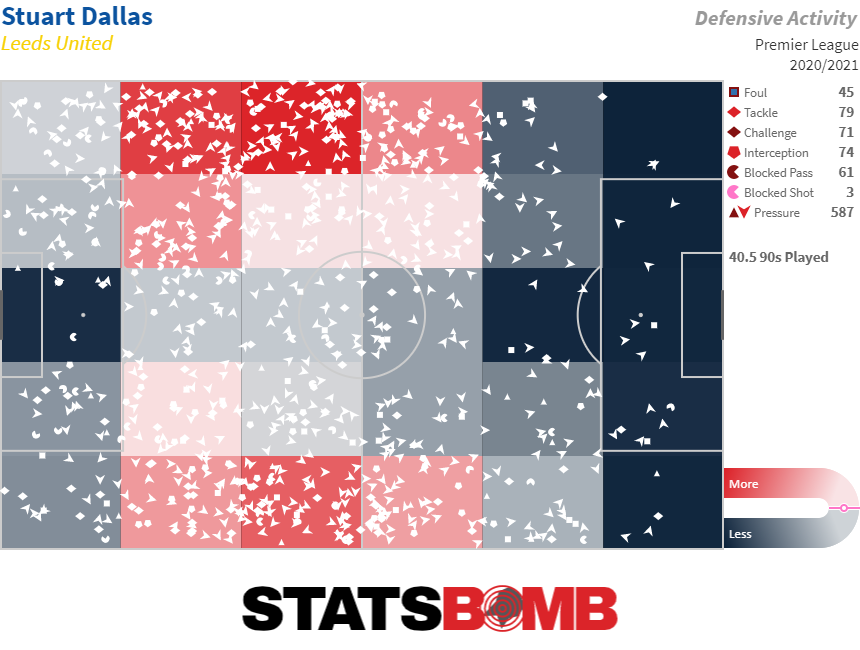
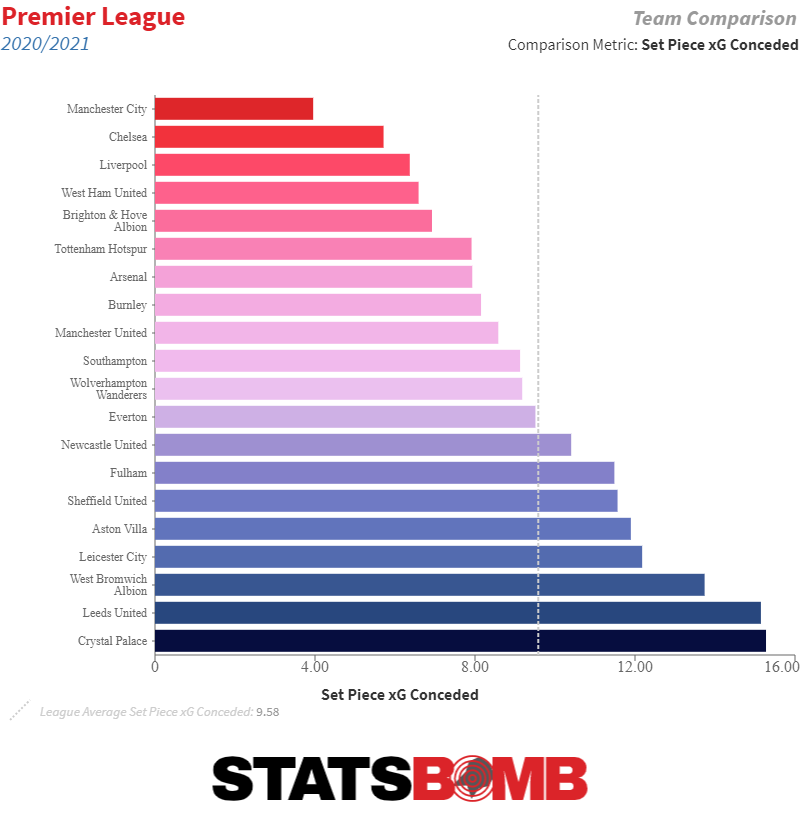
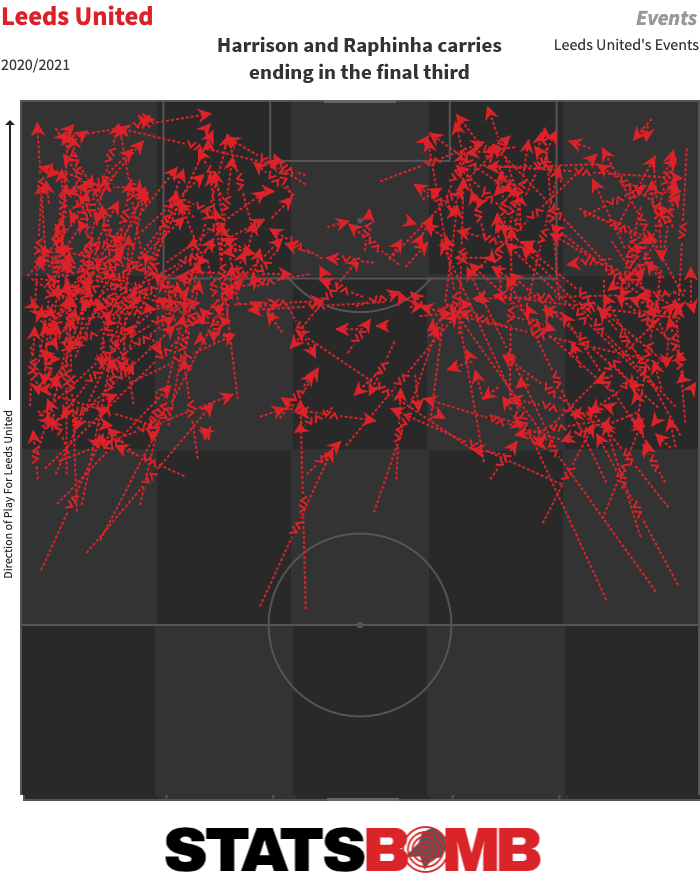
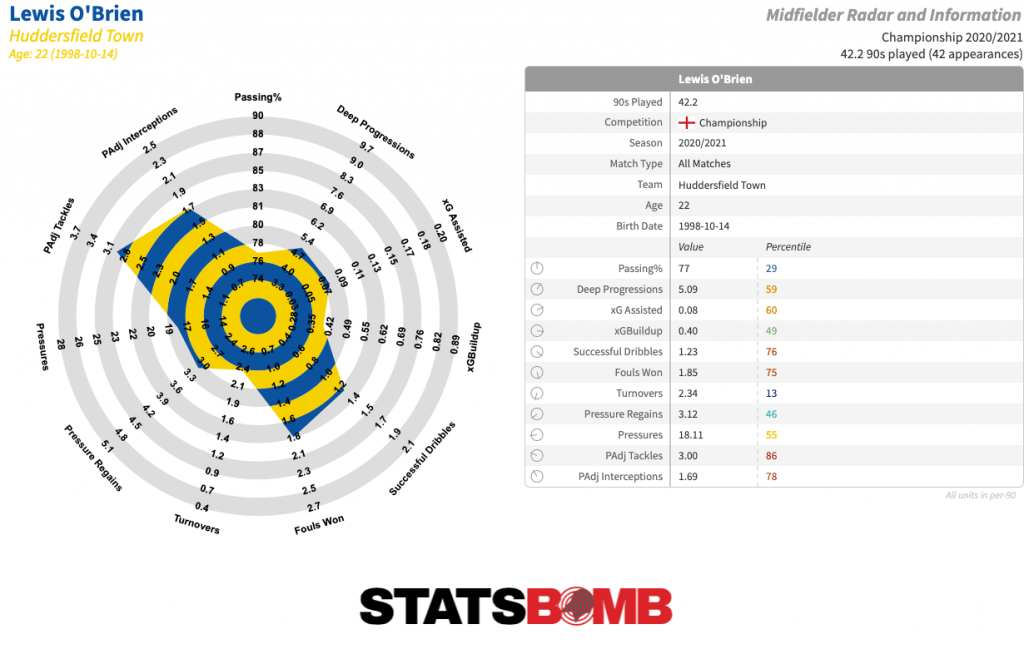
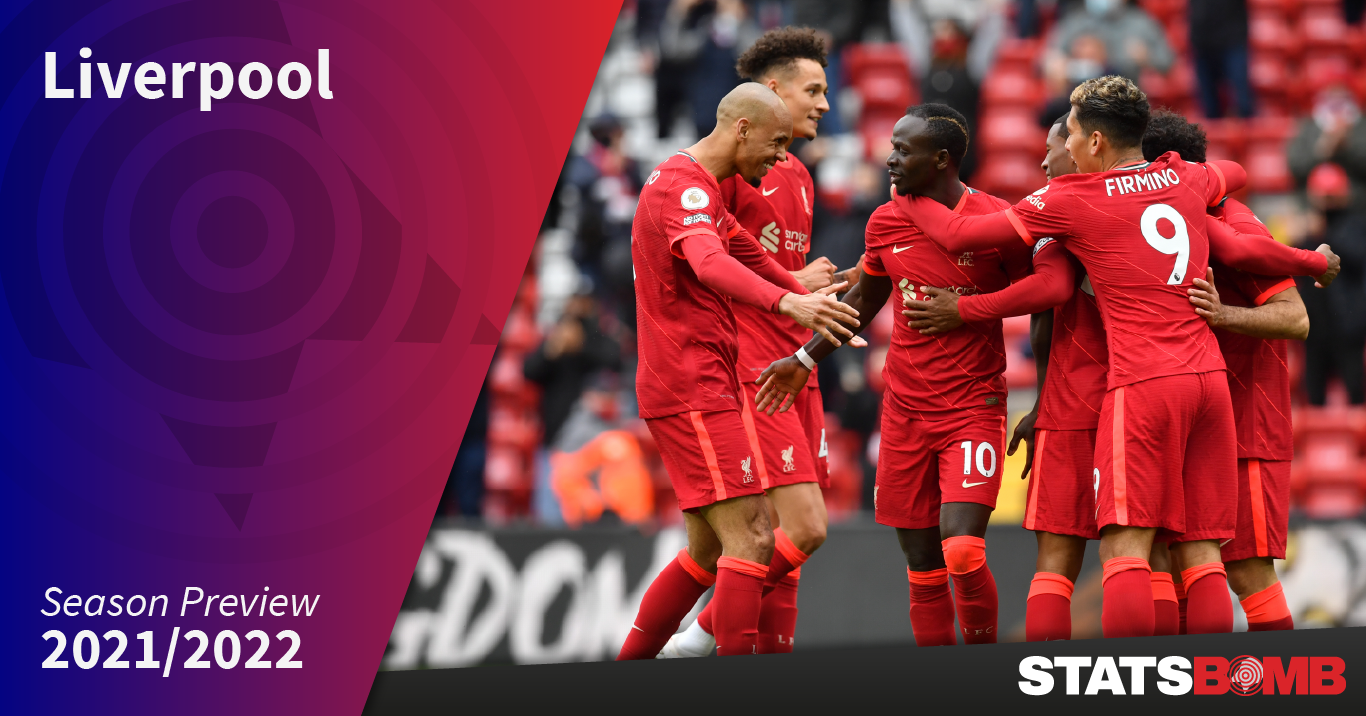

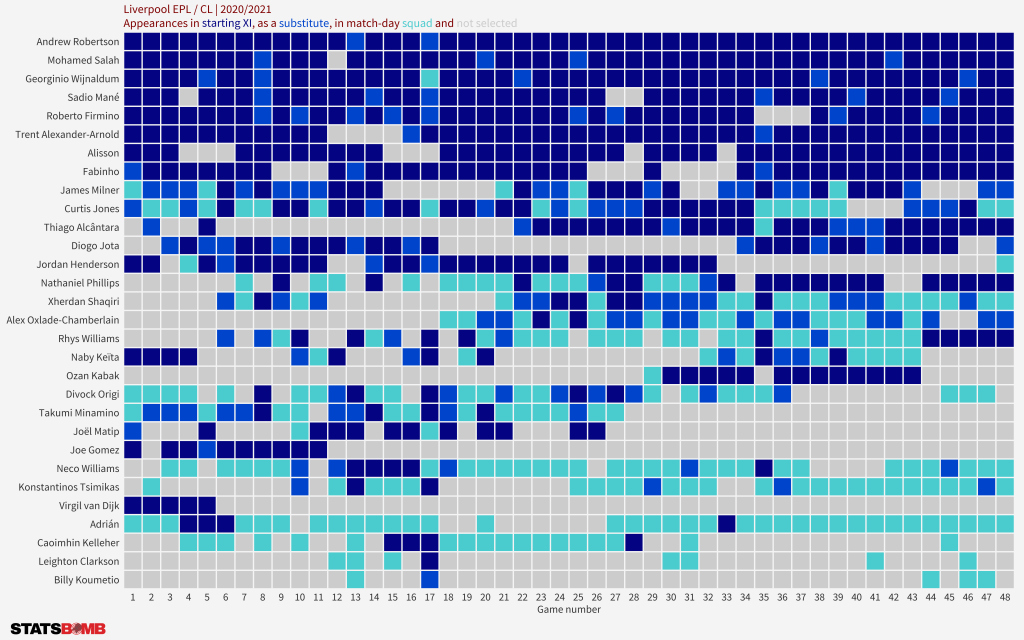
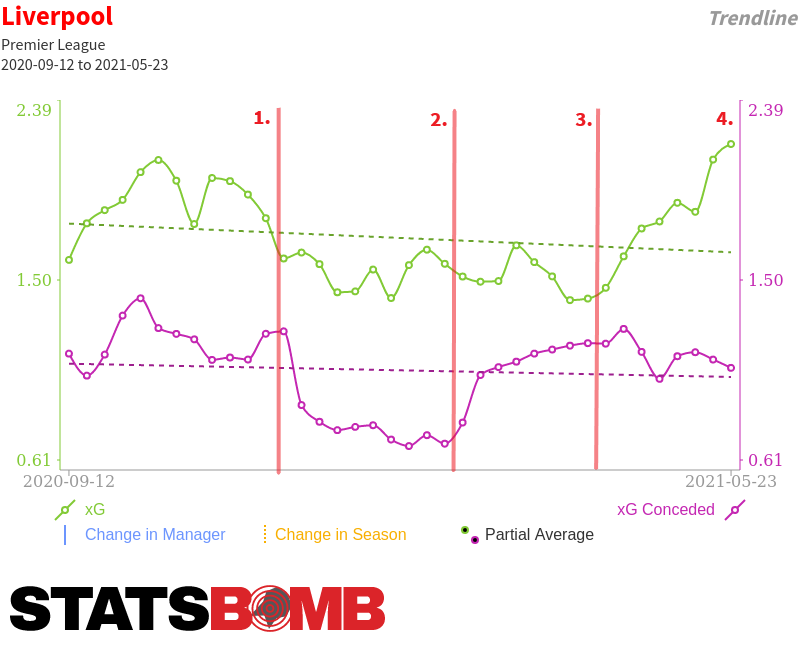
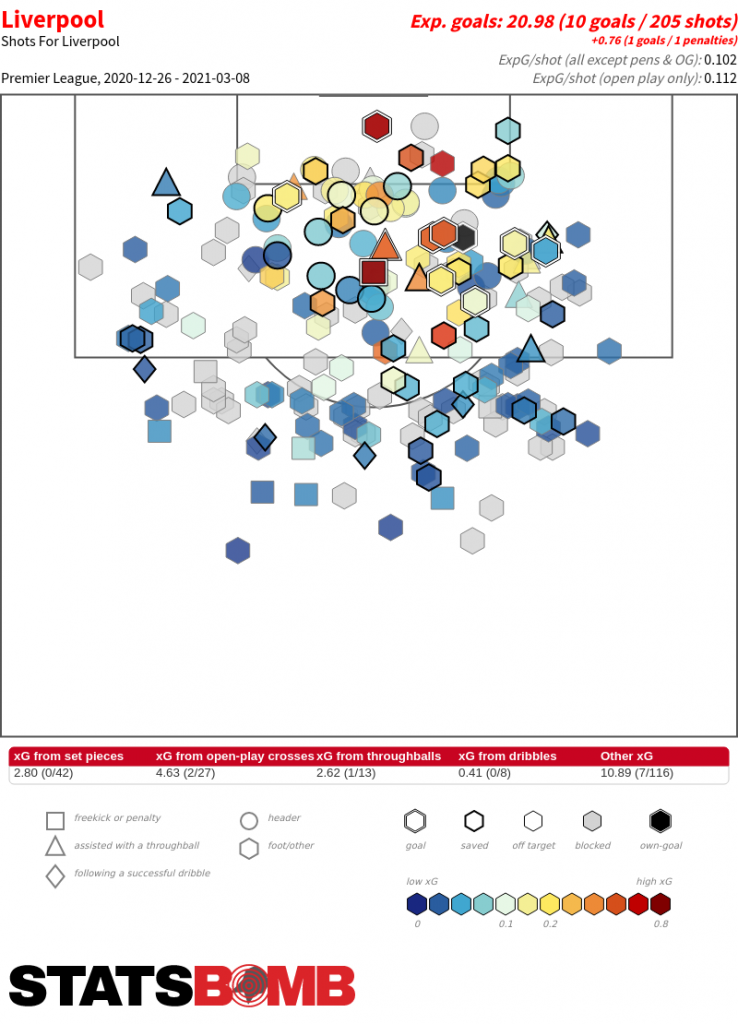
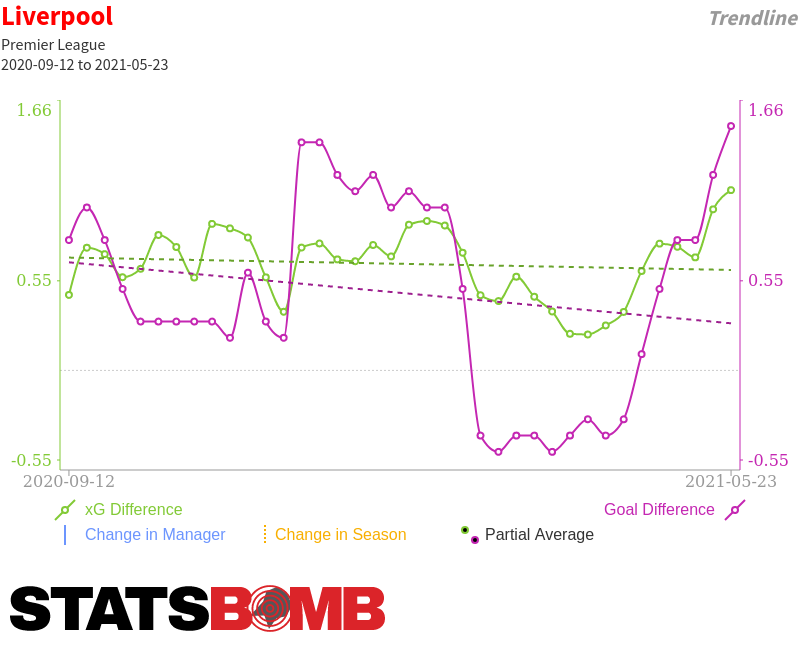

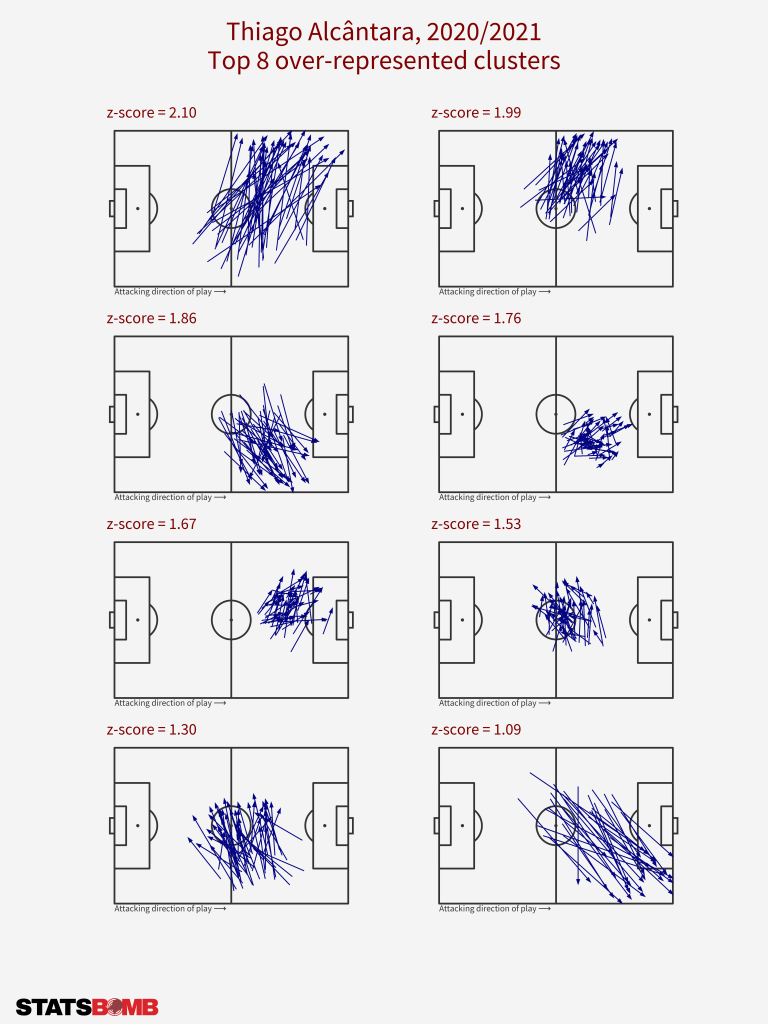
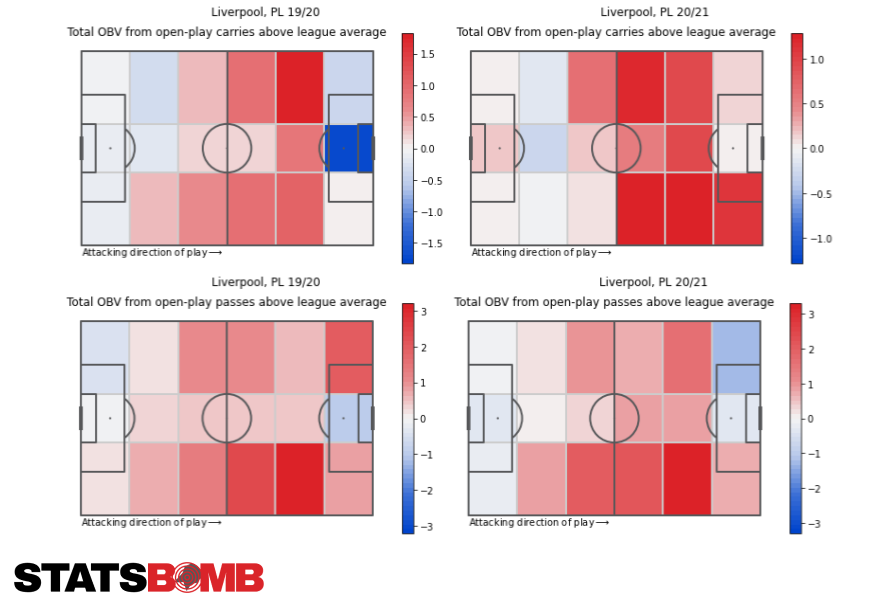


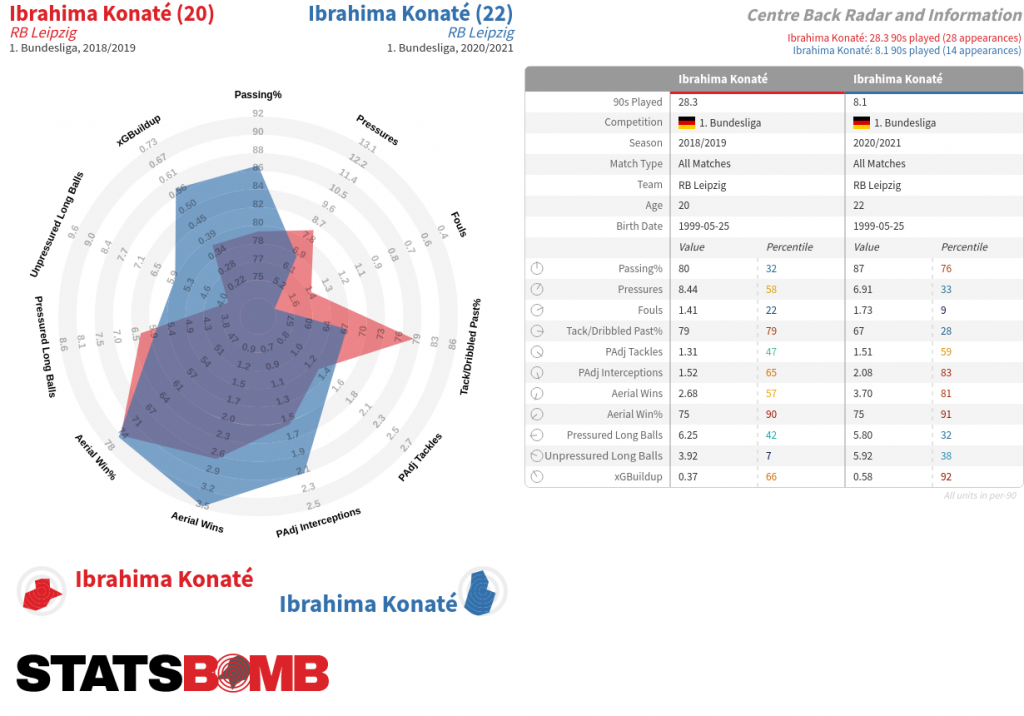
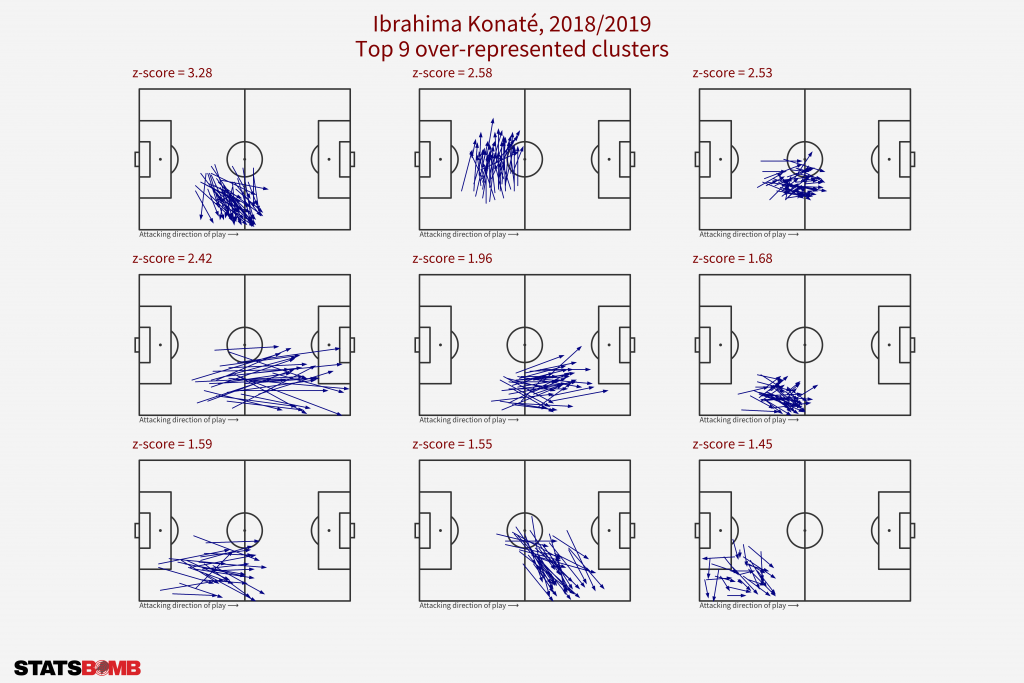
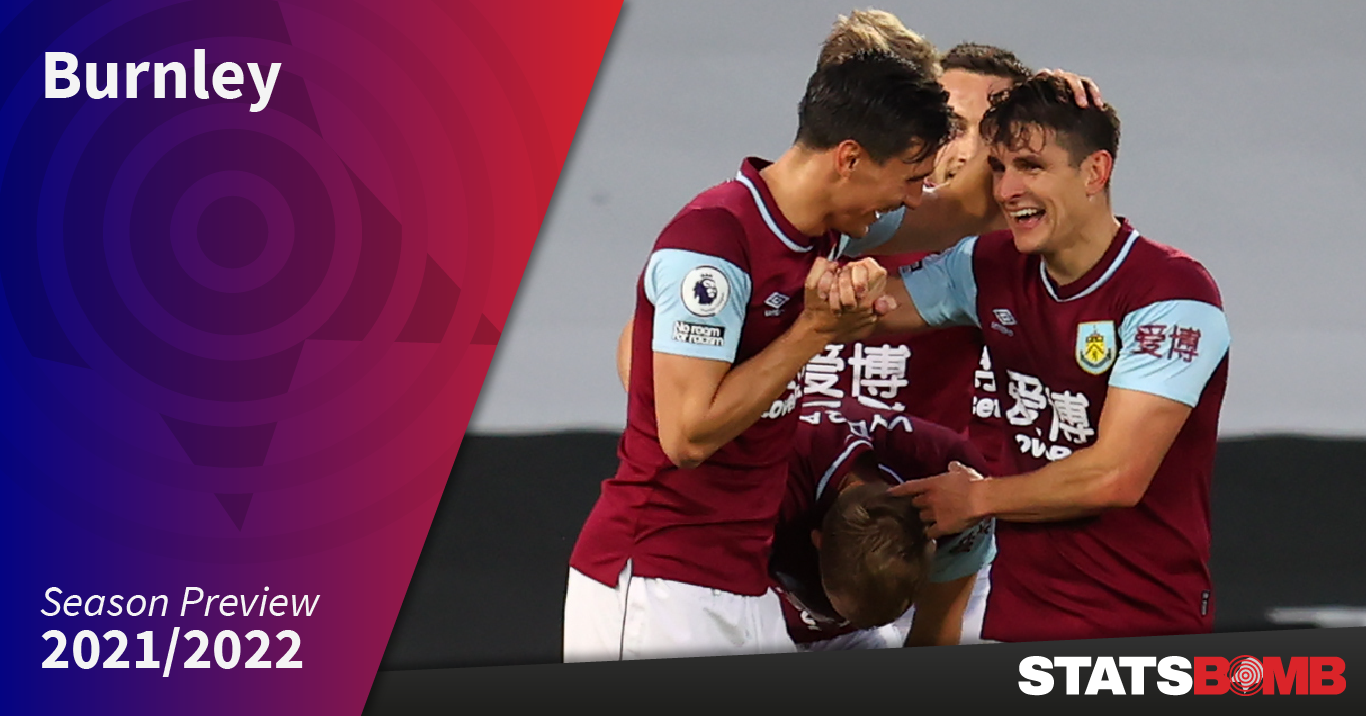
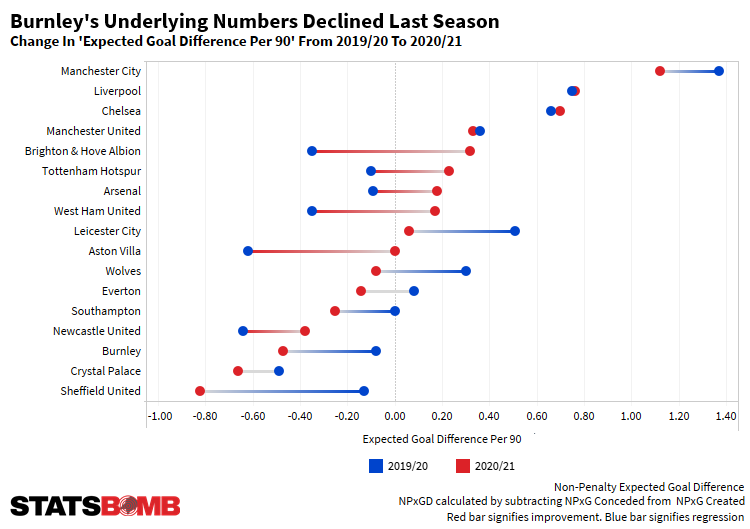 They lost 0.10 expected goals per game in attack equating to ~four goals a season, fairly negligible but still a knock, but the biggest concerns emerged at the back. You can see below that 2019/20 was a significant step forward on what came before for the team, mainly cutting out the games where they got tonked. The differences between that impressive season and last season in the graphic are not exactly apparent to the naked eye, but that in itself could perhaps be a larger red flag. Look closely. In 2019/20, the cluster of games to the right of the trendline represents games where Burnley edged out close games by xG, a valuable skill for a team trying to avoid danger. In 2020/21, a lot of games shifted both left (creating less) and up (conceding more). You can make excuses if it's a handful of really bad games making the difference, but this seemed to be a collective shift down in their performance levels. Their defence was -0.29 expected goals per game worse off than the season prior and, with the -0.10 shaved off the attack, it worked out to a ~15 goal regression over the whole season. The sort of sum that forces a team down the table--and it did.
They lost 0.10 expected goals per game in attack equating to ~four goals a season, fairly negligible but still a knock, but the biggest concerns emerged at the back. You can see below that 2019/20 was a significant step forward on what came before for the team, mainly cutting out the games where they got tonked. The differences between that impressive season and last season in the graphic are not exactly apparent to the naked eye, but that in itself could perhaps be a larger red flag. Look closely. In 2019/20, the cluster of games to the right of the trendline represents games where Burnley edged out close games by xG, a valuable skill for a team trying to avoid danger. In 2020/21, a lot of games shifted both left (creating less) and up (conceding more). You can make excuses if it's a handful of really bad games making the difference, but this seemed to be a collective shift down in their performance levels. Their defence was -0.29 expected goals per game worse off than the season prior and, with the -0.10 shaved off the attack, it worked out to a ~15 goal regression over the whole season. The sort of sum that forces a team down the table--and it did. 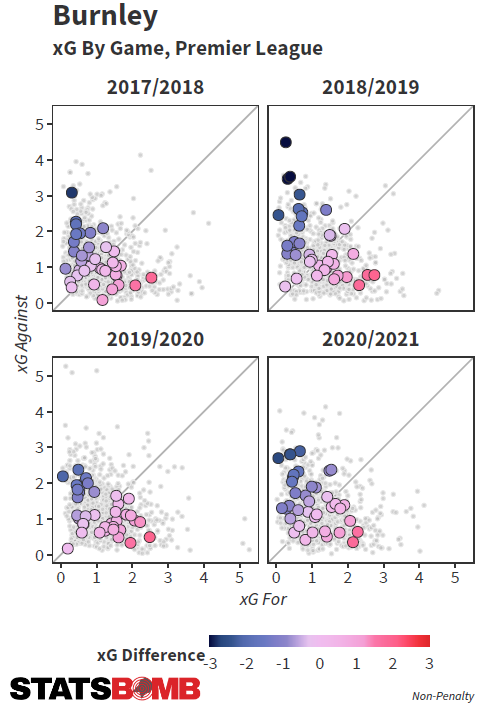 However, there is some context that needs to be applied here. Dyche regards last season as his most challenging yet in their Premier League stint. They came into the season having spent just £1million on third-choice ‘keeper Will Norris and backup midfielder Dale Stephens. Then they had to contend with injuries in the opening sequence of games: the back four in their opening day 4-2 defeat to Leicester was (right-to-left) Phil Bardsley, Kevin Long, Jimmy Dunne, and Charlie Taylor. James Tarkowski returned in game three and Ben Mee followed in game seven, but the damage had already been done: Burnley had just two points from their opening seven fixtures. The season was bookended with poor form—a W0 D2 L5 run to start, a W2 D0 L7 run to finish. But, the middle two-thirds should serve as encouragement ahead of next season. A W8 D7 L7 record works out to 1.41 points-per-game: bang on the 54 points they got the season before when extrapolated over a whole season and considering they won't have the off-field uncertainty surrounding the takeover, nor the condensed schedule to contend with, and maybe we shouldn’t be so worried about Burnley after all. Survival remains objective number one, and it was mission accomplished once again. They can't learn from it if they don't dig into what caused this decline on the pitch, so let's wield our spades on their behalf. Given their approach and mentality, the defence is where we need to examine. xG conceded per game rose from 1.17 to 1.46--where did those additional 0.29 expected goals per game come from? The biggest factor in this change was in the quality of the chances they conceded – something Burnley have notoriously thrived at. Their xG per shot conceded was 0.08 in 2019/20, 2nd-best in the league, but increased to 0.10 xG per shot conceded last season, putting them at league average. Burnley have previously opted to soak up a lot of shots while suppressing the quality of them, but they struggled with the latter last campaign. The main cause of this was that the opposition were allowed to shoot from much closer to goal than previously. There were times in 2019/20 where Burnley's low block was straight up impenetrable and their opponent's resorted to launching missiles from range in an attempt to break them out of their shell. Their opponents shot distance from goal was 17.0 metres away on average, the furthest in the league that season. This dropped to 16.4 metres in 2020/21, a small but not-insignificant change that was a big cause of the bump in their xG per shot conceded. Closer shots equals better shots. Burnley were trying the same out of possession techniques - pressing high in the first phase but then dropping right off should the opposition begin to advance - but were unable to maintain the same intensity required when bunkering, largely due to the intense schedule. It always surprises people to learn that Burnley's Defensive Distance - the average distance from their goal that they make defensive actions - has always been pretty high: behind only Manchester City and Liverpool in 2019/20, and the same pair plus Chelsea in 2020/21. They press the opposition from goal kicks and from turnovers in their attacking third, but soon sink into their defensive shape once the opposition starts to enter their half of the pitch.
However, there is some context that needs to be applied here. Dyche regards last season as his most challenging yet in their Premier League stint. They came into the season having spent just £1million on third-choice ‘keeper Will Norris and backup midfielder Dale Stephens. Then they had to contend with injuries in the opening sequence of games: the back four in their opening day 4-2 defeat to Leicester was (right-to-left) Phil Bardsley, Kevin Long, Jimmy Dunne, and Charlie Taylor. James Tarkowski returned in game three and Ben Mee followed in game seven, but the damage had already been done: Burnley had just two points from their opening seven fixtures. The season was bookended with poor form—a W0 D2 L5 run to start, a W2 D0 L7 run to finish. But, the middle two-thirds should serve as encouragement ahead of next season. A W8 D7 L7 record works out to 1.41 points-per-game: bang on the 54 points they got the season before when extrapolated over a whole season and considering they won't have the off-field uncertainty surrounding the takeover, nor the condensed schedule to contend with, and maybe we shouldn’t be so worried about Burnley after all. Survival remains objective number one, and it was mission accomplished once again. They can't learn from it if they don't dig into what caused this decline on the pitch, so let's wield our spades on their behalf. Given their approach and mentality, the defence is where we need to examine. xG conceded per game rose from 1.17 to 1.46--where did those additional 0.29 expected goals per game come from? The biggest factor in this change was in the quality of the chances they conceded – something Burnley have notoriously thrived at. Their xG per shot conceded was 0.08 in 2019/20, 2nd-best in the league, but increased to 0.10 xG per shot conceded last season, putting them at league average. Burnley have previously opted to soak up a lot of shots while suppressing the quality of them, but they struggled with the latter last campaign. The main cause of this was that the opposition were allowed to shoot from much closer to goal than previously. There were times in 2019/20 where Burnley's low block was straight up impenetrable and their opponent's resorted to launching missiles from range in an attempt to break them out of their shell. Their opponents shot distance from goal was 17.0 metres away on average, the furthest in the league that season. This dropped to 16.4 metres in 2020/21, a small but not-insignificant change that was a big cause of the bump in their xG per shot conceded. Closer shots equals better shots. Burnley were trying the same out of possession techniques - pressing high in the first phase but then dropping right off should the opposition begin to advance - but were unable to maintain the same intensity required when bunkering, largely due to the intense schedule. It always surprises people to learn that Burnley's Defensive Distance - the average distance from their goal that they make defensive actions - has always been pretty high: behind only Manchester City and Liverpool in 2019/20, and the same pair plus Chelsea in 2020/21. They press the opposition from goal kicks and from turnovers in their attacking third, but soon sink into their defensive shape once the opposition starts to enter their half of the pitch. 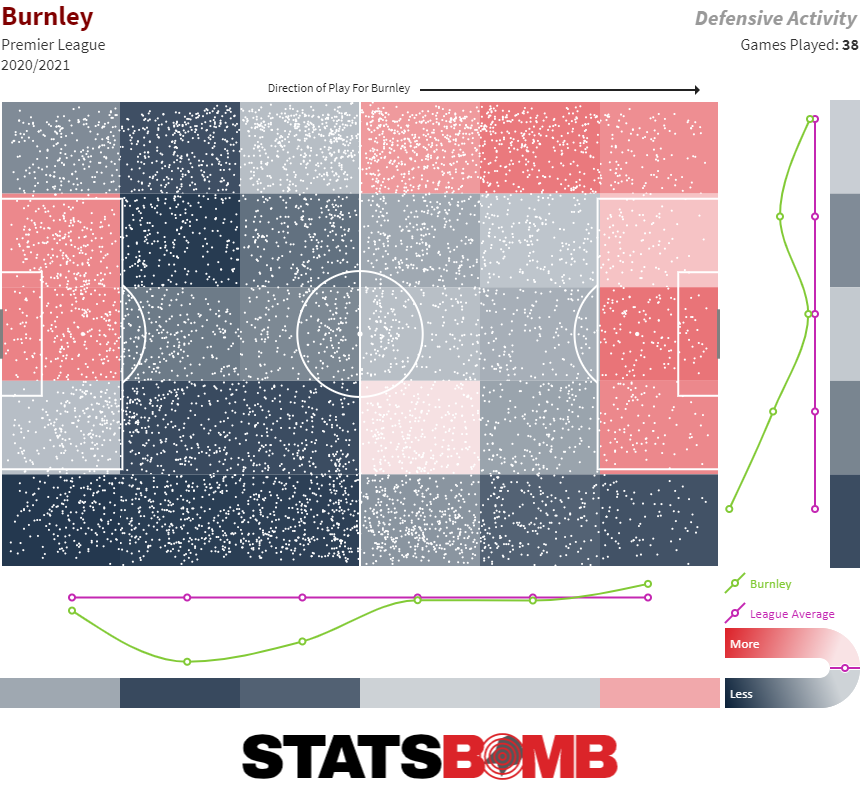 Simply, they just lacked the energy to disrupt the opposition in 2020/21. The percentage of opposition pass receipts that were pressured, tackled or fouled within two seconds dropped from 20% to 16%. Burnley have always been towards the lower end of these rankings in previous seasons, but the lost intensity clearly harmed their overall effectiveness in disrupting the opponent’s build-up and chance creation.
Simply, they just lacked the energy to disrupt the opposition in 2020/21. The percentage of opposition pass receipts that were pressured, tackled or fouled within two seconds dropped from 20% to 16%. Burnley have always been towards the lower end of these rankings in previous seasons, but the lost intensity clearly harmed their overall effectiveness in disrupting the opponent’s build-up and chance creation. 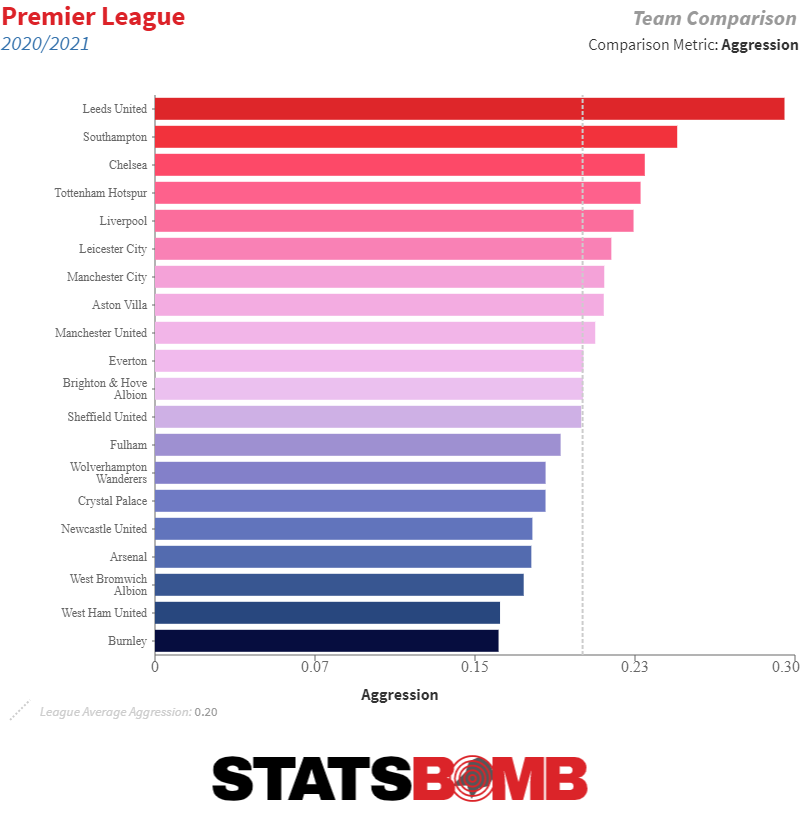 Load up the trebuchet! In possession, Burnley continued to Burnley. Their top-five most commonly used pass clusters will be familiar to regular observers:
Load up the trebuchet! In possession, Burnley continued to Burnley. Their top-five most commonly used pass clusters will be familiar to regular observers: 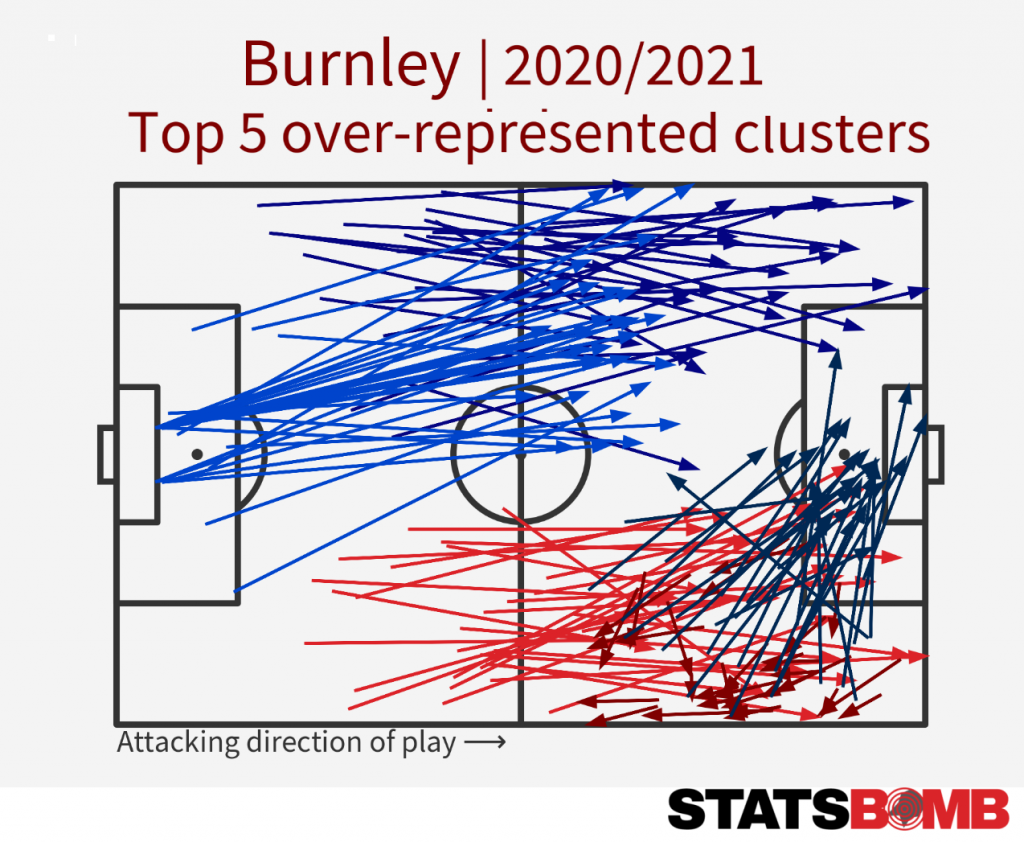 Plenty of long, high passes into the opposition half and attacking third and, once they're in there, plenty of crosses from the flank. We can see those patterns of play when examining the nine most over-represented pass clusters plotted individually:
Plenty of long, high passes into the opposition half and attacking third and, once they're in there, plenty of crosses from the flank. We can see those patterns of play when examining the nine most over-represented pass clusters plotted individually: 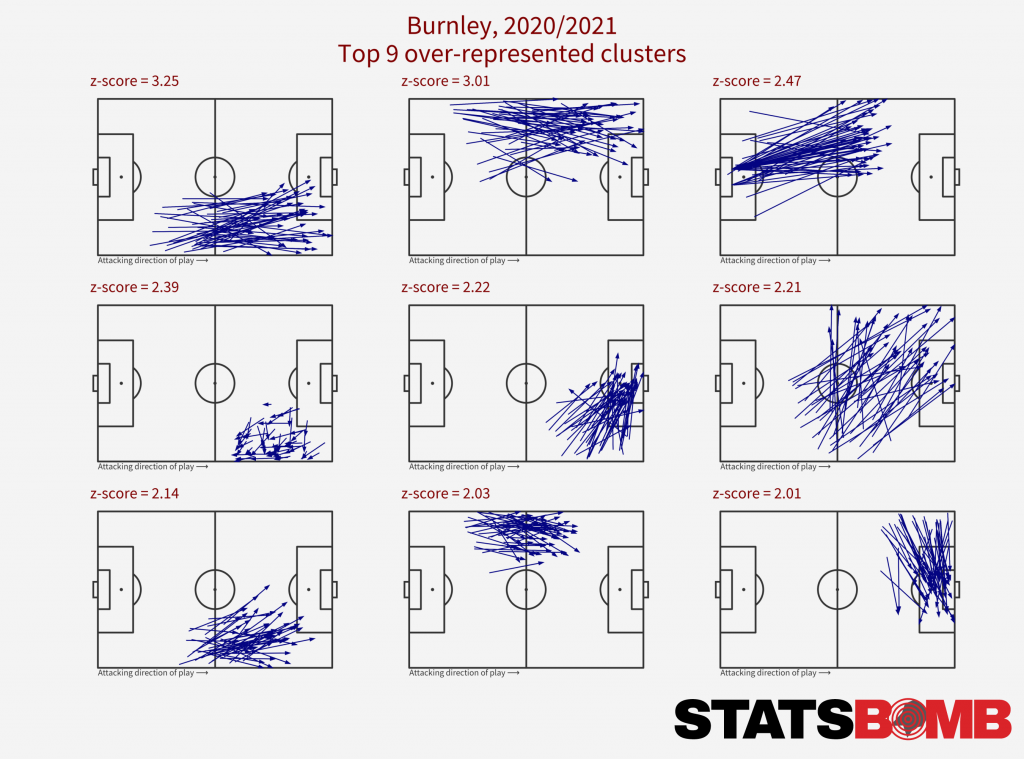 Cluster #6 is the only pass of any real range played from the middle third, and this can mostly be attributed to Ashley Westwood. Westwood’s become a steady, unheralded Premier League performer but his importance to Burnley shouldn’t go without saying. He made the most open play passes in the squad, played the ball into the final third most often, made the most passes into the penalty box in open play, AND made the most open play key passes. He clearly has the best passing range in the team, a vital attribute to the Clarets when they do need to play through the middle third, and completed by far the most switches of play of his Burnley teammates.
Cluster #6 is the only pass of any real range played from the middle third, and this can mostly be attributed to Ashley Westwood. Westwood’s become a steady, unheralded Premier League performer but his importance to Burnley shouldn’t go without saying. He made the most open play passes in the squad, played the ball into the final third most often, made the most passes into the penalty box in open play, AND made the most open play key passes. He clearly has the best passing range in the team, a vital attribute to the Clarets when they do need to play through the middle third, and completed by far the most switches of play of his Burnley teammates. 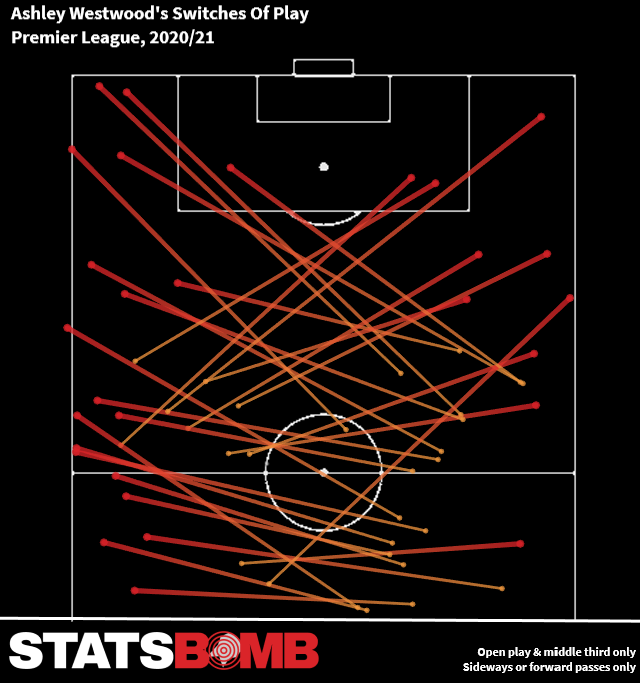 What I’m about to say next may shock you*, so make sure you're sitting down: Burnley played the most high-passes in the league, both in absolute terms and as a percentage of their total passes. Of their passes into the final third, 44% of them were high-passes - a league-high -, and the value of those passes are captured in our new possession value model,
What I’m about to say next may shock you*, so make sure you're sitting down: Burnley played the most high-passes in the league, both in absolute terms and as a percentage of their total passes. Of their passes into the final third, 44% of them were high-passes - a league-high -, and the value of those passes are captured in our new possession value model, 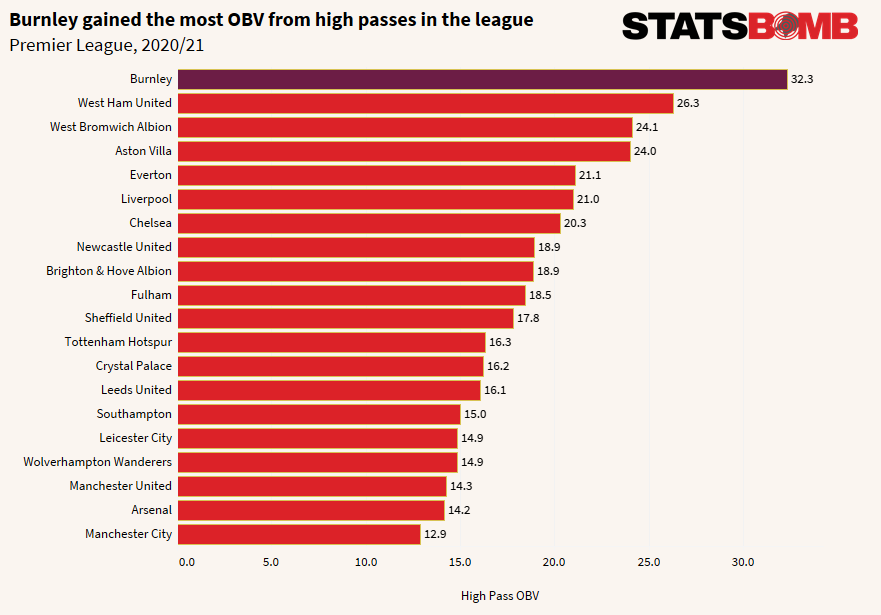 And their danger from crosses remained. Unlike most teams in the modern era, they’re not as bothered about crossing from closer to the byline and the goal in general. Instead, Burnley look to get the ball into the mixer much faster, with Chris Wood, Ashley Barnes, and Matěj Vydra all well attuned to attacking the early balls into the box.
And their danger from crosses remained. Unlike most teams in the modern era, they’re not as bothered about crossing from closer to the byline and the goal in general. Instead, Burnley look to get the ball into the mixer much faster, with Chris Wood, Ashley Barnes, and Matěj Vydra all well attuned to attacking the early balls into the box. 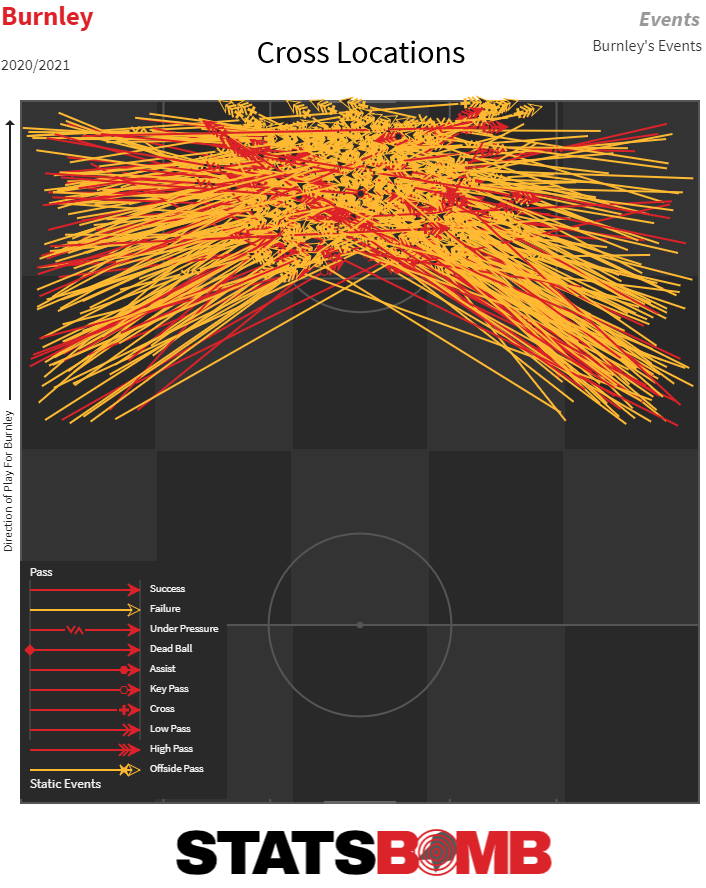 Crossing from deep can be more difficult to execute, but it does have its upsides. Because Burnley get the ball forward so quickly (their Pace To Goal of 3.04 m/s was second only to West Ham), they’re often able to attack against unset defences, meaning their attackers can often have more space and less competition to attack the ball when it’s played into the box. Thanks to
Crossing from deep can be more difficult to execute, but it does have its upsides. Because Burnley get the ball forward so quickly (their Pace To Goal of 3.04 m/s was second only to West Ham), they’re often able to attack against unset defences, meaning their attackers can often have more space and less competition to attack the ball when it’s played into the box. Thanks to 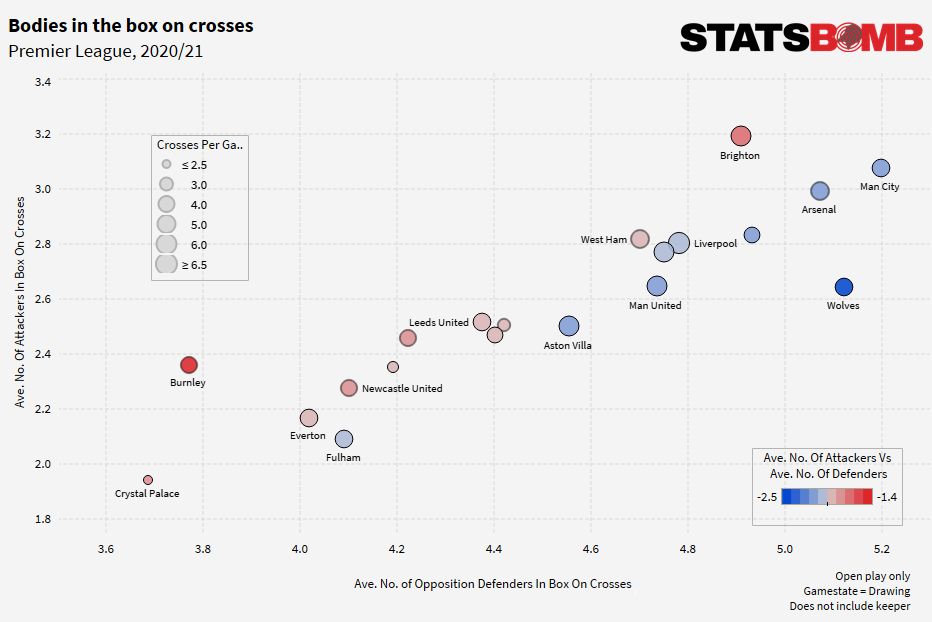 Knowing Burnley as we do, we can expect the same again next season. Likewise, we can expect the same playing squad. Dyche's squadron has been together for several seasons now, with very little surgery performed in the last few transfer windows. Cohesive, yes, but the squad's age profile is starting to veer dangerously close to post-peak territory, where we can start to expect a simultaneous decline in performances from several key members of the squad. Some botox is required sooner rather than later. Dwight McNeil and Josh Brownhill were the only players below the league average age to play a significant number of minutes.
Knowing Burnley as we do, we can expect the same again next season. Likewise, we can expect the same playing squad. Dyche's squadron has been together for several seasons now, with very little surgery performed in the last few transfer windows. Cohesive, yes, but the squad's age profile is starting to veer dangerously close to post-peak territory, where we can start to expect a simultaneous decline in performances from several key members of the squad. Some botox is required sooner rather than later. Dwight McNeil and Josh Brownhill were the only players below the league average age to play a significant number of minutes. 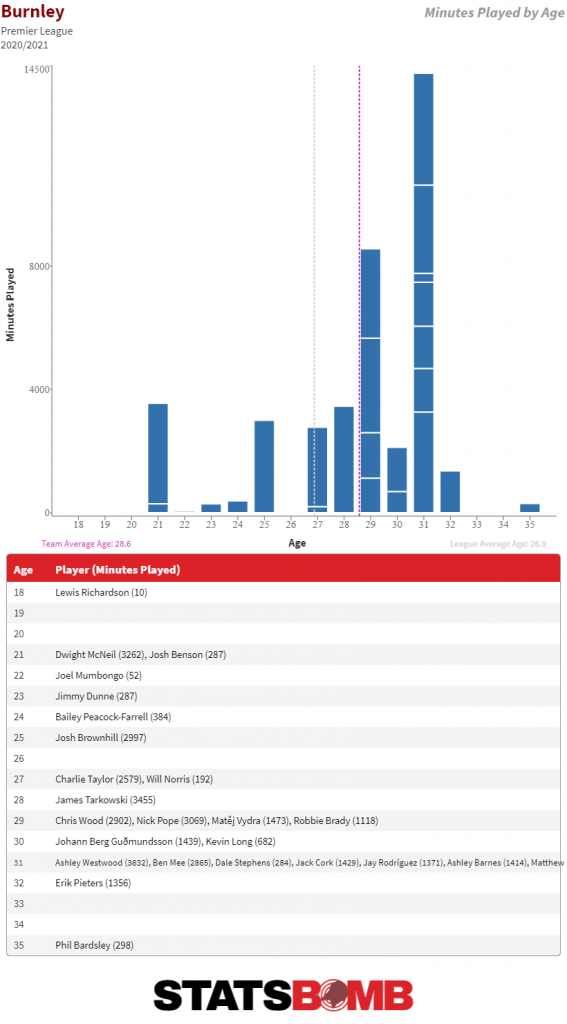 You have to go all the way down to their 16th most-used player last season, Robbie Brady, to find one who has left the club this summer. This is no bad thing in a squad full of dependable performers, but the sense that some fresh blood is required is most certainly there. In transfer news, Wayne Hennessey’s signed as ‘keeper cover, but the main (and only other) signing has been that of Irish beanpole Nathan Collins from Stoke, a signing that does start to provide a solution to their age problem. A promising centre-half who’s impressed in significant Championship minutes, Collins represents an heir to the throne of Tarkowski and Mee, and will shadow them for minutes in the middle of the defence next season, but also at right back as he integrates into the squad. Projection In context, there’s no reason to think Burnley should perform any worse than they did last season, which was enough to stay up albeit not much more. With a more relaxed schedule and more stability off the field, they should be able to get back to what they do best, but question marks remain over whether an aging squad can implement Dyche’s gameplan with the required energy levels-- something that cost them defensively last season, as described earlier in the piece. The betting markets have benchmarked them for a repeat of the 39 points accrued in 2020/21, 16th in the market and in the mix with the promoted sides plus Newcastle and Palace, and without any major (or even minor) investment in the squad, that feels fair. Survival is the aim, again.
You have to go all the way down to their 16th most-used player last season, Robbie Brady, to find one who has left the club this summer. This is no bad thing in a squad full of dependable performers, but the sense that some fresh blood is required is most certainly there. In transfer news, Wayne Hennessey’s signed as ‘keeper cover, but the main (and only other) signing has been that of Irish beanpole Nathan Collins from Stoke, a signing that does start to provide a solution to their age problem. A promising centre-half who’s impressed in significant Championship minutes, Collins represents an heir to the throne of Tarkowski and Mee, and will shadow them for minutes in the middle of the defence next season, but also at right back as he integrates into the squad. Projection In context, there’s no reason to think Burnley should perform any worse than they did last season, which was enough to stay up albeit not much more. With a more relaxed schedule and more stability off the field, they should be able to get back to what they do best, but question marks remain over whether an aging squad can implement Dyche’s gameplan with the required energy levels-- something that cost them defensively last season, as described earlier in the piece. The betting markets have benchmarked them for a repeat of the 39 points accrued in 2020/21, 16th in the market and in the mix with the promoted sides plus Newcastle and Palace, and without any major (or even minor) investment in the squad, that feels fair. Survival is the aim, again. 